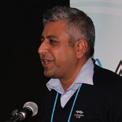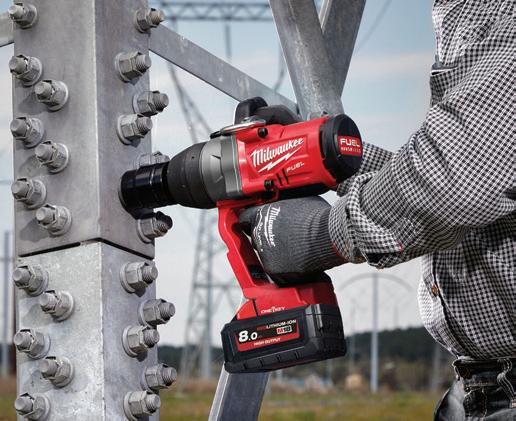








Accurately predict pipe breaks and inform future maintenance and repair plans.
Use computer vision technology to identify cracks and anomalies in pipe CCTV footage.
Compliance with authority codes
24/7 assessment
Concise classified defect report generated at completion of analysis
Ability to apply expert classification and further train the model as the database builds
Global application - applicable to any pipe material
Leverage predictions to budget funds for inspection works $
Detect up to 15% more defects than a manual review
Detect anomalies faster and fix infrastructure sooner
Action insights more often
Streamline pipe asset management operations
More capacity for complex analytical tasks
1. TRAIN
Drafting and planning systems more accurately to achieve desired functions
Piping vibration, thermal and stress analysis
Sourcing more valuable engineering solutions
More thorough site inspections
2. DETECT
Trains the model to identify defect classifications. Uses AI to review CCTV footage of pipes to identify cracks and anomalies.



3. REPORT
Generates a concise defect report to inform future maintenance plans or repair schedules.
4. PREDICT
Analyses current and historical data to make predictions about future pipe failures.
www.pipeai.com.au
enquiries@pipeai.com.au

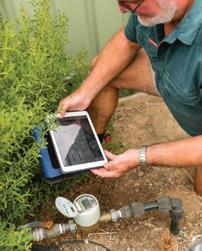

ith the commencement of Australia’s vaccine rollout, in-person events are slowly making their way back into our lives, yet virtual conferences continue to be an important part of the event landscape. Utility’s flagship event, Digital Utilities, took place between 16–24 March 2021, and over 600 delegates registered to watch the summit live, or with the intention of watching the presentation recordings at their leisure.
The event consisted of four virtual conferences, diving deep into some of the critical challenges and focus areas for the sector, and providing delegates with genuine learning opportunities from some of the best and brightest minds across Australia (and the world!).
Transitioning away from the current linear model of ‘take, make and dispose’ towards a circular economy – one that uses resources efficiently, prioritises renewable inputs, maximises a product’s lifetime, and captures and repurposes what was previously regarded as waste – can reduce the pressure on resources and help decarbonise a range of sectors, while providing a strategic and effective way to identify both cost-saving and value-creation opportunities.
2203-2797
If you didn't sign up for the event, you can still get immediate access to all the video presentations, speaker slides (where available) and the networking platform by registering for an on demand ticket – not only does the event platform allow you to watch the sessions at a time that suits you, it also enables you to connect with a community of industry professionals. Visit www.digitalutilities.com.au/tickets to register.
On the topic on digital transformation, in this edition of Utility, you can read about the start of GWMWater’s journey to becoming an advanced digital utility through the launch of its Customer Portal, which provides customers with more information about their water supply than ever before.
Available on various electronic devices, the portal allows customers to view recent and historical water use and set up automatic alerts to notify them of high usage or leaks. The first iteration of the portal was made available to rural customers in 2016, with portal functionality now extended to over 10,000 urban customers.
The portal and associated smart meter infrastructure is playing a key role in helping GWMWater get in front of potential leaks and secure water supplies for Victoria’s Grampians, Wimmera and Mallee regions now and into the future.
The COVID-19 pandemic has accelerated a host of transformative trends, such as remote working, automation and digitisation, however urgent action is required to mitigate the intensifying challenges brought on by climate change – which also threatens water security.
Utilities have the potential to play a huge role in the development of a circular economy, and our feature article explores the role of utilities in moving from business models that prioritise resource drain to ones that value resource gain, and some of the projects and initiatives already underway.
Emissions reduction is a key focus area for the energy sector, however higher levels of renewable generation are making it increasingly difficult to prevent blackouts. The combination of increasing load and supply variations of utilityscale, weather-dependent generation, as well as an aging thermal generation fleet, exacerbates the security issue.
At the beginning of 2021, the Energy Security Board handed down its 2020 Health of the National Electricity Market (NEM) report, the fourth annual report measuring the health of the NEM against six strategic energy objectives. Utility journalist, Imogen Hartmann, breaks down the report, and examines the areas of reform needed to address the major challenges facing the NEM – the most pressing of which is security.
Andrew Stiel from Edify Energy also shares insights from the Gannawarra Energy Storage System’s first year of operation. The Gannawarra Energy Storage System is a 25MW/50MWh lithium-ion battery that shares connection infrastructure with the 50MW Gannawarra Solar Farm, and Mr Stiel explores the risks and benefits of co-locating batteries and renewables.
As in-person events make their tentative return, you’ll notice copies of Utility at OzWater, WIOA QLD and Australian Energy Week, among others still to be confirmed. We look forward to catching up with our readers and subscribers at these events, so please do drop by our stand and say hello.










istribution networks are striving to deliver new and better services at the lowest cost to support the renewable energy transformation. Distribution system operation is evolving and is critical to a smart energy future. But what does this look like in practice?
It’s all too easy for us to start drawing exciting diagrams on whiteboards about future energy systems. At the risk of getting in trouble with my fellow engineers, designing and implementing solutions are generally the easy part. The truly hard part is first coming up with the objectives to deliver what customers need in the long term.
Customers tell us “we want to maximise the benefits from our solar” or “we want our energy to be more sustainable”. It is from these ideas that the Distribution System Operator (DSO) is born.
We’ve only scratched the surface and we need customers to help us understand what changes to the electricity system mean to ordinary Australians.
Historically, the role of distribution network service providers (DNSPs) has been to transport electrons from point A (the very high voltage transmission system) to point B (customers). In a world where electricity went in one direction, this was straightforward.
Today, and increasingly in the world of tomorrow, where electricity goes in both directions at different times of the day and year in different amounts, it’s an entirely different proposition.
At its heart a DSO still performs the task of transporting electricity but in a more sophisticated way. All of this is made possible by increasingly active resources in homes and businesses such as solar and batteries.
The four basic functions of a DSO:
• Providing a safe and reliable service in a dynamic system – maintaining a safe and reliable service while optimising the supply and use of electricity in every second of every day
• Giving customers options for how they use the network – as we look further into the future where more and more customers seek to export energy back into the system or connect their electric vehicles, it becomes apparent that a one-size-fits-all energy transport service will no longer be fit for purpose
• Using pricing as a tool to get more from the existing network – pricing the use of the network is complex and requires careful consideration of equity, affordability and fairness. However, it can also be a powerful tool for getting more out of the existing network by, for example, dynamically signalling to electric vehicles when there is an abundance of solar energy in a neighbourhood for them to charge from
• Supporting the overall system – increasingly the things that happen in distribution networks have an impact on the overall system and the energy markets. By leveraging the capabilities above and collaborating with the Australian Energy Market Operator (AEMO), DSOs will be able to provide much more sophisticated support to the wider national electricity network
Australia doesn’t have the luxury or the ability to swap out our electricity system easily or quickly like an old battery. That is why DNSPs are adapting and innovating to ensure the existing network can be better utilised to deliver value to customers and exploring how the services customers receive now will need to change in the future.
We can and should continue to use the existing infrastructure we’ve already invested in while augmenting incrementally to accommodate new technologies – like pole top batteries – that are much cheaper than building more networks. We can do things smarter and more sustainably than we have in the past.


Envirosonic is a proven and powerful ultrasound system to control cyanobacteria in ponds, lakes and reservoirs without the use of chemicals

» Shear stress
» We control non-motile algae, which include all blue green algae at a higher rate than the reproduction rate.
» Can be installed in remote areas on solar pontoons, or with a small float near a mains power outlet.
» GSM is available.
» Envirosonic will save you money.
» Eliminates the use of toxic chemicals.
» Ultrasound is safe for all invertebrates, fish, animals, and plants.
- The powerful ultrasound waves between 15 and 50 kHz radiating out in a semicircle from the transducer at great speed subject the algae to extreme stress, causing the algal cells to collapse.
- The Envirosonic ES300 controls a semicircle area of 300 metres , with two units on a solar powered pontoon giving a 600 metre circle of control.
- The smaller ES50 unit mains powered controls an area of 50 metres semicircle, and is ideal for smaller pondages and fish stocked lakes
» Pulsed ultrasound
- Algae cell boundary layers become saturated with dissolved gases.
- Bubbles within the algae cells created by ultrasonic pressure collapse.
- Localised cellular cavitation from the ultrasound waves causes disruption of water molecules generating oxidising compounds... H2O2 and hydroxial radicals, which are short lived, but cause further disruption to algal cells.
We are the sole distributor for EnviroSonic in Australia. EnviroSonic ultrasound has been successfully installed in horticulture, aquaculture, potable water and settlement ponds at locations including: Westernport Water, Tas Water, Tuki Trout Farm, Wauchhope Treatment Utility, Bendigo Council, Huon Salmon, Steggles Chickens, Murrumbidgee Irrigation, SEQ Water, Coliban Water and Golf Courses.
CONTACT: Peter Harries M: 0411 733 473
E: prharries@bigpond.com
www.envirosonic.com.au

The climate is changing and so are we. In March 2021, WSAA released a climate change position for the urban water industry. The position seeks to outline the contributions of the urban water industry to meeting the challenges of climate change.
Australia and New Zealand will continue to experience ongoing changes to climate including more variable rainfall, more heat extremes, and more frequent and intense storms. The urban water industry is uniquely positioned to mitigate our impact on our climate, respond and adapt to the impacts of a changing climate on the delivery of our services, and improve the resilience of our communities and the environment in adapting to a changing climate.
Collaboration and partnership with customers, communities, Aboriginal and Torres Strait Islander peoples, the Mãori people, government stakeholders and other sectors will be key as we seek to meet these challenges.
The urban water industry will achieve net zero greenhouse gas emissions by 2050 and we are achieving net zero sooner where it aligns with customer expectations.
In addition, the urban water industry commits to:
• Reduce water loss in our networks and encourage efficient water use by our customers
• Build resilience in water infrastructure through holistic adaptation to climate change, including diversifying water sources and improving treatment processes
• Recognise the importance of cultural flows and benefits of integrating Indigenous knowledge and practice in water management
• Support green, cool and healthy environments
• Implement circular economy principles in our management of water, waste and energy
• Support healthy waterways to protect and restore ecological and community values
• Engage with customers and communities to achieve a balance between climate change action costs and outcomes, including respecting the needs of current and future generations
The urban water industry’s commitment to the 17 Sustainable Development Goals provides the framework for achieving these commitments.
Water utilities face different circumstances, capacity and capabilities to achieve these commitments. The industry will continue to work together and collaborate with our stakeholders to meet the challenges of a changing climate.

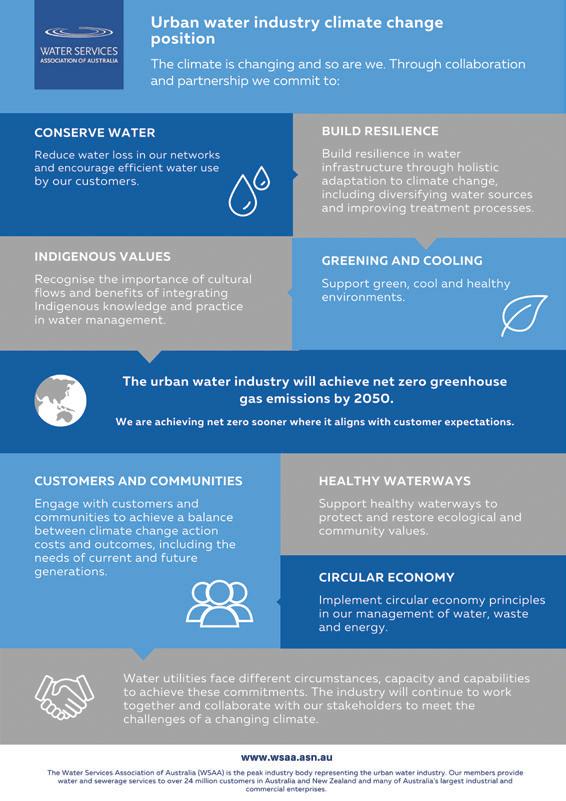
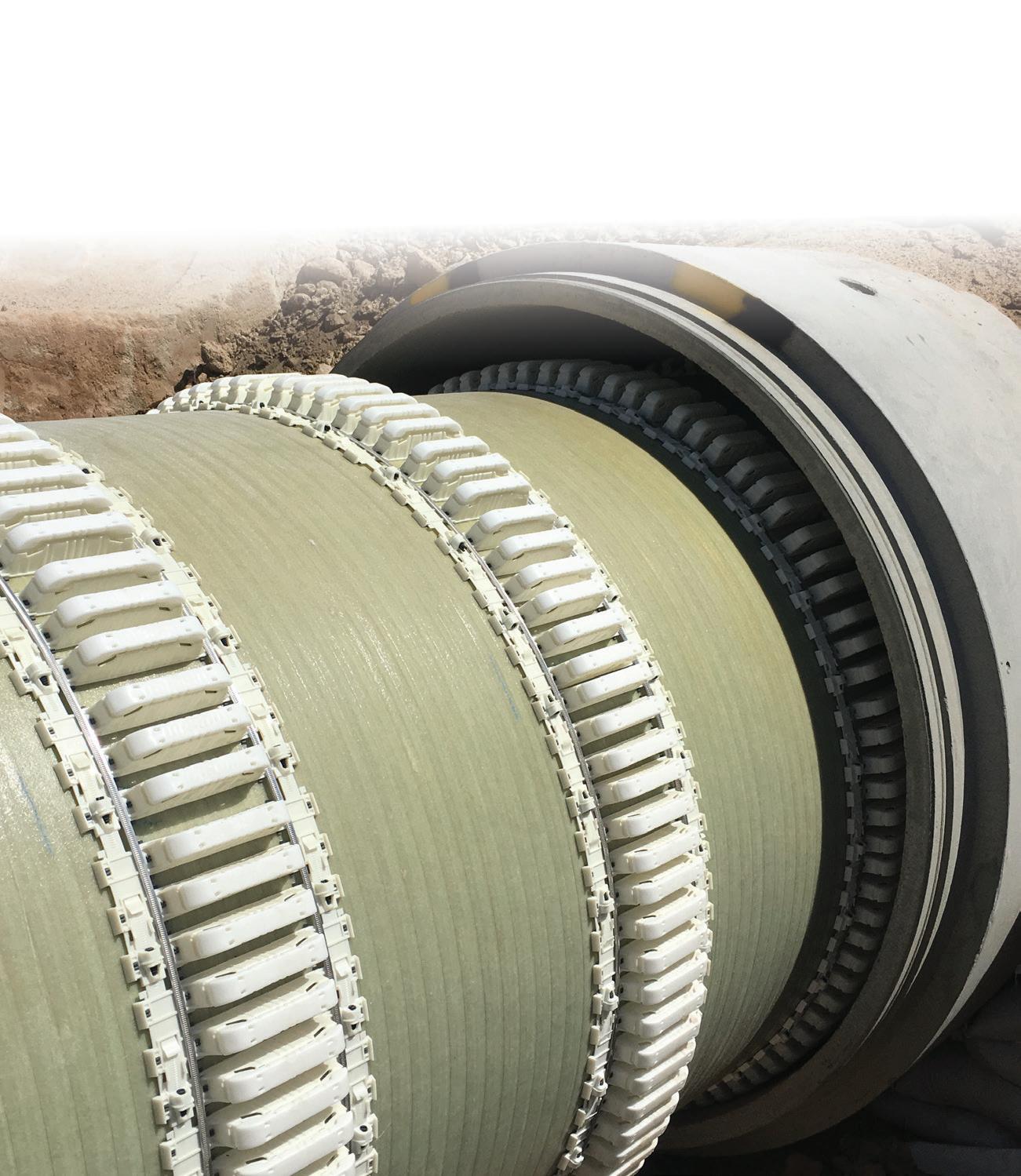
To read the full position go to: https://www.wsaa.asn.au/ publication/wsaa-industry-climate-change-position.

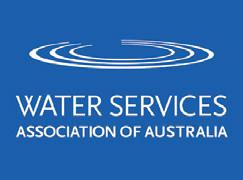


AGL has announced its intentions for a structural separation that will launch two leading energy businesses focused on executing distinct strategies.
These businesses are:
• “New AGL” Australia’s largest multi-product energy retailer, leading the transition to a low carbon future
• “PrimeCo” Australia’s largest electricity generator, supporting the economy as the energy market evolves
AGL Managing Director and CEO, Brett Redman, said that the proposed separation builds on AGL’s heritage of innovation, investment and structural adaptation to meet the needs of a dynamic industry.
“For more than 180 years, AGL has led Australia’s energy sector, evolving and innovating to better serve our customers and communities, and to return value to shareholders,” Mr Redman said.
“The accelerating market forces of customer, community and technology are driving the imperative to create this new path and separate AGL into two distinct organisations.
“The proposed structural separation would give each business the freedom, focus and clarity to execute their own respective strategies and growth agendas, while playing an equally important, but different, role in Australia’s energy transition.”
Mr Redman said New AGL would be Australia’s largest multi-product energy retailer by number of services to customers, leading the transition to a low carbon future.
“New AGL would have a strong, stable and growing customer base, delivering electricity, gas, internet and mobile services to more than 30 per cent of Australian households,” Mr Redman said.
“This strong customer base would be backed by a leading energy trading capability and a 2.1GW portfolio of flexible generation and storage assets to manage peak demand events.
“And, importantly, New AGL would be carbon neutral for scope one and two emissions on day one, with a clear pathway to full carbon neutrality.”
Generating approximately 20 per cent of the total electricity demand across the National Electricity Market (NEM), PrimeCo would be Australia’s
largest electricity generator supplying major wholesale, industrial and retail electricity users.
“PrimeCo’s first focus would be the safe and reliable running of its generation portfolio. As the low-cost backbone of the NEM it would be well positioned from day one to support the Australian economy as the energy market continues to evolve,” Mr Redman said.
“PrimeCo’s strong base generation position brings with it a capacity to invest in development options including the transformation of existing generation sites into the energy hubs of the future, as well as development of its 1,600MW wind development pipeline.”
AGL will immediately commence a process of engaging with shareholders, regulators, government and workforce stakeholders with a view to confirming the timing and nature of the proposed structural separation by end of FY21.
The proposed separation is subject to this consultation process and to ongoing internal AGL analysis.




✓ MANHOLE REFURBISHMENT
• Structural rehabilitation of access chambers
• Relining of pipe connections, channels, benching and walls with PVC for 100% gas tight lining
• Stops further deterioration from gas attack
• Patented technology
• 50 year guarantee
✓ SEWER PUMP STATION REFURBISHMENT
• Structural relining of sewer pump stations
• PVC lining provides complete corrosion protection
• Replacement of damaged pipework, mechanical components and lids
• Patented technology
• 50 year guarantee

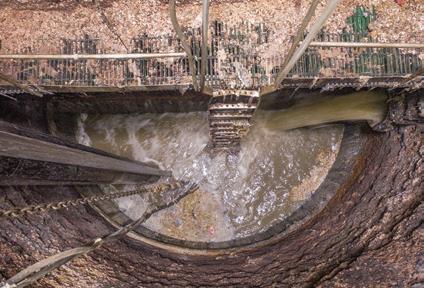


✓ 3D LASER SCANNING AND ASSET INSPECTION
• 3D scan of sewer asset
• Assess structural integrity of asset
• Determine amount of concrete deterioration
• Detailed interactive report with 3D modelling
• High definition video footage and photographs





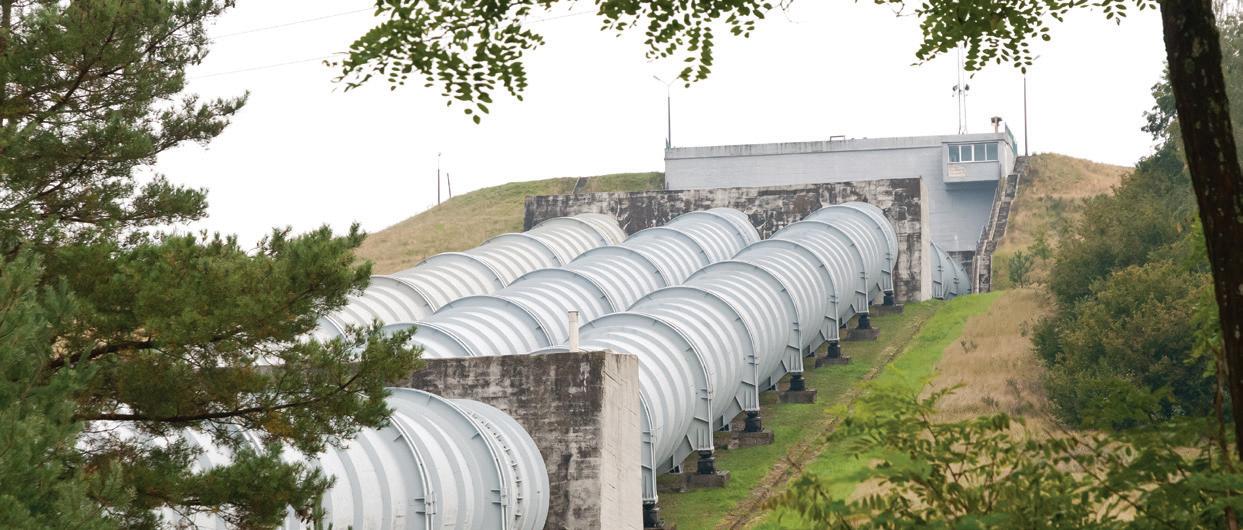
Genex has been approved for up to $47 million in funding from the Australian Renewable Energy Agency (ARENA) for the build of the Kidston Stage 2 Pumped Hydro Energy Storage (PHES) project.
The pumped hydro facility will be co-located with the existing 50MW solar farm.
The proposed $777 million project (including required transmission infrastructure) will be the first pumped hydro plant to be built in Australia since 1984, and the first to



be used specifically to support the integration of variable renewable energy generation from solar and wind.
Located at the former Kidston Gold Mine at the Kidston Clean Energy Hub in North Queensland, the project is a 250MW/2,000MWh PHES, equivalent to eight hours of energy storage.
Two existing mining pits at the former gold mine will be utilised as the upper and lower reservoirs for the PHES to minimise construction time and costs.



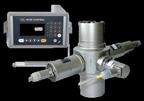



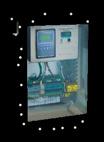







During peak power demand periods, water will be released from the upper to the lower reservoir, passing through reversible turbines.
During off peak periods and when the sun is abundant, water will be pumped back from the lower reservoir to the upper reservoir using electricity imported from the National Electricity Market (NEM).
Genex also has approval for up to $610 million in concessional debt finance from the Northern Australia Infrastructure Facility. Genex and key shareholder J-POWER will provide equity to the project.
EnergyAustralia is to be the project offtake partner for a period of up to 30 years. A joint venture of John Holland and McDonnell Dowell is the engineering, procurement and construction contractor.
A 187km transmission line, supported by the Queensland Government and Genex, will be required to connect the Kidston Renewable Energy Hub to the NEM. This transmission line is also expected to facilitate the connection of further renewable generation projects in the region.
Construction is expected to be completed by 2024. The project is expected to generate 500 construction jobs and a further 20 ongoing operation roles.
ARENA CEO, Darren Miller, said this funding would enable Genex to create a PHES plant that can provide reliable, dispatchable and affordable renewable energy to the grid.
“This is a landmark project for all involved and paves the way for renewables to play a larger role in Australia’s electricity grid. Genex will be delivering the first pumped hydro project in Australia since 1984 and the first to be used solely for energy storage and generation rather than water management,” Mr Miller said.
The Federal Government’s first Low Emissions Technology Statement has highlighted the importance of large-scale energy storage solutions to facilitate more low cost solar and wind generated electricity into the grid.
“Large-scale storage will play a key role in ensuring security and reliability of Australia’s electricity system as we transition to renewables,” Mr Miller said.
“Pumped hydro is expected to be a key technology enabling us to store abundant solar and wind energy when it is available and dispatch this energy back into the grid during the evening and other times of peak demand, so it is imperative these projects get underway.”
ARENA previously provided $8.9 million towards Genex’s 50MW Kidston Solar Project in 2016. ARENA also already provided funding for feasibility and development totalling $9 million towards the pumped hydro portion of the project.
“Having championed this project from conception, and having supported pumped hydro feasibility studies across Australia, we are very excited to see this project reach financial close and commence construction,” Mr Miller said.






Edge Underground is a precision microtunnelling contractor that operates in Australia and the USA.
With a focus on innovative technology and expertise, Edge Underground designs and enhances the performance of trenchless equipment. OUR
• Microtunnelling
• Pipe Jacking
• Thrust Boring
•


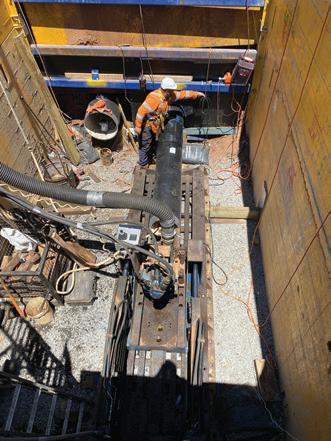

After ten years of research and development, Urban Utilities is now introducing the unique microorganisms – called anammox bugs – to the state’s largest sewage treatment plant at Luggage Point in Brisbane’s east.
Urban Utilities spokesperson, Michelle Cull, said the innovative technology is revolutionising wastewater treatment and could be rolled out Australia-wide.
“These remarkable bugs might be tiny, but their healthy appetites are key to unlocking a cleaner, greener and more efficient way to treat sewage,” Ms Cull said.
“The bugs feed on nutrients like ammonium and nitrogen, naturally removing them from sewage, requiring less chemicals and energy than traditional treatment processes.
“The amazing anammox will help clean an equivalent of around 50 Olympic swimming pools every day as they are added to sewage, eating the waste and leaving the water behind.”
The pioneering technology, developed by Veolia Water Technologies, will also help Urban Utilities treat an increasing volume of wastewater as more people call South East Queensland home.
“We’re expecting to save around $500,000 a year by using less power and chemicals and with a more efficient treatment process, the plant will have more capacity to cater for future population growth,” Ms Cull said.
It has taken five years to farm the slow-growing bugs at Urban Utilities’ Brisbane innovation centre.
“We started with enough bugs to fill a jam jar but now we have enough to fill more than ten backyard swimming pools,” Ms Cull said.
“We’ve finally grown enough bugs to introduce them into the treatment process and start reaping the benefits, as they’re extremely efficient at removing nutrients from sewage.
“So, the next time people flush the loo or turn on the washing machine, they could be providing the next meal for our hungry bugs.”
Veolia Water Technologies General Manager for Projects, Michelle Moroney, said the most exciting part about the anammox bugs was their potential to reduce power and chemical use nationwide.
“Due to biosecurity laws, you can’t import anammox bugs into Australia, so it’s taken a long time to grow them for this project,” Ms Moroney said.
“The bugs grow on special plastic discs – that we call carriers – which are a critical part of the process. We had to crane around 500 cubic metres of the carriers into tanks at Luggage Point.
“The anammox project is great news for other water utilities around Australia, as they’ll be able to access these superbugs to incorporate them into their own treatment processes.”
Urban Utilities’ sewage treatment plant at Luggage Point treats the sewage from 800,000 Queenslanders every day – the equivalent of about 50 Olympic swimming pools.
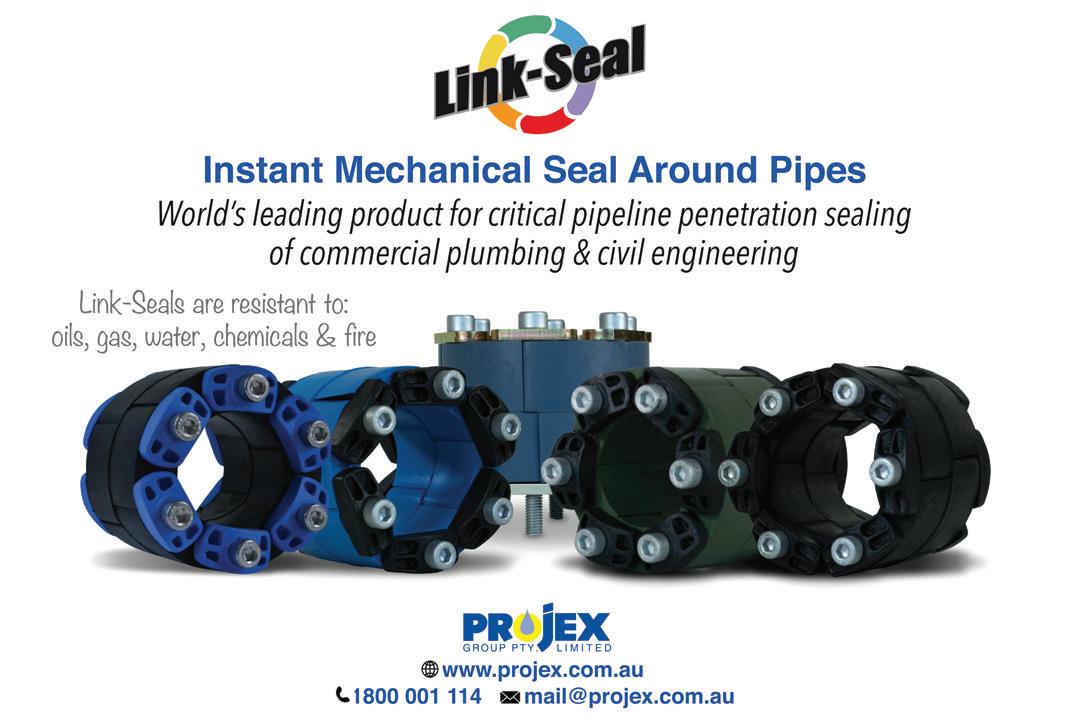
Yarra Valley Water is leveraging its Foundation Technology Program to support its new ten-year business strategy to enhance its customer service.
Yarra Valley Water said a number of core systems support its operations, including customer and billing (Oracle CC&B), asset management (IBM Maximo), GIS (Intergraph G-Technology) and SCADA (Schneider Clear SCADA).
Yarra Valley Water has taken a best of breed approach to procuring these systems and its choices have served the company well in terms of reliability and out-of-the-box functionality – being able to meet the majority of its business requirements.
Historically hosting its core systems on its own infrastructure (on premise), going forward Yarra Valley Water is progressively transitioning to the Cloud, which will ultimately reduce lifecycle management costs.


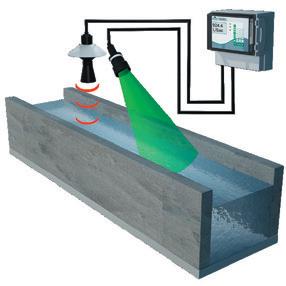

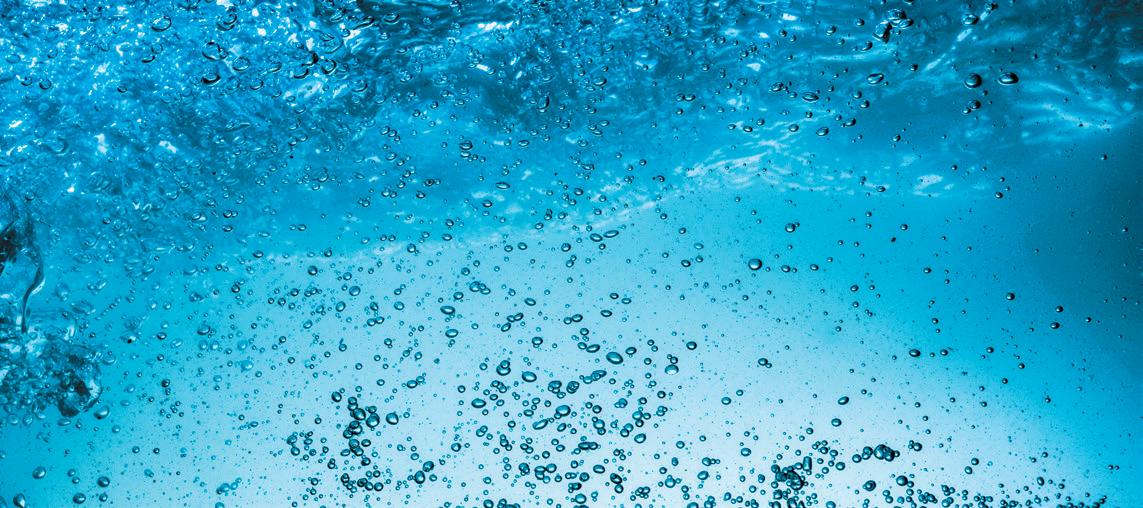

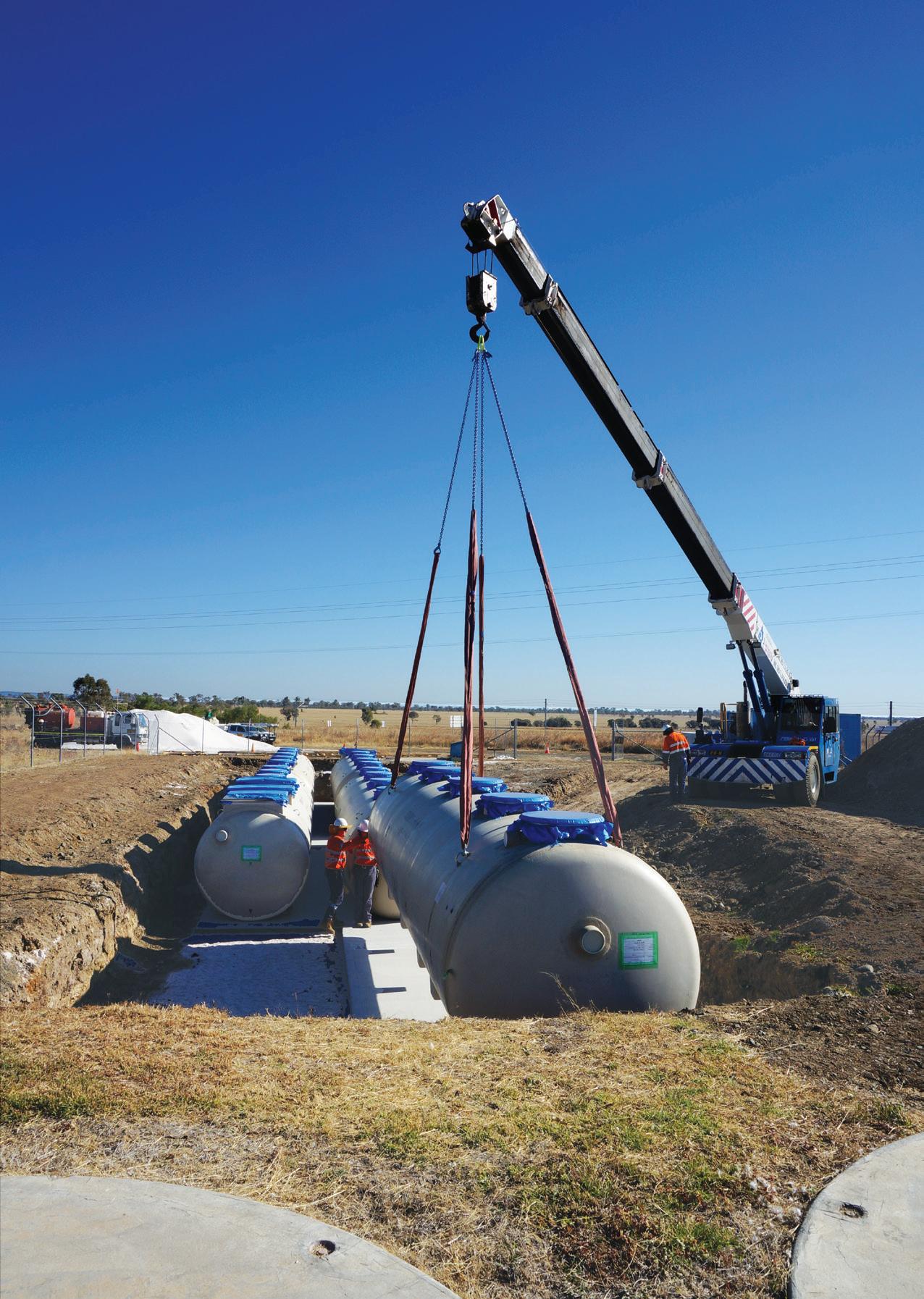

PROVIDING SOLUTIONS FOR:
• Municipal Sewage Treatment
• Commercial & Industrial Estates
• Government Projects
• Residential Developments
• Urban Subdivisions
• Resorts & Caravan Parks
• Mining Accommodation
• Airports & Infrastructure
• Service Stations
• Defence Assets



However, like most utilities, this migration is complicated by the fact that Yarra Valley Water has heavily customised its core applications over time – this supported its preferred processes and ways of working at the time but will now need to be unpicked or rebuilt.
Yarra Valley Water’s core systems also have a low-level of integration with each other. As the company moves towards increasingly customer-centric operations, it will need to integrate the data within these systems to get a holistic view of both its customers and assets.
Yarra Valley Water has now developed a high-level future state technology architecture, which separates the user experience from the engine room of its core systems. This will be more resilient to the ever-changing technology landscape and will meet the needs of its customers and employees, both
now and into the future. The new architecture is much more plug and play as well as being agnostic to whether the systems are hosted on its infrastructure or in the Cloud.
The cornerstone of making this a reality is Yarra Valley Water’s Foundational Technology Program – which introduces core pieces of technology to enable this shift. This program includes:
Customer Experience Digital Platform – a single pane of glass for customers and staff to manage all of the account, service, and transitional based (property move in and move out) transactions. This will ultimately incorporate online service portals and enable Yarra Valley Water to view the entire interaction history it has with each customer.
Distribution Management System –a single pane of glass for its staff and partners to manage its assets and ensure it meets its obligations for providing safe and reliable services and minimising environmental impacts. Initially this involves data visualisation, but quickly moves into alarm and event management, and ultimately response automation.
Communications and IoT Device Management – enabling the company to take full advantage of the potential of the Internet of Things (IoT) – such as providing customers with information to manage their water use and reduce their bills, and more effective management of Yarra Valley Water’s entire asset networks.
Yarra Valley Water is already considering replacing its mechanical water meter fleet with digital water meters and is also considering a range of other network monitoring sensors. The Device Management






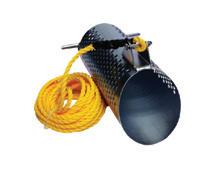
An industrial battery is only as good as its DC system. That’s why we offer engineering design and installation support when you purchase energy storage technology with us. We design DC systems using the most efficient technology for your site, ensuring you are fully compliant with Australian standards. Being a local Australian company, our support is easy to access and available for the life of your system.
To learn more about installing a DC power system or upgrading your current assets, visit our website.
For enquiries call 1300 364 877 www.intelepower.com.au/ /campaigns/free-engineer
Platform will enable the company to manage large volumes of IoT devices throughout their lifecycle (ultimately more than a million devices).
Enterprise Historian – the database and associated analytics for all of its time-series data, predominately acquired from its field-based sensors – which then enables this data to be combined with data from other non-time-series related data sources for improved insight and decision making.
API Integration Tool – a modern and more standardised way of integrating the flow of data between systems and making the most of the functionality already present in its core systems.
Yarra Valley Water has already selected the majority of the above components and these are in
various phases of implementation.
Its initial focus is on platform stand-up, with use case build out to take place over an extended period of time based on highest value first. The current status of the various components is:
• Customer Experience Digital Platform – Yarra Valley Water selected Salesforce as its preferred software solution. Yarra Valley Water will use development partners to help it build out the roadmap
• Distribution Management – tenders have closed and evaluation is currently underway
• Communications and IoT Device Management – tenders have closed and evaluation is currently underway
• Enterprise Historian – a preferred solution has been selected and vendor negotiations are currently underway
Yarra Valley Water is also implementing a new IT Service and Operations Management platform to implement and deliver its IT services and ensure they meet its needs. This will manage and monitor the performance of its technology assets throughout their lifecycle as well as streamline the work of technology support teams.
Yarra Valley Water recently selected ServiceNow as the preferred software solution and has commenced the implementation phase.


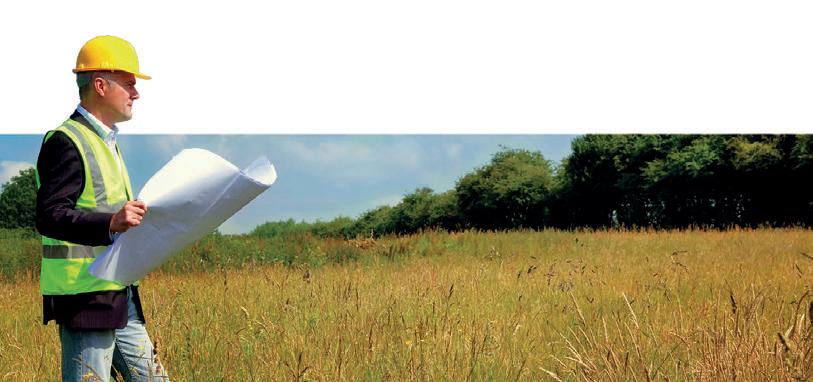







C-thrue – See Thru Concrete Structures and Reveal True Data: all-in-one dual polarisation GPR for accurate scanning and real time analysis of shallow and deep targets in concrete structures.

IQMaps: a new post-processing software application for advanced GPR data analysis with real time processing and 3D visualisation.
www.idsgeoradar.com/products/ground-penetrating-radar or contact Mark Bell from the IDS Georadar Brisbane Office
Email: mark.bell@idsgeoradar.com
Stream UP: a multi-channel, multi frequency, double polarized and lightweight GPR system for high speed utility mapping of large urban areas.Anew CEO has been appointed at TasNetworks to guide the company as it progresses Project Marinus.
Dr Sean McGoldrick has been appointed to the position, and has over 30 years’ experience working on electrical power systems, including serving at managerial and board level in electric utilities around the world.
Most recently, Dr McGoldrick held the role of Executive Manager Major Projects at electricity network operator TransGrid (NSW), and his diverse career experience includes research and development, construction, operation, market operation, consultancy, and planning and asset management of large-scale power systems.
During his career, Dr McGoldrick has worked and consulted for power utilities, transmission system operators and regulators including in Australia, the UK and Europe. He has also consulted on major projects funded by the EU, World Bank and European Bank for Reconstruction and Development.
As the nation transitions to more renewable energy sources, TasNetworks is at the centre of the opportunities
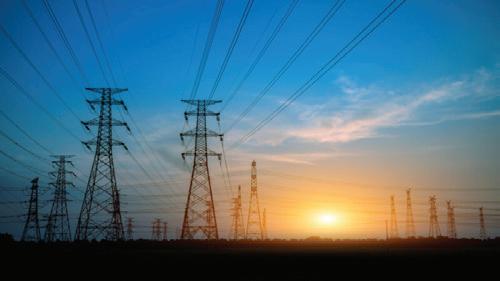
this presents for Tasmania. This includes progressing Project Marinus to enable TasNetworks to export more of its renewable energy to the National Energy Market.
Tasmanian Minister for Energy, Guy Barnett, thanked Lance Balcombe for his dedication and contribution to Tasmania’s energy companies over the last two decades, including as the inaugural CEO of TasNetworks for the last seven years.
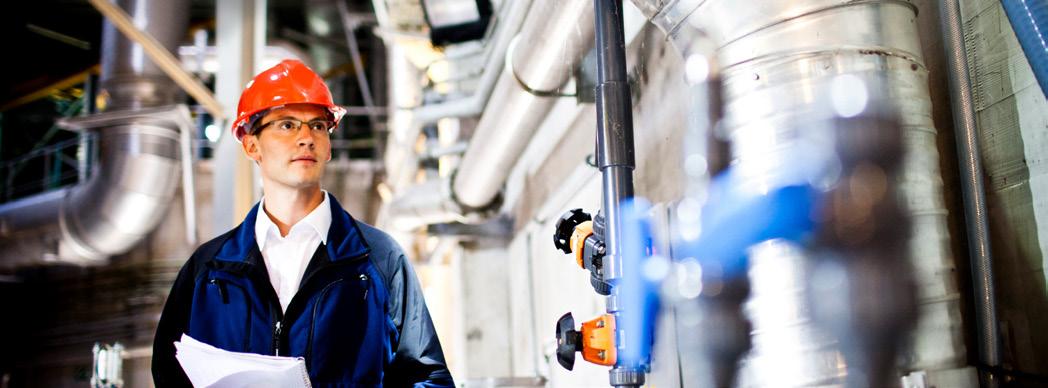
Through its innovative solutions, Veolia Water Technologies enables industry, local authorities and citizens to optimize their use of resources for more efficient, environmentally-friendly and socially responsible outcomes.
We understand the importance of increasing the value of water and we do so by supplying high quality water, treating and reusing wastewater, producing and/or recovering energy, extracting raw materials and capitalizing on valuable byproducts.
www.veoliawatertechnologies.com.au

Digitisation and Smart Grids are emerging across the globe, the ability to remotely monitor assets is vital. Take control of your network with 24/7 connectivity to critical infrastructure, assets, and people from anywhere in the world.
P
Terminal and asset management
Monitor and manage valuable assets in remote locations, improving productivity and system uptime.
Fault detection and response
Seamless connectivity to sensors and reclosers enables asset management over-the-air improving resolution and response times.
Connected workforce
Ensuring remote teams can communicate in real-time, receive instructions and technical specifications 24/7.
Optimised fleet
Save costs and improve safety with remote vehicle tracking – access location, fuel consumption, speed, routes and maintenance.
Sustainable applications
Enhanced visibility and data access reduces the need to travel and deploy engineers to remote locations – reducing your carbon footprint.



A landmark virtual event for the Australian utility sector, Digital Utilities took place over the course of two weeks in March 2021. This major summit consisted of four Virtual Conferences, diving deep into some of the critical challenges and focus areas for the sector, and providing delegates with genuine learning opportunities from some of the best and brightest minds across Australia (and the world!).
From 16-24 March, over 600 delegates registered to watch the summit live, or with the intention of watching the presentation recordings at their leisure.
The first conference of Digital Utilities 2021, Digital customer: digital engagement in a postpandemic world, took place on Tuesday 16 March, and what an opening day we had!
Our international keynote, Lily Stein, Operations Manager at the UK-based Octopus Energy, spoke about how the energy retailer has maintained accountability and responsibility for its customers as it's grown.
She also discussed Octopus’ unique operating model, which involves customers being randomly assigned to different teams and looked after by a group of energy specialists that have end-to-end knowledge of all customer experience processes.
South East Water's Managing Director, Lara Olsen, spoke about the utility's digital transformation journey and the impact of this on each of South East Water's customer groups.
She made the excellent point that if we think only of customers as a distinct group, we miss the richness of the people we're serving – which
includes employees, suppliers, regulators and communities.
During our panel session, our three experts – Caitlin van den Berg, Head of Customer Experience Delivery at AGL, Andrew Crozier, Chief Product and Customer Officer at Aurora Energy and Brett O’Donnell, VP Customer Acquisition Solutions at Agility CIS – discussed the development of new products, services and business models to meet changing customer expectations.
All agreed that improving their data analytics capabilities was key to maximising the value of their customer relationships, and smart meters were a crucial technology in enabling this.
Richard Bergman, Oceania Cybersecurity, privacy and trusted technology Leader at EY, was our final speaker of the day, filling attendees in on the cyber security implications related to remote working.
He explained that the rise of cyber attacks has coincided with investment in emerging technologies and we are currently seeing a successful ransomware attack every 11 seconds! He finished up with some great advice to help utilities feel more confident in their cyber security capabilities.
The second conference, Digital energy: towards smarter energy networks, took place on Wednesday
17 March, and featured a number of fascinating presentations and conversations.
Kicking off the day's proceedings was CitiPower, Powercor and United Energy's Head of Network Strategy and Non-Network Solutions, Greg Hannan, who spoke about networks as the enabler of the energy transition.
He touched on a suite of demand management and non-network programs that have enabled the utility to defer major capital expenditure and encourage permanent behavioural change amongst customers, explaining that "our approach is to pursue trials, develop capabilities and ultimately deploy these as BAU programs".
Mark Vincent, General Manager Strategy and Transformation at SA Power Networks, was up next and talked about how distributed energy resources (DER) have created the state's most pressing challenge –minimum demand.
He highlighted the initiatives underway to help meet this challenge and the options for managing the continued uptake of DER, the most significant of which will be flexible network connections.
During our panel session, our energy experts – Renae Sambrooks, Manager Customer Solutions at Horizon Power, Dr Peter Wong, Network Technology and Measurement Manager at Jemena and James Colbert, Chair, International Microgrid Association – discussed the challenges and

opportunities that small-scale devices, such as rooftop solar, batteries and electric vehicles, and their aggregation in the form of virtual power plants and microgrids present for the way electricity is produced, managed and consumed.
Tracy Deveugle-Frink, Head of Change and Innovation at Western Power, was our final speaker of the day, filling attendees in on how the utility is building its capability as a Distribution System Operator (DSO), paving the way for real-time visibility of and response to what's happening in the distribution network.
She also discussed Western Power's Flexibility Services Pilot, which aimed to find the sweet spot between customer, commercial and technical feasibility, and shared some of the key learnings from this trial.
The third conference, Digital water: safeguarding our water supplies, took place on Tuesday 23 March, and featured a range of excellent insights and takeaways for attendees.
Our international keynote, Andrew Tucker, Water Efficiency Manager at the UK's Thames Water, talked about the learnings from the first five years of the utility's compulsory smart water meter rollout.
The smart meter program is re-writing Thames Water's understanding of water use, wastage and leakage, and Andrew even logged on just before the end of the conference to answer any audience questions live.
Craig Earl, Head of Operational Technology at Sydney Water, was up

next and explained the importance of customer engagement in conserving water during times of drought, with many people underestimating the impact of their efforts to save water.
He also discussed Sydney Water's ongoing digital transformation journey, particularly the convergence of IT and OT, and its digital metering trial.
During our panel session, our water experts – Mark Stephens, Asset Analytics Lead at SA Water, Amanda Walker, Geospatial Technology and Services Manager, Dam Safety and Engineering at WaterNSW and Russell Riding, Team Leader Automation Delivery at Melbourne Water – discussed how utilities can leverage digital tools, such as smart metering, IoT hardware, data analytics and AI/machine learning, to

optimise and automate water resource management.
eWater's Chief Executive, Dr Robert Carr, and Executive Director Projects, Dr Geoffrey Adams, delivered a joint presentation on urban efficiency and water sensitive planning through water system modelling.
This presentation showcased the wide range of ways the eWater Source, Australia’s national hydrological modelling platform, MUSIC and Urban Developer are being applied by leading Australian water utilities to plan for sustainability and climate change.
The final conference of Digital Utilities 2021, Future utility: imagining the digital utility of tomorrow, took place on Wednesday 24 March, and was a very fitting
session to wrap up the ten-day conference period.
Our international keynote, Shaunna Berendsen, Head of Innovation Engagement at the UK's Anglian Water, shared how COVID-19 has accelerated the organisation's digital transformation initiatives and her strategies for helping employees become more innovative and digitally minded.
Anglian Water's innovation lab provides a real location for its teams and local community to innovate with the right tools and support, promoting and practicing open innovation to improve collaboration and skills.
An exclusive session from EnergyTech Hub powered by Startupbootcamp explored the impact of startups, offering practical advice for utilities on how collaborating with startups can benefit their businesses.
In part one, Trevor Townsend, CEO at Startupbootcamp, outlined some guidelines for utilities who wish to assess and work with startups. He also spoke with Jodie Hallam, GM Energy Services at Mondo, about the role startups and scaleups could play in the future to build new business opportunities.
In part two, Mike Harris, Head of Aviation, Defence and Key Verticals at Australian startup LexX Technologies, shared the organisation's experiences and work with various corporations, including in the wind farm space.
Karen Buckman, Innovation Opportunity Specialist at EnergyAustralia, then shared the energy retailer's views and experience of working with startups through accelerator and proof of concept initiatives.
Igor Sadimenko, Oceania Power & Utilities Leader at EY, was our


final speaker of the day, and took attendees through plausible visions of the future of the utility sector, including changes for incumbent utilities, new service providers, regulators, policy makers and consumers.
He explained that utilities must make transformation an organisation-wide priority by placing humans at the centre, prioritising innovation at scale and technology at speed, and the sooner utilities transition to a fit-for-purpose business model, the sooner they will be able to protect their
value loss. The support from the summit sponsors – GHD Digital, WORQ, Cornerstone Performance Management, Innovapptive, Mondo, Agility CIS, Madison Technologies, Schneider Electric, Hexagon PPM, Snowflake, Lanco Group, Bill Identity and Locusview – was also crucial to delivering a successful event.
For anyone who didn’t have a chance to watch the Virtual Conferences live, the entire summit can be viewed on demand; and individual presentations can also be viewed online too.
Visit www.digitalutilities. com.au/tickets to get immediate access to all the video presentations, speaker slides (where available), and the networking platform – not only does the conference platform allow you to watch the sessions at a time that suits you, it also enables you to connect with a community of industry professionals.

SUMMIT PARTNER

SESSION PARTNERS



PANEL SPONSORS



MAJOR SPONSORS



BASIC SPONSORS


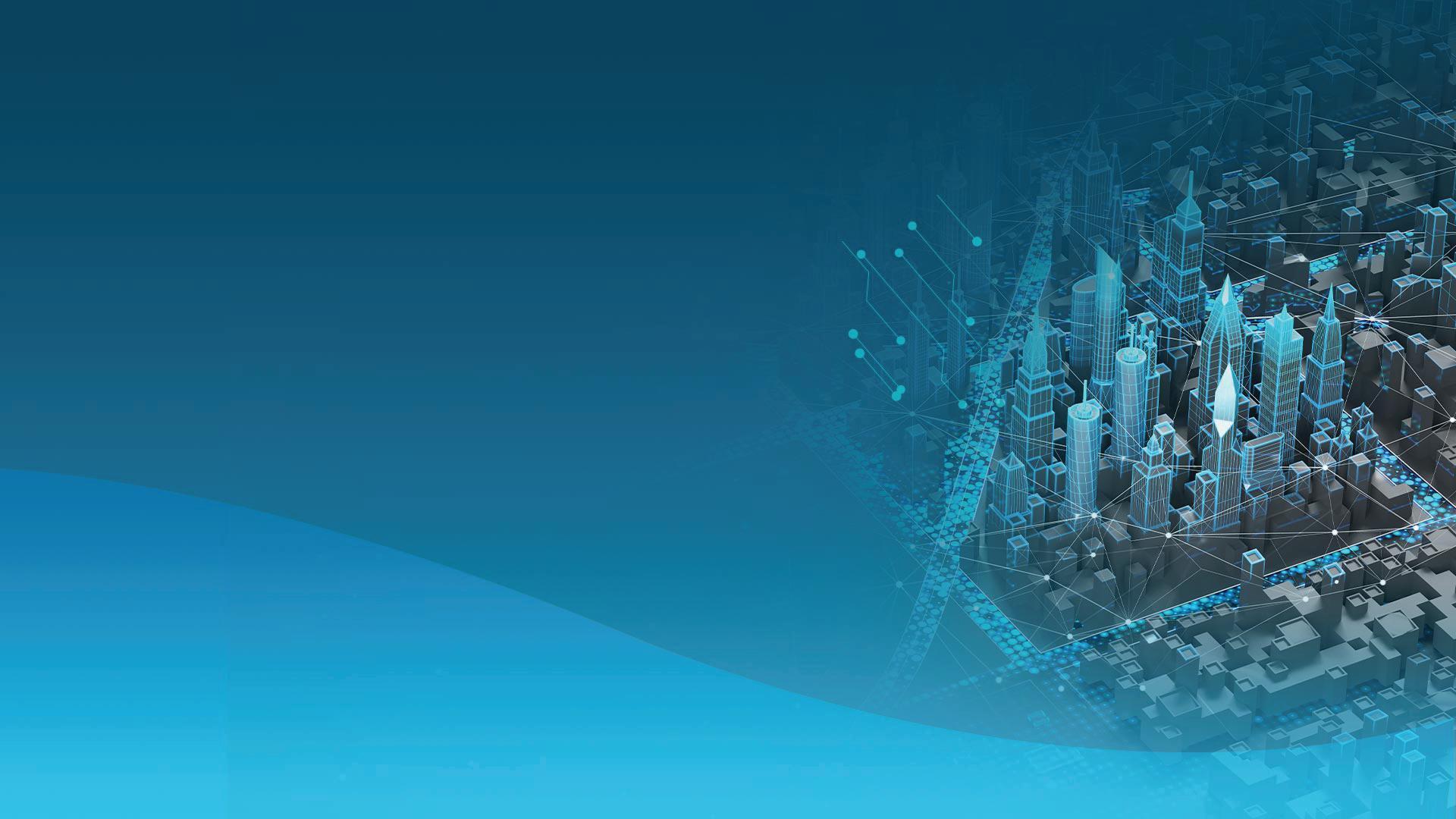
Power Your Decisions with a Dynamic Digital Twin.
Info360.com is a SaaS platform that enables real-world water management workflows using the scalability and accessibility of the cloud.
To learn more contact an Innovyze water expert today.
+61 (0) 7 5506 5700
sales-asiapac@innovyze.com


Modec has been a provider and market leader of portable valve operating systems for many years. These systems are used across a broad spectrum of industry, and the water distribution sector has used Modec systems for many years to operate the underground valves that are part of these distribution systems.
Akey part of this service provision is maintaining the pipe network and carrying out repairs when necessary. Water supply pipes are predominantly concentrated in urban areas, with the block valves that control water flow situated in the middle of busy roads and streets. Whenever operation technicians need to open a valve for maintenance or repair, they are working in areas of heavy traffic – with all the dangers that involves.
Equally, much of the water supply pipe network is very old, and many of the original manual block valves (opened and closed by turning an iron rod inserted in the hand-wheel) have deteriorated over time, becoming more difficult to manoeuvre.
This means that operators are having to exert greater force to open the valves, increasing the threat of repetitive strain injury – notably tennis elbow – as well as the risk of opening the block valve too quickly and creating a water hammer effect which can cause serious damage in a water supply system.
System operators are seeking a way to manage these valves that offers greater protection to both operators

and the overall water system. Modec have adapted portable valve actuators to fulfil this requirement. Rather than two operators exerting equal pressure on each end of an iron rod fixed to the hand-wheel, the procedure requires just one operator to set up the tool and hold it in place.
The technician is stationary, therefore better able to observe the traffic, and there is no risk of occupational strain or injury as the portable actuator is doing all the hard work. It also does the work in around half the time!
The other major advantage is that it opens and closes the block valves at a controlled speed, thereby eliminating the danger of water hammer which can prove so costly. It will also simply stop turning if the force applied threatens to break the valve.
Health and safety is a major issue for system operators – both the safety of their personnel working on busy roads, and the safety of their equipment – and Modec is pleased to work with companies to find a unique solution to their needs. These portable actuators help to improve the security of both their employees and their supply system, while at the same time improving operational efficiency.
Through research and feedback from this sector, Modec has now created a standard “kit” for use in operating these underground valves. This standard kit was formed within Modec to develop offerings that address specific applications in the water industry, paying particular attention to the development of solutions that address common issues that are seen globally throughout this sector.
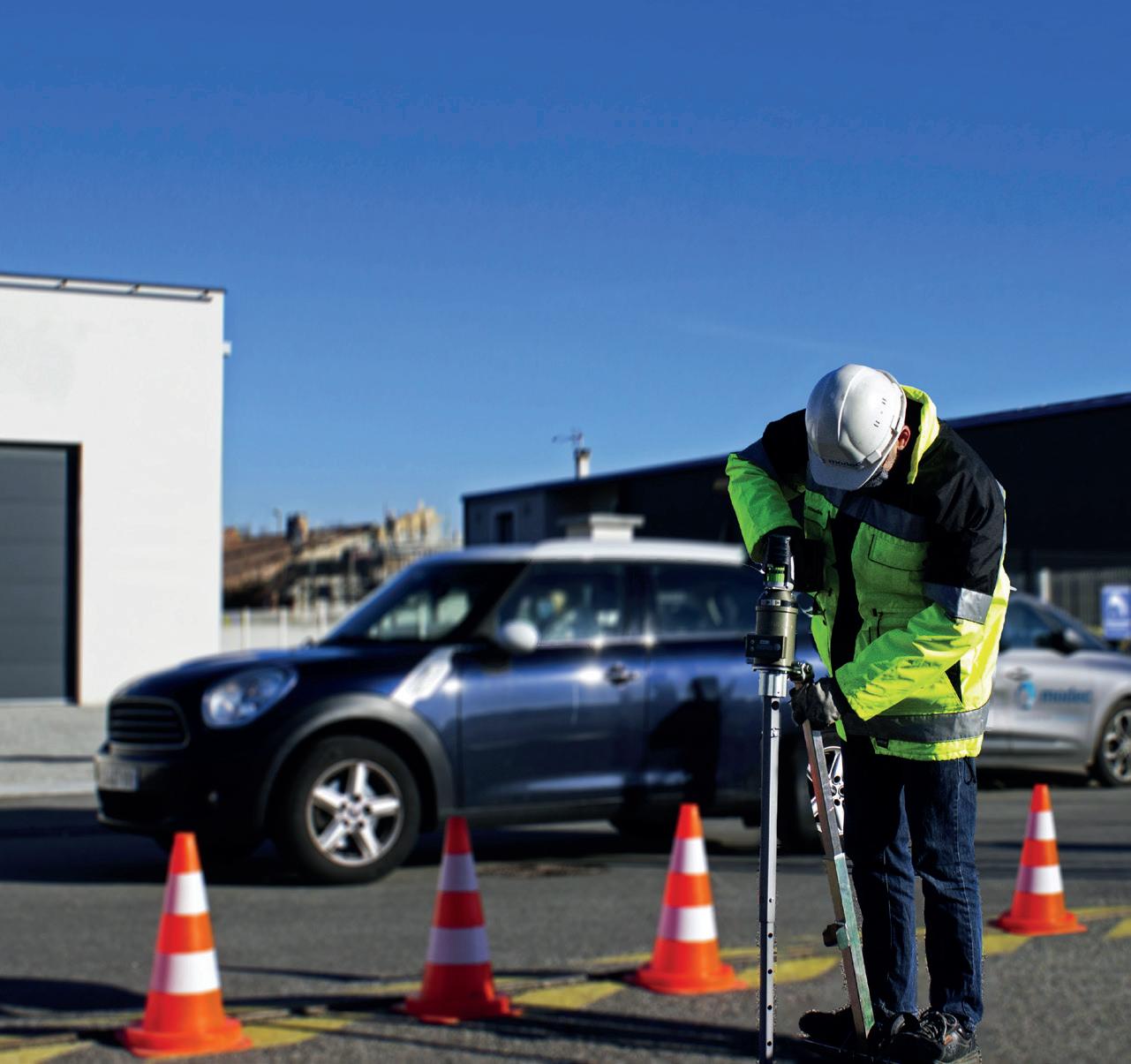



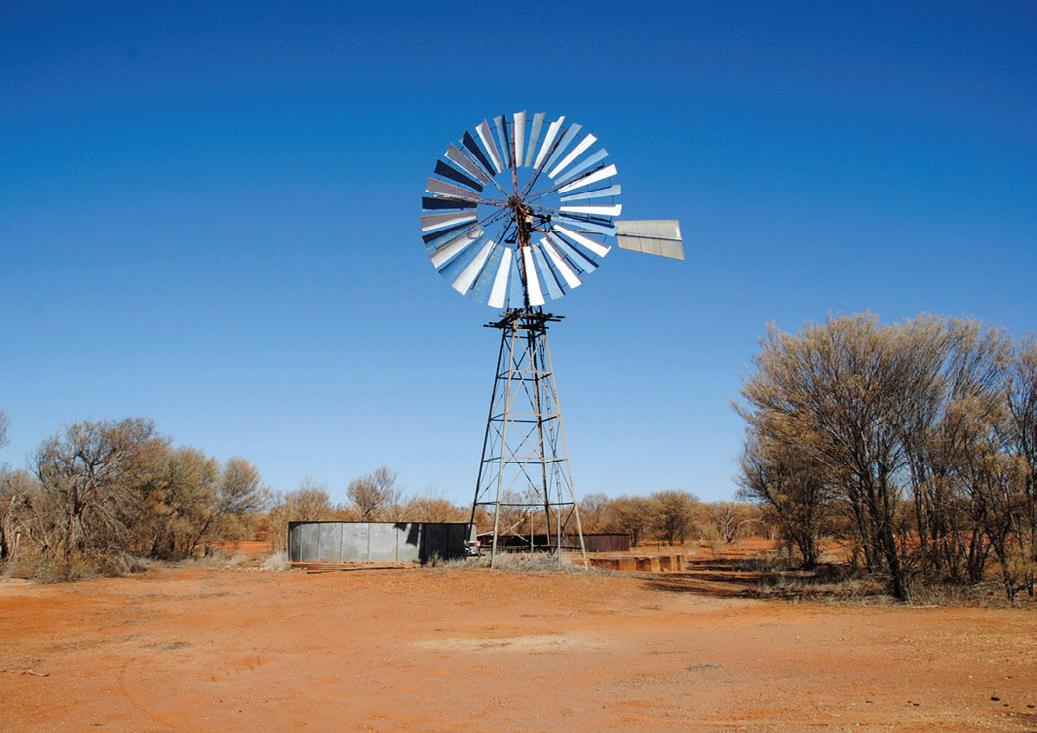
For the majority of Australians, access to clean and safe water is as easy as turning on a tap. But for the more than 48,000 Indigenous Australians living across 694 remote locations nationwide it is much harder, as the groundwater they rely on can contain high concentrations of minerals that can contribute to disease. Project Gilghi – the brainchild of international engineering, design and advisory company Aurecon and New South Wales Hunter-based electrical engineering company Ampcontrol – is a self-sufficient, sustainable water treatment plant that provides a solution to this problem, delivering affordable and continuous potable water.
The World Health Organisation has estimated that access to clean and safe water and sanitation could reduce the global disease burden by almost ten per cent, but many remote Australian communities still lack access to it. Not only can high concentrations of elements such as uranium be found in the groundwater in the arid areas these communities are located, but a lack of clean water is also a contributor to the high prevalence of diseases such as trachoma and increased child morbidity.
One of the key problems preventing remote communities from accessing clean and safe water that meets Australian Drinking Water Guidelines is energy. Water treatment is energy intensive, accounting for 13 per cent of Australia’s electricity use, and for remote communities without connection to the grid, the cost is higher. Infrastructure overcapitalisation is unavoidable if wanting to produce a small-scale drinking water supply, otherwise communities rely on expensive transported water.
The project was developed over three years at Gillen Bore, a remote community about 75km north of Alice Springs. It was sponsored by the Northern Territory Government through a $70,000 Municipal and Essential Services Special Purposes Grant and developed for the Arrernte people as the custodians of the land and Alkupitja Land Trust.
In the past, the community of Gillen Bore had access to bore water, with a new bore sunk in 2014. Despite this, they relied on the continued transport (150km round trip from Alice Springs) of potable water due to high salinity, hardness and low pH levels in the bore water. This was a costly and inefficient expense that nationally in 2017 cost the Australian Government more than $13 million in transportation fees.
Aurecon and Ampcontrol saw an opportunity to address long-overdue water needs of remote communities like Gillen Bore. The team wanted to challenge traditional engineering design with a focus on sustainability and approached the issue from both the treatment process and energy design disciplines.
Julian Briggs, Design Director, Water and Waste Water Treatment at Aurecon, said, “It was realised that the change in rate of technology has not been matched by a change in the way developments have been implemented in the water sector.
“This presented an opportunity to capitalise on renewable power opportunities by comparing the levelised cost of electricity versus unvalued capital in the power grid system.
“For example, pumps are usually designed for peak output and the associated power demand, which results in the installation of many underutilised pumps, often resulting in a large amount of standby equipment. Ampcontrol’s new engineering approach to power management allows for a smarter, more efficient and cost-effective solution.”
Traditionally, water treatment systems operate continuously, whereas Gilghi’s innovative design makes smart use of available solar power to run the plant and charge the batteries during the day. To achieve this the team developed a specialist electrical control system that uses multiple power sources to purify the water, then feed that clean water into the community’s reticulation system.
“By intelligently using available power sources, and batching water pumping and treatment processes, Ampcontrol’s new engineering approach results in a smarter, more efficient and cost-effective solution,” Mr Briggs said.
After around 18 months of operation, system availability of Gilghi has been 99.6 per cent, and the standby diesel generator was only operated for 18 hours in total over that period.
By applying a human-centred approach and specifically focusing on, and addressing, the community’s wants, needs and pain points, Gilghi was able to deliver meaningful, sustainable value to the local community.
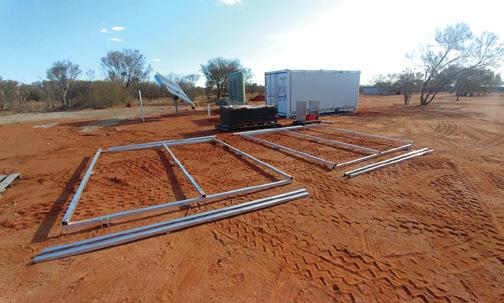
Gilghi’s flexible design enables the system to meet larger supply requirements and different treatment challenges without adversely affecting the cost per litre. Comprising photovoltaic (PV) solar, batteries and a back-up diesel generator, it is designed to take feedwater from a range of sources, including bores, streams, brackish and saltwater. The water is stored in an inlet tank before it passes through three stages of treatment:
1. Media filtration (sand media, carbon and softener)
2. Reverse osmosis (RO) unit, comprised of cartridge filters, pressure booster pump and RO membranes
3. UV disinfection system and outlet tank
Once treated, the water is transferred to a storage tank and is ready to use.
In terms of waste stream processing, an evaporation pond is built to treat the brine from the RO process.
The system can produce up to 28kL of potable water per day.
“Traditionally, water treatment systems operate continuously, whereas Gilghi’s innovative design makes smart use of available solar power to run the plant and charge the batteries during the day,” Mr Briggs said.
“The design took a modular approach to inclusion of the process units that provide the water treatment, allowing simple changes to the design to adapt to different feedwater conditions.
“This approach reduces the amount of bespoke design required and thus the overall cost of delivery, historically a significant challenge for small-scale systems.”
Mr Briggs said that installation time was another efficiency gain, with the fully off-grid unit up and running within just a few days and run remotely through satellite communications on renewable energy.
The critical operating functions have also been automated to help local communities to conduct routine maintenance on the devices, creating jobs and opportunities in the process.

Mr Briggs said Project Gilghi was already a huge hit in the local community.
“Simply put, the happiness on the faces of the Gillen Bore community at the opening ceremony communicated the importance of this water to their livelihood better than words ever could."
Due to the project’s remote location, the team had to develop a ‘plug and play’ approach, with all components of the plant prototyped, assembled, connected and tested at Ampcontrol’s facility in Newcastle, NSW.
“We ran batches of brackish (salty) water through the unit and tested the treated water quality to make sure it met the guidelines. Due to the remoteness of the location, anticipating any issues prior to deployment in the Northern Territory was paramount to success,” Mr Briggs said.
“Reducing time spent installing the unit in the field is a critical element to the overall project cost. Careful thought had to be given to installation and commissioning activities that are typically required.
“Gilghi has levelling legs attached to the container so minimal site clearing and preparation works are required. The solar panels are designed to sit on an awning mounted on the roof and side of the unit.
“For the Gillen Bore unit, the panels were stored inside the container for transport, then erected in the field. The unit was up and running within just a few days. For the latest iteration, the PV array is now hinged and folds down for transport and then simply folded out during site installation, further reducing site set-up time down to 1-2 days from delivery of the unit to producing water.”
Ongoing maintenance of the unit was another key challenge – one that is typically faced by such installations of relatively complex technology in remote locations. To overcome this, Gilghi was designed for simplicity of operation.
“The critical operating functions are automated, with the control system identifying and performing the backwash and regeneration functions which are critical to quality, remotely monitored via telemetry by Ampcontrol,” Mr Briggs said.
“We have also designed the system for simplicity of maintenance, avoiding the need for storing and replacing


hazardous chemicals in the unit. For Gillen Bore, this allows the local outstation service provider, Ingkerreke Outstation Services, who already visit the site, to do the more routine maintenance – an added benefit to the community by providing training and additional employment opportunities for the mostly indigenous local workforce.”
“Gilghi represents a breakthrough, innovative, solarpowered water purifying system solution,” Mr Briggs said.
“The project provides a roadmap for how Australia and other countries can meet the ambitious target of the United Nations’ Sustainable Development Goal 6 – to provide safe and affordable drinking water for all by 2030.
“Aurecon and Ampcontrol would love for other similar communities to be afforded the same opportunity.
“We believe Project Gilghi not only represents the start of a long tail of benefit for remote communities across Australia, and around the world, it is also a solution that highlights the achievements and ingenuity of the Australian engineering profession.”
Project Gilghi was recognised by the Australian Water Association in 2020 as the New South Wales Infrastructure Project Innovation of the Year. It was also recognised in the Social Impact category at the 2020 Good Design Awards for its breakthrough design, and at Engineering Australia's Australian Engineering Excellence Awards 2020, amongst a number of awards.


TRACTO develops, builds and distributes machines and accessories for the underground installation and trenchless renewal of pipelines. These trenchless technology solutions are applied for the construction of pipeline networks for water, gas, electricity, telecommunications, district heating, fibre optic networking, pipeline construction and sewage disposal. Customers for these NODIG systems come from the fields of civil engineering and special civil engineering, but also include utilities and network operators. Since its
foundation in 1962, TRACTO has developed numerous groundbreaking NODIG solutions and is today a full-service provider of advanced trenchless technology for all areas of pipeline construction. The company with its headquarters in LennestadtSaalhausen and sister companies in Switzerland, Great Britain, France, Morocco, Australia and the USA has about 600 employees worldwide.
Get in touch: info@tracto-technik.com.au T 07 3420 5455

VEGA has extended its portfolio of radar sensors with a new compact instrument series: VEGAPULS C 11, C 21 and C 22. These sensors are also suitable for more price-sensitive applications, such as those commonly found in the water/ wastewater industry. Three application examples from Austria show how simple and straightforward their use is.
The new series of VEGAPULS C radar level transmitters is characterised not only by its compactness, but also by its low price. The beating heart of these new sensors is a radar microchip newly developed by VEGA: extremely small and specially optimised for the requirements of level measurement. This makes the series a real alternative to ultrasonic measurement technology, which is still widely used in applications with water and wastewater.
Thanks to 80GHz technology, the radar beam can be aimed at the measured medium with pinpoint accuracy. Besides not being affected by temperature fluctuations, radar sensors are, most importantly, non-sensitive to soiling. Although the series is relatively new on the market, it has already been used successfully in many applications.
For continuous level measurement in its nine large and 34 small hydroelectric power stations, the Tyrolean energy company TIWAG has been relying on radar technology from VEGA for quite some time. The measured values, whether of levels in pump shafts or river levels, are important parameters for regulating the power supply in Tyrol. The new sensor series is now also used in the Kirchbichl power station.
This TIWAG power station, which was integrated into a loop of the river Inn, has been supplying Tyrol reliably with electricity since the 1940s. A few years ago, a remediation project was launched with the goal of increasing the efficiency of the power station.
Since April 2020, pairs of sensors from the new VEGAPULS C 21 series have been continuously monitoring levels along the waterway at the Kirchbichl power plant. VEGAPULS C 21 was convincing not only because of its compactness, but also because the sensor can be flooded without ill effect. The latter is extremely important, considering that high water events are always possible.
In the extensive area covered by Abwasserverband AIZ (Wastewater Management Association Achental, Inntal und Zillertal), a large number of pumps are constantly at work moving wastewater into the right channels and ultimately to the sewage treatment plant in Strass. VEGA level sensors deliver reliable measured values that ensure that the pumps switch on and off at the right time.
From AIZ’s point of view, one particular advantage of the new series is the extremely narrow beam angle, which makes it possible for the instruments to deliver very precise measuring results even in cramped measuring situations, in extremely dirty environments or in containers with many internal installations.
The installation in March 2020 was accomplished with only a minimal amount of work and expenditure, and the VEGAPULS C 21 and C 22 sensors began delivering the required measured values right from the start – the basis for reliable pump operation.
In the past, the municipality of Buch in Tyrol frequently had problems supplying safe drinking water to its residents. The pragmatic solution: feed drinking water from the neighbouring town of Jenbach into Buch’s water supply system via a network pipeline. The water is buffered in the St. Margarethen elevated reservoir, thus ensuring a constant supply of drinking water, especially when demand is high.
To monitor the level there, the operators looked for an inexpensive measuring instrument that, above all, could be installed with minimum effort. The radar sensor VEGAPULS C 11 from the new series turned out to be the simplest, most cost-effective solution. The sensor was simply mounted on the ceiling of the drinking water storage tank and has been continuously delivering exact measured values ever since.
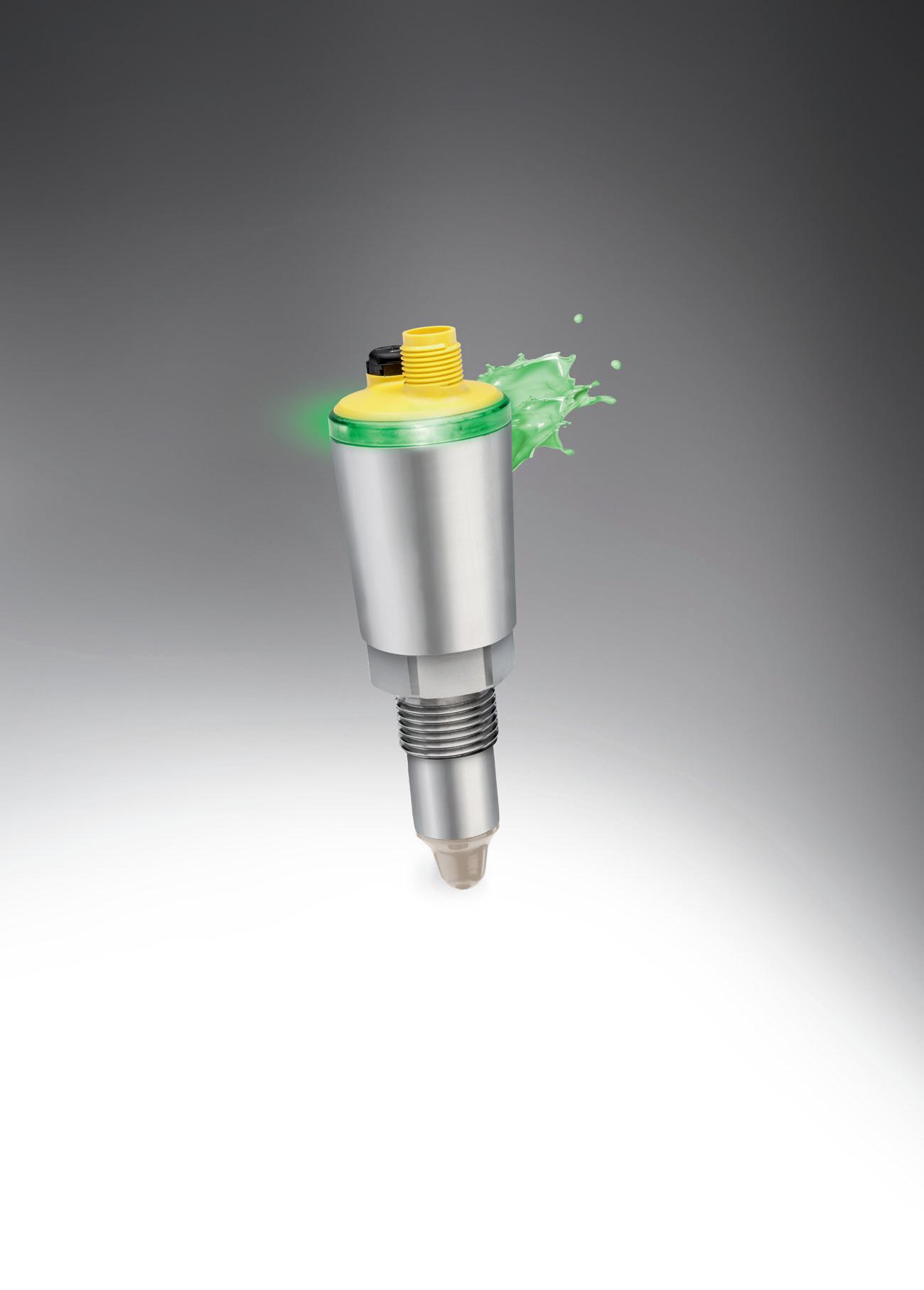

Programmed has a strong network of partners, who we rely on daily to assist us in servicing the many communities we serve for our customers. These partnerships were called into action when a water main burst in the middle of peak hour traffic, affecting three lanes and tram lines, shutting down two of the busiest city blocks in Melbourne.
Together with City West Water as the affected network, Programmed coordinated the rectification work, which encompassed many various stakeholders across council, transport and emergency services, all with high media interest.
Due to the strong relationship with City West Water, built up over a 15-year partnership, Programmed worked in tandem with our customer to represent the various stakeholders and resolve the issue, which required a controlled sequence isolation of eight major valves so repair crews could rectify the major pipe burst.
The crews were appropriately briefed by Programmed and City West Water to ensure



they were adequately and safely set up for their shift, with multiple partners from other stakeholders intimately involved with the repair works.
The collective experience of the repair teams was evident in their operational readiness and agility to adapt to any eventuality, which proved to the immediate community the commitment to quickly resolve the issue.
The burst main and controlled isolations were able to be repaired and released in record time, resulting in the deadline being met and city life returning to normal.
Looking to partner with Programmed? Contact us via info@programmed.com.au or visit programmed.com.au




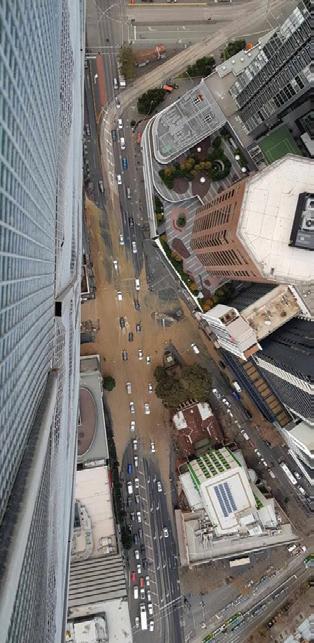

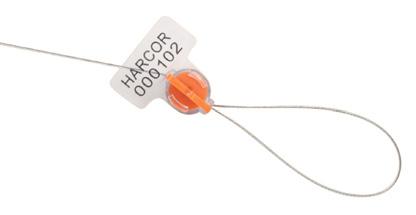



Driving smart solutions for over 25 years in the water industry, Programmed uses a combination of data, backed with a culture of safety and customer focus, to deliver innovative network operations and maintenance solutions for our water customers.
Partnering to build strong customers and great communities.
programmed.com.au
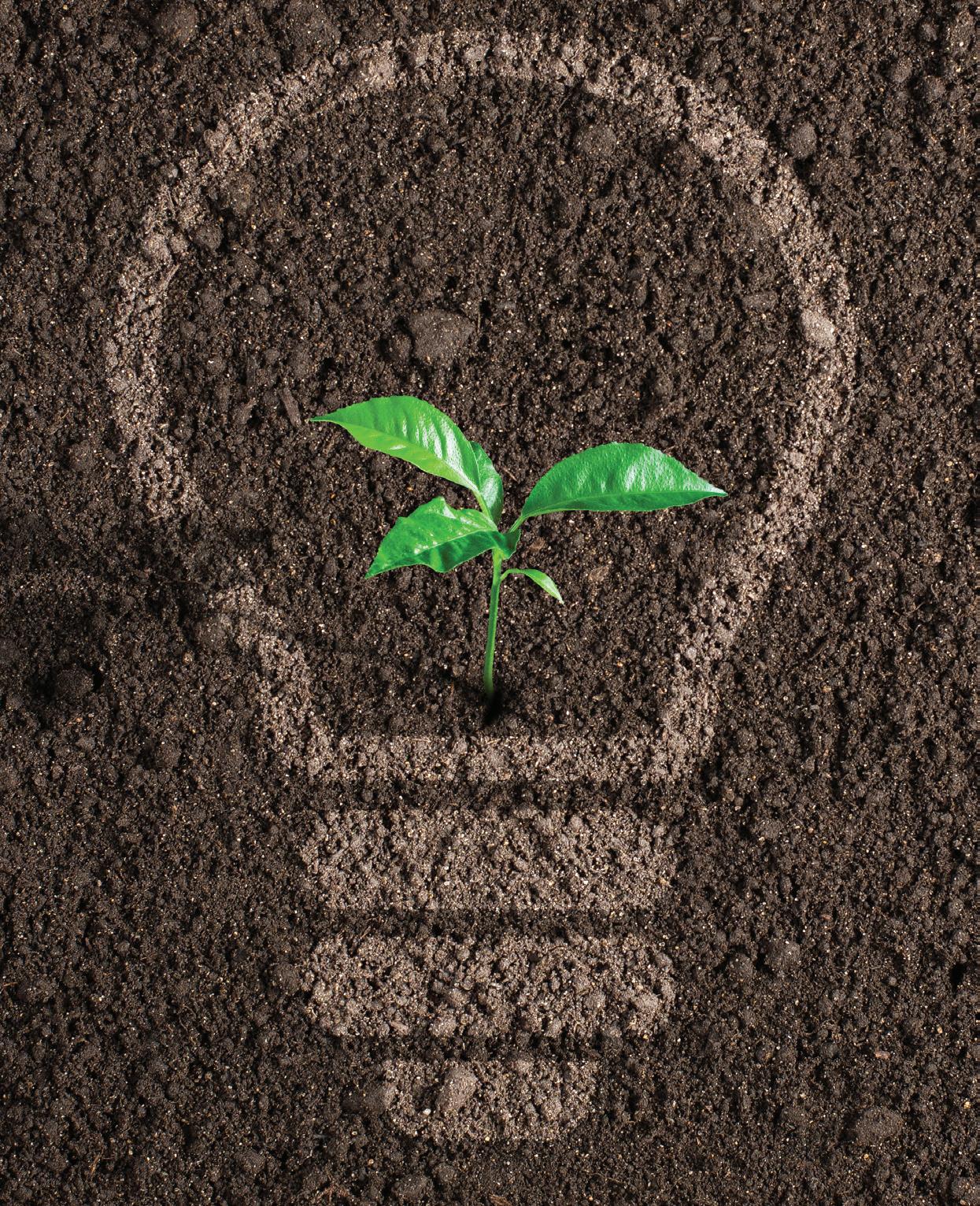

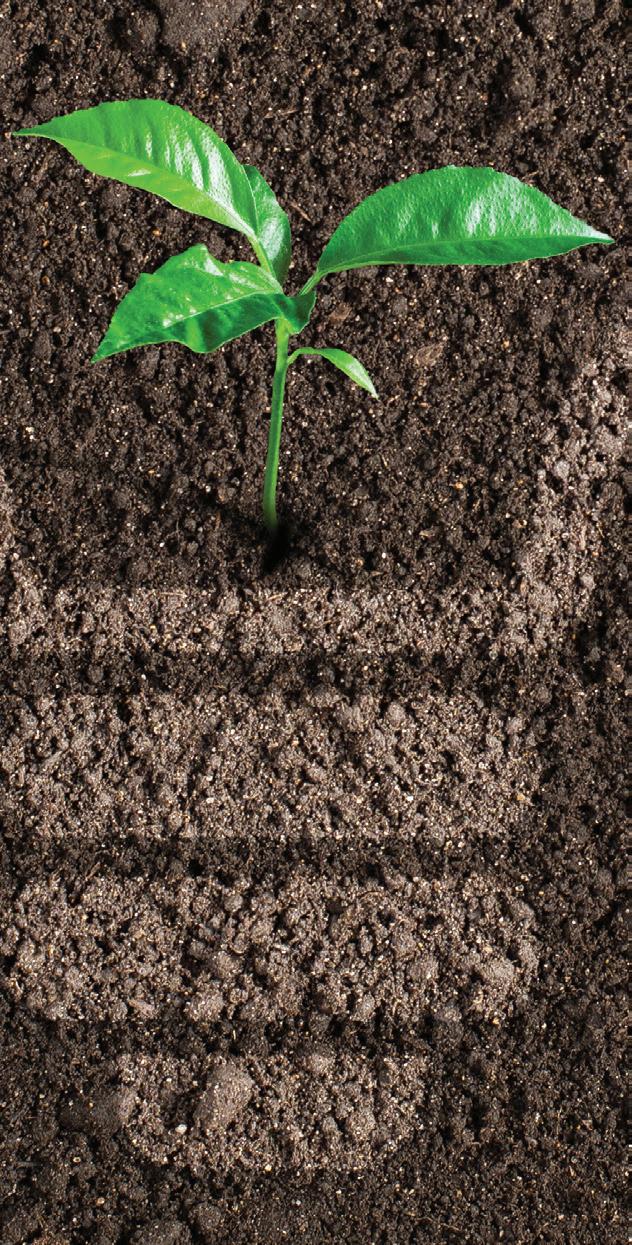


The circular economy refers to the transition away from the current linear model of ‘take, make and dispose’ towards a more efficient and sustainable one – one that uses resources efficiently, prioritises renewable inputs, maximises a product’s lifetime, and captures and repurposes what was previously regarded as waste. Here, we explore the role of utilities in moving from business models that prioritise resource drain to ones that value resource gain, and some of the projects and initiatives already underway.
As defined in a 2019 PwC report, The road to circularity, circular thinking decouples economic activity from the consumption of materials and energy by creating closed-loop cycles in which waste is minimised or even eliminated, and in which resources are reused.
The COVID-19 pandemic has accelerated a host of transformative trends, such as remote working, automation and digitisation, however, urgent action is required to mitigate the intensifying challenges brought on by climate change. A circular economy can reduce the pressure on resources and help decarbonise a range of sectors, while providing a strategic and effective way to identify both cost-saving and value-creation opportunities.
Circularity also offers an opportunity to develop more transparent supply chains that add value by enhancing feedback, collaboration and a mutual exploration of sustainable avenues for growth throughout the value chain. This is particularly important as trust in corporations continues to erode, and public sentiment demands more environmentally and socially responsible business practices.
Utilities have the potential to play a huge role in the development of a circular economy, and many of the technological developments that could accelerate circularity are within their sphere of operations, such as electrification, resource recovery, hydrogen production, and carbon capture and use.
One of the key strategies in the development of a circular economy is prioritising renewable outputs, and replacing fossil fuel generation is just one way to apply circularity principles to a company’s value chain.
This switch to renewable energy is a crucial element of circularity, and an increasing number of companies are seeking to reduce costs, increase sustainability and deliver long-term strategic value by making the change.
The utility industry is emerging as a major player in supplying renewable energy to industrial operations, meaning energy companies are at the heart of supporting the transition to a circular economy through the provision of renewable energy.

One renewable source that has the potential to replace fossil fuels in all energy markets is bioenergy, which is energy derived from plants, animals, and their by-products and residues.
Agriculture, farming, human habitation and forestry generate crop waste and remains, manures and sludges,
rendered animal fats, used oils, and timber residues. These products are known collectively as biomass, which can be converted into bioenergy to provide power for our cities and industries, liquid biofuel for transport and biogas for the production of heat.

In June 2020, Bioenergy Australia – the peak body representing Australia’s bioenergy sector – delivered an open letter to the Federal Government, signed on behalf of thousands of organisations including AusNet services, Energy Networks Australia, Gippsland Water, Jemena, Sydney Water and the Water Services Association of Australia, advocating for biomethane injection into gas distribution networks.
Shahana McKenzie, CEO of Bioenergy Australia, said that effective utilisation of organic waste to produce energy can play a central role in the national transition to a circular, low-carbon economy.
“A bio economy is circular by nature as it regenerates CO2 and encompasses the conversion of renewable biological resources into high-value products and chemical building blocks, fuels, power and heating via mature or innovative technologies,” Ms McKenzie said.
“Therefore, a bio economy can significantly contribute to the circular economy by being a supplier of renewable energy (primary sources plus side streams), materials that can be well cascaded (wood, fibres) and even feedstock for plastics.”
In November 2020, Jemena and Sydney Water signed an agreement to produce biomethane at the Malabar Wastewater Treatment Plant in South Sydney, with the green gas used to power Sydney homes and businesses.
The zero-emission, high-quality biomethane gas will be injected into Jemena’s New South Wales gas distribution network – the largest in Australia with 1.4 million customers.
The $14 million project is jointly funded by Jemena ($8.1 million) and the Australian Renewable Energy Agency (ARENA), who provided $5.9 million in grant funding, and the facility is expected to produce the first biomethane for injection into the Jemena gas network in 2022.
Jemena Executive General Manager, Gas Distribution, Dr Jennifer Purdie, said as Australia looks to recover from the financial impacts of COVID-19, circular economy opportunities have the potential to create jobs, support business growth and enhance energy security with no impact to the network or customer appliances.
“This agreement will see biomethane injected into the gas network for the first time in Australia with an initial capacity of 95TJ of renewable green gas per year, which is enough
to meet the gas demand of approximately 6,300 homes,” Dr Purdie said.
“We estimate there’s at least another 30,000TJ of biomethane that has the potential to be unlocked around our NSW gas infrastructure. That’s enough to supply all our current residential customers with carbon-neutral, green gas.”
If successful, the project is expected to support wider uptake of biomethane technology by the Australian waste industry with the application expected to have broader usage than just the wastewater treatment sector.
Victoria is also playing its part, with the State Government announcing funding for two Renewable Organics Networks in June 2020, which will use organic waste to produce electricity, thereby reducing waste going to landfill.
The projects, which are being delivered by Barwon Water, are designed to create a circular economy for the region’s organic waste, reduce landfill costs for councils and reduce water infrastructure energy costs for Barwon Water customers.
Construction for the Colac network, which received $240,000 in 2018, is already underway and the full facility is scheduled for completion by 2022. Once complete, the project is expected to generate enough energy to power more than 1,000 homes thanks to high-strength organic waste from the Australian Lamb Company and Bulla Dairy Foods.
The Colac site will share energy back to Australian Lamb Company as hot water, and produce enough electricity to take Barwon Water’s Colac Wastewater Treatment Plant off the grid.
Work is also underway to investigate options to build a similar facility by the end of 2023 for the greater Geelong region to process organic waste collected by local councils.
In a major coup for both the water and energy sectors, researchers at Melbourne’s RMIT University announced towards the end of 2020 that they had developed a new technology that uses biosolids to produce hydrogen from wastewater, in an effort to support the comprehensive recycling of an unlimited resource – sewage.
The innovation focuses on the advanced upcycling of biosolids and biogas, by-products of the wastewater treatment process. The patented technology uses a special material derived from biosolids to spark chemical reactions for producing hydrogen from biogas.
The approach means all the materials needed for hydrogen production could be sourced on-site at a wastewater treatment plant, without the need for expensive catalysts. The method also traps the carbon found in biosolids and biogas, which could in future enable a near zero-emission wastewater sector.
As well as being used in wastewater treatment, the novel reactor has potential applications in the biomass, plastics and coating industries.
The research was supported by South East Water, which will be trialling the biosolids and biogas conversion technology in a pilot plant currently under fabrication.
Dr David Bergmann, Research and Development Manager at South East Water, said the technology had potential for adoption by the industry.
“Supporting these kinds of innovative emerging technologies is an important part of our commitment towards reduced emissions and a circular economy approach involving wastewater,” Dr Bergmann said.
A number of water utilities are looking to reduce greenhouse gas emissions and operating costs by installing on-site renewable energy generation assets.
In July 2020, the first solar panel array was installed as part of the NSW Government’s four-year $15 million investment into renewable energy systems at Hunter Water’s water treatment plants and pump stations.
NSW Minister for Water, Property and Housing, Melinda Pavey, said the overall project expected to reduce Hunter Water’s carbon footprint by 7,200 tonnes of emissions per year – the equivalent of taking 1,500 cars off the road.
As one of South Australia’s single largest electricity users, SA Water is working towards a zero-cost energy future – with the utility’s energy-intensive drinking water and wastewater pumping and treatment operations across the state costing $83 million in 2018-19.
SA Water embraced the opportunity to electrify its own energy sources and is investing more than $300 million to install 242GWh of energy generation from new solar arrays and 34MWh of energy storage devices across its sites.
The power generated and stored on-site will reduce SA Water’s reliance on grid electricity and create a revenue stream from carefully timed sales back to the market, to offset the cost of electricity that will need to be purchased at times of peak demand or low solar productivity.
In February 2020, the Western Australian Government announced it had partnered with Water Corporation and committed $30 million over three years for solar energy projects, which will see the utility install 45,000 rooftop solar panels on around 50 of its pump stations, other buildings and borefields throughout the state.
The rooftop panels will generate the energy equivalent of powering 4,400 households, reducing Water Corporation’s emissions by around 18,000 tonnes per year. This is the equivalent of taking 7,700 cars off the road.
Yarra Valley Water recently announced it will build its second waste-to-energy plant – in addition to its awardwinning ReWaste facility at Wollert – which will transform end-of-life food waste into renewable energy that will help to power its treatment facilities. Solar panels are also generating energy for Yarra Valley Water’s head office, treatment plants and electric vehicle fleet.
Combined with power from a northern Victoria solar farm, these projects are producing enough energy to meet 25 per cent of Yarra Valley Water’s energy needs, steering the utility towards meeting its target of generating 100 per cent of its own energy needs through renewable energy by 2025.
In March 2021, the utility also approved 17 new recycled products for use across its projects, advancing its commitment to transitioning to a circular economy. Yarra Valley Water Managing Director, Pat McCafferty, said that making the shift towards using more recycled products as part of its supply chain is the way of the future for the organisation.

“We’re committed to opting for environmentally friendly alternatives wherever we can, in line with our commitment to the Sustainable Development Goals and building a circular economy.”
It is worth noting that solar panel and battery technology present challenges as well as opportunities.
In 2016, the International Renewable Energy Agency (IRENA) estimated there was about 250,000 metric tonnes of solar panel waste in the world at the end of that year. Without a commitment to better recycling, yearly waste amounts by the 2050s (5.5 million–6 million tonnes) could almost equal the mass contained in new installations (6.7 million tonnes).
There are also wider concerns about the global battery value chain. For example, the extraction of the raw materials needed for batteries has been linked to dangerous working conditions, child labour, poverty, and other social and environmental concerns.
As part of their circularity vision, the World Economic Forum (WEF) and the Global Battery Alliance (GBA) have committed to eliminating human rights violations and ensuring safe working conditions across the battery value chain, as well as improving the repurposing and recycling of materials.
On home soil, ARENA is exploring options to help both large-scale solar PV projects and rooftop PV customers responsibly manage their waste, announcing in October 2020 that it had awarded $15.14 million in funding to 16 research projects at six Australian universities to help address solar PV panel efficiency, overall cost reductions and end-of-life issues.
The two-year R&D projects will support solar PV in the following areas:
• Advanced silicon: improvements to the overall costeffectiveness of silicon-based panels already in mass market production, and their production processes
• Tandem silicon: increasing the cost-effectiveness of silicon-based solar PV through the use of tandem materials
• New materials: development of new materials with the potential to either reach breakthrough cost-efficiencies, or the potential for new deployment applications
• End-of-life: new solutions, including upfront solar PV panel designs and end-of-life processing, that increase the cost-effectiveness of sustainable end-of-life management of solar PV panels
ARENA CEO, Darren Miller, said, “A key part of the funding round was finding a solution to the end-of-life of solar panels and we’re excited to see some interesting new research into this area. It’s an important part in our transition to renewable energy as we need to ensure that materials used in solar panels can be recycled or repurposed for future use.”
Urban water utilities manage an essential part of the water cycle that creates healthy, liveable communities and simultaneously manage a significant proportion of the liquid and solid waste created by those urban communities.
A report prepared for the Water Services Association of Australia (WSAA) by the Institute for Sustainable Futures, University of Technology Sydney, explains that the water sector must move beyond ‘sustaining’ to ‘restoring’ the material balance and then go one step further with ‘regenerative’ actions that will ensure the planet's health, resilience and ability to adapt.
Transitioning the Water Industry with the Circular Economy seeks to outline the key building blocks required for a utility to transition to a circular economy as well as discussing the value proposition and the many benefits to customers and the broader community, the environment and to utilities themselves.
For the Western Parkland City – the biggest and most ambitious city build project in Australian history – Sydney Water, in partnership with leading architects, engineers and urban designers, is testing an innovative new approach that integrates urban design, planning and sustainable stormwater management, with the aim of holding as much water within the urban footprint as possible.
Cooling actions such as permeable surfaces that allow for natural infiltration of water; using tanks, wetlands and green roofs for holding and treating water; and larger scale stormwater harvesting schemes built into the precinct will repurpose large volumes of rainwater and stormwater for irrigation, water in the landscape or agricultural uses.
An abundance of street trees will create a natural canopy in the Parkland City. A ‘Wianamatta street tree’, designed specifically for Western Sydney, will be passively irrigated through the street stormwater drainage system, capturing and reusing stormwater, and contributing to the health and longevity of street trees under hot, dry conditions.
Modelling of these cooling actions shows the number of extreme, very strong and strong heat-stress days per summer decreases dramatically from 47 to 19 days.
Sydney Water is also working on providing sustainable and resilient water services to the Sydney Science Park, through its collaboration on a project that aims to generate an extra 2.4 million litres of recycled water a day.
The project will service up to 20,000 people with recycled water available by mid-2022 and will provide a booming western Sydney with a secure and alternate water supply, critical to supporting Sydney’s water resources.
Meanwhile, researchers at Monash University have developed energy-passive technology that is able to deliver clean, potable water to thousands of communities, simply by using photothermal materials and the power of the sun.
Led by Professor Xiwang Zhang from the university’s Department of Chemical Engineering, researchers have developed a robust solar steam generation system that achieves efficient and continuous clean water production from salty water. Through precise control of the salt crystallisation only at the edge of the evaporation disc, this novel design also can harvest the salts.
The feasibility and durability of the design have been validated using seawater from Lacepede Bay in South Australia. The technology presents a promising solution to water shortages in regional areas where grid electricity isn’t available.
This technology also has great potential in other fields, such as industry wastewater, zero liquid discharge, sludge dewatering, mining tailings management and resource recovery. Future studies will look to extend the technology to these applications with industry support.

A better way to seal your next pipeline
Steel Mains’ range now includes our new patented compact design.
Highly innovative with features that provide simple and speed of installation.
Available in standard sizes DN100 to DN1800 in both PN16 and PN35 pressure ratings. Larger sizes are also available on request.
Designed and Made in Australia WSAA Appraisal



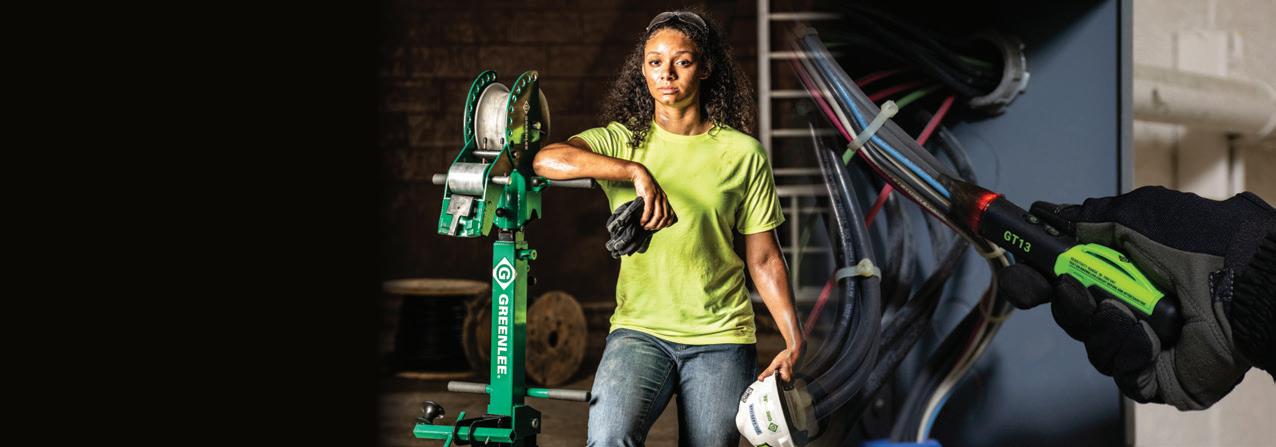
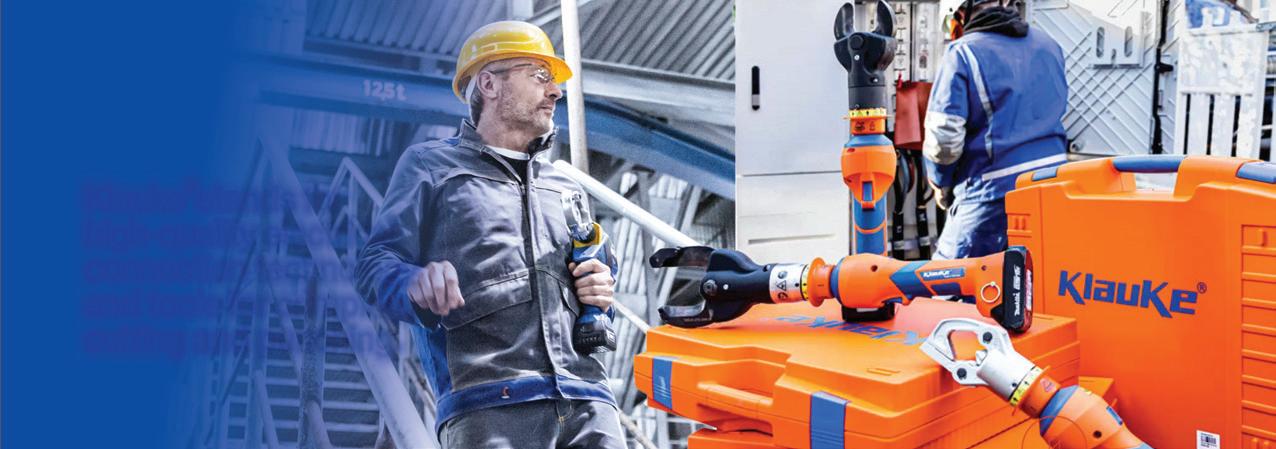




“Our study results advance one step further towards the practical application of solar steam generation technology, demonstrating great potential in seawater desalination, resource recovery from wastewater and zero liquid discharge,” Professor Zhang said.
“We hope this research can be the starting point for further research in energy-passive ways of providing clean and safe water to millions of people, illuminating the environmental impact of waste and recovering resources from waste.”
The transition to a circular economy is gaining momentum, as the examples we’ve highlighted in this article demonstrate, however, moving beyond simple waste management requires not only operational changes, but also a change in mindset.
As explained in the 2020 PwC report, Taking on tomorrow: the rise of circularity in energy, utilities and resources, utility leaders striving to embrace circularity can be guided by the following six steps for a more sustainable future:
• Map your circular opportunities. Examine where your current operational footprint and direction are taking you. Assess your opportunities to deliver circularity, looking deep inside your operations and outside to the surrounding community of suppliers, customers and stakeholders
• Be clear about your strategy and vision. Set out your circularity ambition and give it the necessary strategic
underpinning, ensuring that it is widely communicated and understood by those who have to deliver it
• Plan your circular transformation route. For some companies, it may be small steps. For others, it will require the transformation of their whole business model. Either way, identify the company-specific capabilities that will enable your circular transition
• Develop circular collaborations and frameworks. Forge the relationships and alliances that you will need to develop an effective circular ecosystem. Circular ecosystems need to be part of a supportive framework within well-functioning markets and have clear rules, a dedicated infrastructure and a logistical network
• Measure, review and communicate your progress Monitor your circularity steps with adequate management and reporting processes, and use those processes to further refine your circular strategy
• Move before your competitors, customers and regulators do. It’s better to facilitate your own circular transformation, rather than let others overtake you and find yourself playing catch-up
As governments around Australia prioritise the circular economy, it’s clear that utilities have a key role to play in closing the loop. Circularity is an ambitious journey, but the utilities that are able to integrate circular thinking into their core strategies and reconfigure their operations to optimise resources and minimise waste will find that they – and the planet – have much to gain.

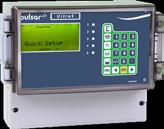
• Contacting & non-contacting measurement options
• Full, partially filled pipes, and open channel flow measurement
• Ultrasonic and radar technology
• Process measurement made simple
• Customer-centric
• Award winning service
For Australian sales & technical support, contact our local team or use our virtual Partner Locator to find the nearest Pulsar Authorized Distribution Partner



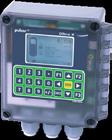



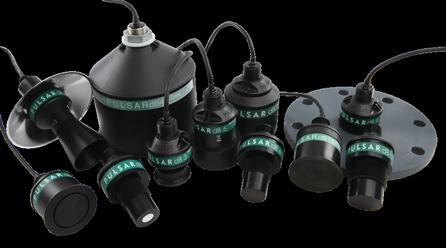



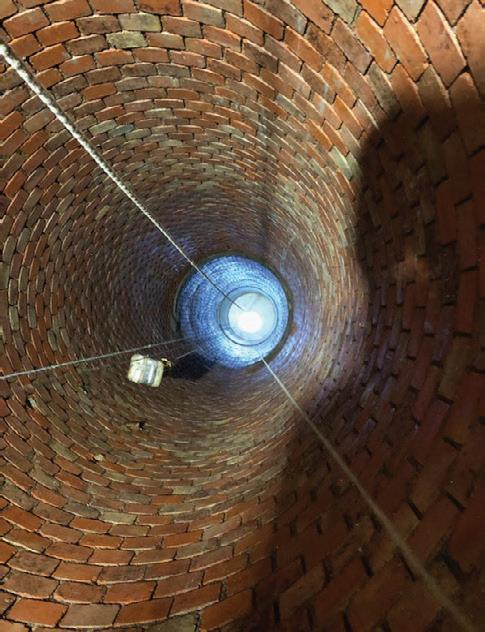

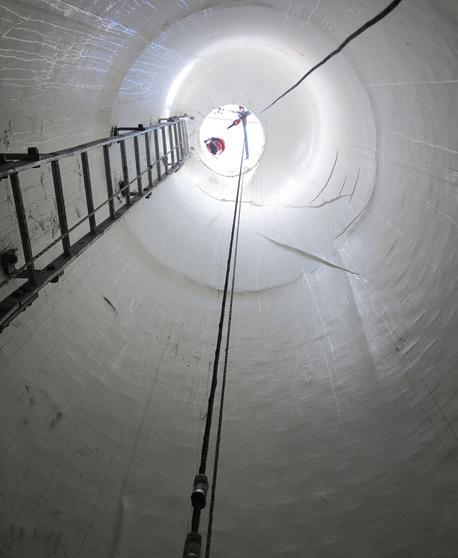
The viability of sewage services to small communities and the urban fringe is a key challenge facing Australian utilities. Often existing municipal sewage infrastructure is too far away or at capacity. Additionally, the cost to provide a small standalone municipal-type Sewage Treatment Plant (STP) to service a small population is restrictive.
True Water specialises in designing and installing high-quality, small-scale treatment plants to service small communities, satellite communities, and the urban fringe (500-5,000 estimated population). True Water’s decentralised and semi-decentralised technologies provide utilities with a long-term infrastructure solution that is profitable, simple to manage and secures compliance.
“Currently, the management of sustainable infrastructure is one of the most pressing global issues as urban centres continue to expand� Ensuring basic human services, such as water supply and wastewater treatment, is one of many challenges faced by researchers and managers in the 21st century�”
– Dr Stefan Holler, Water & Wastewater International
Development in coastal and regional areas throughout Australia has placed pressure on traditional sewage servicing methods with state and federal governments and utilities often seeking a change in approach to meet regional demand. The challenge arises when finding a solution for smaller regional communities or new developments on the urban fringe.
Septic and aerated systems are crude and the poor quality effluent they produce poses a high risk to public health and the environment.
A large municipal plant is often the most effective and economical way to deal with wastewater in a large town or city. Likewise, a simple septic or aerated system has been sufficient for managing wastewater in low-density rural settings. However, if you try to scale either method to a suitable size for a small community, you quickly run into problems.
Many existing regional STPs servicing small towns operate at a high cost per head of population and would not be viable without subsidisation. The scale, complexity and maintenance requirements of municipal-scale STPs present critical


challenges to smaller communities.
These older models for sewage services are not cost-effective or sustainable for small to medium sized communities. Sustainable options must combine reliable technology with economic feasibility.
Thanks to recent technology developments, leading global manufacturers offer small- and medium-scale STP’s that address all economic and operational requirements. This has made the implementation of decentralised or semi-decentralised services a suitable solution.
Decentralisation and semi-decentralisation involves the collection and treatment of wastewater within small catchments. Where in the past cost per capita was too high, modern technology allows high-quality treatment without complex treatment plants.
The treatment processes involve very few moving parts and minimal chemical dosing, reducing the operational and management costs, and removing daily or weekly site management. Key objectives include: economic viability, scalability to meet future need, proven technology and securing compliance.
True Water specialises in sewage infrastructure design to service communities of approximately 5005,000 people.




Abberfield’s place of business for decades past, finally owned by Abberfield Industries.
Designed & manufactured by Australians for Australian conditions.
n Highest quality for the lowest whole of life cost.
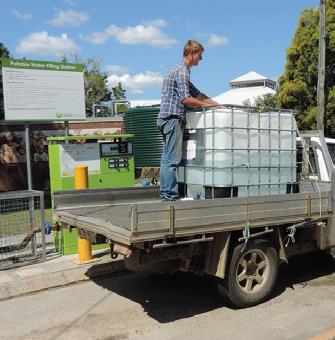
n Potable Water
n Recycled Water
n Bore Water
n Any Water
Designers & Manufacturers of specialist products since 1968.
The Colyer Family & the next generation
n Owner managed.
n Continuity & support assured.

“You can buy petrol any where around Australia... but you can’t buy water!”... Yet. Abberfield’s mission is to change that statistic.
Whole of life support.
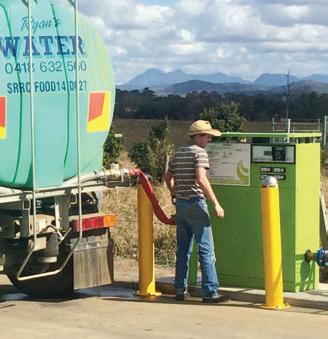

It’s easy to get excited about hydrogen. With its potential as a clean, flexible, storable, portable and safe fuel source, hydrogen could transform Australia’s energy sector, accelerate emissions reductions and boost the economy.
In fact, according to a 2019 Deloitte report, it could increase Australia’s GDP by up to $26 billion and provide 16,900 jobs by 2050.
A number of programs are currently underway to help realise Australia’s hydrogen potential, with federal, state and territory governments all releasing hydrogen strategies and allocating funding. According to Miranda Taylor, CEO of National Energy Resources Australia (NERA), effective industry collaboration, such as that fostered by the technology clusters, will be critical to success.
“NERA’s mandate is to create the
connections and collaboration needed to support the growth of advanced manufacturing of clean energy technologies, and industry-led clusters are central to this.
“We’ve identified technology clusters as the area where NERA can add most value, and they’re central to our strategy for supporting the commercialisation and scaling of the emerging technologies that are needed to support the production and uses of hydrogen.”
“Australia already has an abundance of research-focused programs –including cooperative research centres, hubs, CSIRO and industry-led projects – plus more than 60 demonstration or pilot projects, and an array of programs that target individual small businesses.
“However, decades of international experience has shown that small businesses operating in the same industry sectors and value chains can, by clustering, accelerate the
commercialisation and scaling of technologies, drive faster skills and knowledge transfer, and encourage novel ways of combining innovation and technology solutions.
“We need a far more coordinated way of developing Australia’s hydrogen capabilities and capacities, as well as promoting these to domestic markets and, importantly, to potential global customers.”
It’s intended that NERA’s hydrogen clusters will build a collaborative, innovative ecosystem and coordinate the relationships and action needed to support the growth of Australia’s hydrogen industry and technology value chains.
Ms Taylor continued: “Australia wants to export more than just hydrogen molecules; we want to be exporters of higher value technologies, skills and knowledge.
“I think NERA’s role in creating connections has been fundamental.

Identifying the commonalities between people, and then facilitating linkages between them, is very important. We see this as one of NERA’s most valuable functions across everything we do. That’s why it’s our tagline –creating connections for growth.”
Preceding the launch of the hydrogen clusters, NERA conducted a thorough consultation across the country to better understand the needs of both the technology companies and other stakeholders.
“What became manifestly clear from our consultation workshops was that we couldn’t do a top-down approach where we just focused on one big national cluster from the start,” Ms Taylor explained.
“We really needed a more organic bottom-up approach that took a regional approach and allowed the clusters to self-identify and form into
When renewable energy is used to produce hydrogen, it is a clean fuel with no emissions and has the potential to decarbonise many energy and industrial sectors.
Because of this it’s tipped to be a game-changer in the rapidly transforming energy industry, and a global effort is underway to develop hydrogen markets and achieve widespread use. Recently, NERA (National Energy Resources Australia) announced the launch of a $1.85 million network of hydrogen technology clusters to boost Australia’s burgeoning hydrogen industry. Utility spoke to NERA CEO Miranda Taylor about the technology clusters, their role in the development of a growing hydrogen industry, and what it will take for Australia to become a global hydrogen energy powerhouse.
natural communities of practice.
“This is how clusters work most successfully across the world, with clusters of technology firms often emerging in a regional setting around a common industry.
“We put out an expression of interest to the whole of Australia, inviting early stage clusters to apply for NERA seed funding and demonstrate their value proposition.
“NERA’s selection criteria evaluated a number of things, including identified benefits and outcomes, capabilities and chance of success, and the ability to leverage support from government and existing members, as well as proximity to and relevant/suitability to the regional hubs.
“We also consulted with each of the state and territory governments to understand their priorities so that we could identify which clusters were most likely to be able to leverage government support.”
As a result, 13 technology clusters have been selected to date, covering all Australian states and territories, and located in the emerging regional hydrogen industry hubs.
“Each state, territory and region is likely to have a different focus, for example production, storage, hydrogen transport and utilisation,” Ms Taylor said.
“The clusters have self-identified where their value proposition is likely to be highest in the first instance.”
As a whole group, however, the clusters formed so far will almost certainly address technologies across the spectrum.
“Although hydrogen is not yet an industry that exists at scale in Australia, hydrogen itself is not new. By way of example, it is already being used in fertilisers and agriculture and as industrial feedstock.
“There are also more than 60 pilot projects at various stages of

development and in different regions right across Australia. Clear regional ‘hubs’ are emerging where there are existing ports and export infrastructure; contingent industries; access to energy networks and renewable energy sources such as solar, wind and hydro; a skilled workforce; research facilities; and the technologies that will all be essential to developing the hydrogen industry and regional hubs around which these clusters are forming.”
NERA anticipates that the current clusters will gain significant momentum on their business plans in the near future, and intends to continue building the cluster network.
“By 18 months’ time we’d like all of the clusters to have identified and mapped out their market opportunities, developed and begun to implement their business plan, and to have identified some early collaborative projects and technology development opportunities,” Ms Taylor said.
“We hope to see that the clusters identify a common commercialisation or R&D challenge they can’t afford or have capacity to address individually; that they have complimentary capabilities and knowledge that they can share; that they undertake a joint market identification and development exercise. And this might include building shared test labs or market demonstration sites.
“One size will not fit all, and we want these hydrogen technology clusters to be diverse, self-led and adaptive. NERA will work with each cluster to develop the best approach and activities for them.
“Over the next year, we will be working with the clusters to form a connected national network – a virtual ‘super’ cluster – and, most importantly, we’ll be working with them to identify a sustainable funding model for their future success.
“We will also continue to work closely with the clusters that were not selected as part of our funding, and over the next six to 18 months hope that their value proposition may strengthen, and funding partners be secured.”
Meeting Australia’s goals and reaping the benefits of developing world-class hydrogen technology and expertise will require a big-picture perspective.
“There is a wide scope to this emerging hydrogen industry,” Ms Taylor said.
“We’re talking about everything from production, to storage, to transport, to utilisation. And then there are all the technologies and capabilities that will enable those different sectors.
“Australia needs to be addressing the whole value chain in parallel. We can’t just focus on one part of the story if we are going to join the dots and create an end-to-end industry, including ultimately an export market for both hydrogen and the supporting technologies, capabilities, knowledge and skills.”
Ms Taylor believes that if the groundwork is done now, Australian hydrogen exports are a strong possibility for the future.
“Looking at a ten-year plus horizon,
I think it’s realistic to say that we can export hydrogen. Ammonia is likely thought of as the most immediate export opportunity.
“Many of the projects currently on the books have a stage one domestic, stage two export and, like any major capital project, you have to factor in the timeframes required to do frontend engineering and design and final investment decisions. Globally, the hydrogen time horizon for achieving a fully mature and scaled industry is out to 2050.
“But we need to start today to take nationally coordinated, across-the-board action to build domestic demand and supply, as well as the required infrastructure, technologies, skills, regulations and community support, including for transport, storage and export.”
One important area of focus identified by Ms Taylor will be to develop the economics for ‘clean’ hydrogen, as clean hydrogen could play a major role in helping Australia and the world achieve net zero carbon target.
“Australia will have to find ways to decarbonise our energy system and industries – including hard to abate industries such as steel and cement – because the investment and finance market and our global customers are going to require it.
“We’re going to need many solutions. It’s a story of ‘and, and, and’ rather than picking one solution, but hydrogen is well positioned to play a major role.”

Ensuring Australia is at the forefront of the global hydrogen industry will require adaptability and a willingness to invest now for long-term rewards.
“All of the key players in Australia are committed and excited about the future potential for hydrogen, including
industry leaders, governments across the board, government funding agencies such as ARENA and the Clean Energy Finance Corporation, research organisations and technology entrepreneurs,” Ms Taylor said.
“The Federal Government and each of the states are rolling out their hydrogen strategies and funding significant initiatives and projects.
“It’s going to take strong government coordination, leadership and investment as Australia emerges from the current global pandemic and we seek to diversify our economy beyond our traditional resource industries into manufacturing higher value technologies, and decarbonise through clean energy solutions.
“We’ll also need to keep a clear eye on what the rest of the world is doing in the hydrogen space and the quantum of spending to support the development of the industry.
“Whilst Australia has many advantages, including our abundant and diverse energy resources, we are not the only country with advantages or an appetite to secure this emerging opportunity.”

Ms Taylor strongly emphasises that seizing the huge economic opportunity that a hydrogen industry could create will require strong government support.
“We cannot simply expect this to come about by itself. For example, there are no existing consumers or customers large enough to enable scale and drive down the cost of producing hydrogen.
“It’s going to require government leadership and cross-party collaboration to commit funding to develop Australia’s capability and capacity. We really do need to take action now and put serious funds on the table.”
If there’s one thing for certain, it’s that the next big transformation in the energy sector will evolve differently than those that came before and Australia cannot afford to miss the opportunity to be a leading hydrogen powerhouse, growing a new industry and helping decarbonise the world.

Trenchless rehabilitation of water mains and sewer rising mains
• Cost savings of up to 40% compared to sliplining
• Installation speeds of up to 10 metres per minute
• Up to 2,500 metres per pull
• Small pits, minor installation footprint
• Maximum capacity (low wall thickness of 6 mm for PN 16)
• Increase operating pressure independently of host pipe
• Avoid cost for disposal of asbestos cement mains
• AS/NZS 4020:2018 certified
Raedlinger Primus Line Pty Ltd
www.primusline.com
A climate-friendly and promising application is emerging for the natural gas network. Operators of gas grids can keep up with the trend to feed, transport and store renewable hydrogen in existing gas networks – without additional investment in new FLOWSIC gas flow meters. Ultrasonic technology from SICK continues to provide stable measurements in gas infrastructure despite changes in gas properties.
The demand for energy remains high and will continue to increase worldwide in the next few years. If our energy supply is to remain secure, a smart energy mix must cover the new requirements. The share of natural gas in this mix is estimated to grow to more than 30 per cent – today its share is about 22 per cent.
Renewable energy generated from wind, water, sun and biomass is the priority in the current climate discussion –despite some issues affecting reliability. Power generation can fluctuate due to changing weather conditions, and the amount generated is not predictable. In addition, there is currently not enough storage space for surplus power from solar and wind power plants.
The way out of this dilemma could be the conversion of renewable energy into gas generated free of carbon dioxide. In the power-to-gas process, green electricity is converted via electrolysis into storable gas, e.g. hydrogen. Methane or synthetic natural gas can also be stored. Producers of fuel cells profit from green hydrogen, and natural gas vehicles move in a climate-friendly manner.
This power-to-gas technology has potential to reduce emissions and could play a significant role in the decarbonisation of the energy sector. The hydrogen produced can also be fed into and stored in existing natural gas networks and infrastructure. The green energy added to the natural gas is thus used in an economically efficient manner and is available in sufficient quantities at all times.
Research teams in the European Union and Asia are examining the percentage of hydrogen that can be added to the existing natural gas network without compromising supply and putting strain on consumers. The admixture of between 5-25 per cent hydrogen to natural gas is currently considered possible.
Other considerations include: protection from leakage in existing systems, material compatibility of the pipelines and fixtures, regulation for explosion protection, and finally the question of how the calorific value is determined and controlled.
It is clear that the properties of natural gas change significantly when hydrogen is admixed. Many operating entities of gas networks ask whether this change has a negative effect on the measurement performance of its gas flow meters. Especially in times of cost savings, additional charges are pretty much a no-go.
“Of course, when feeding in hydrogen, the measuring devices already installed in the gas grid should still be in good working order,” Jörg Wenzel, Head of Product Marketing Services at SICK, said.
“That is why we have taken a close look at the effects of increased admixture of hydrogen on the ultrasonic technology and tested the FLOWSIC gas flow meters for this new requirement.
“Ultrasonic flow meters from SICK can measure hydrogenous natural gas. Measurement uncertainties which result from the admixture of up to 10 per cent hydrogen are either negligible or are compensated by the FLOWSIC."

In industry, very different limit values are currently being named for the admixture of hydrogen to natural gas, ranging up to 25 per cent by volume. What seems to be clear is that the proportion of hydrogen will increase steadily over the coming years. How quickly this happens will certainly depend on the speed of investment and the progress made with developing power-to-gas technologies.
SICK is continuing to study the measuring capability of its ultrasonic measurement devices for hydrogen contents exceeding 25 per cent by volume and will adapt the gas flow meters if necessary. Operating entities of gas plants can also continue to rely on the precise custody transfer gas volume flow measurement by SICK – and power-to-gas plants as well.

Mobility, infrastructure, logistics or production - automation is forging ahead in all industries with no sign of stopping. And right at the forefront are distance sensors and detection and ranging solutions from SICK. As intelligent sources of data, they deliver precise information for nearly any application. Over any distance, in all environments. Equipped with high-developed technologies and a wide range of interfaces. Discover a unique portfolio unparalleled throughout the world which unites diverse industry knowledge and extraordinary capacity for innovation in all dimensions. Comprehensive performance and boundless flexibility - combined for your success. We think that’s intelligent. www.sick.com/micron-to-mile
AS/NZS 61439 is a series of standards for low voltage switchgear and control gear assemblies, and helps address the need for portability between Australia and international suppliers. With the release of AS/NZS 3000 amendment 2 – also known as “the wiring rules” – it mandates the use of AS/NZS 61439 series for switchboard assemblies from May 2021.
NHP’s CUBIC modular switchboard systems and Concept distribution panelboards will ensure you are compliant with the new standards.
The NHP CUBIC modular system is based on the concept of efficiently using standard parts to construct a tailored switchboard to achieve your individual project requirements.
CUBIC possesses a deep knowledge of the new IEC 61439 standard thanks to its representation on the IEC committee as the only switchboard company independent from a switchgear brand.
CUBIC modular switchboard systems provide benefits such as:
• Maximised on-site health and safety with arc fault containment and fully insulated busbar options
• Minimised downtime by using demountable or fully withdrawable options
• Robust design for longevity – tested for seismic zone and high vibration installations
• Rapid retrofits and upgrades without the need for cutting or welding. Future modifications will always be possible thanks to no parts obsolescence
• Choice of accredited assembly manufacturers while maintaining a site standard
CUBIC modular switchboard systems allow you to enjoy the long-term peace of mind via a sustainable solution from a worldwide system with a proven track record.
Concept panelboards offer value-add solutions that are built to your specifications based on standard Concept panelboard design.

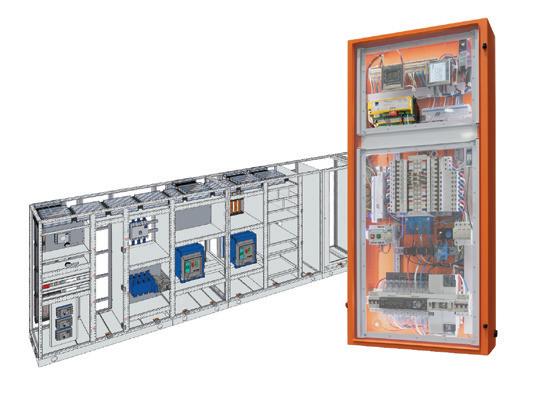
NHP has an extensive range of Concept panelboard models in stock, allowing for a quick turnaround if you need that panelboard urgently. NHP’s XPD software allows these designs to be drawn up quickly, further improving the turnaround time from enquiry to supply.
Some of the standard off-the-shelf configurations consist of:
• IP40 Concept One, IP42 Concept Plus, IP66 Concept Premier
• Grey or orange colours
• 24-96 way
• Main switch options: none, 160A, 250A, 400A isolators or up to 200A MCCB
• Single or dual metered
• Extra row
• Accessory modules
• Standard or isolation chassis
• Advanced RCD testing retrofit solutions
One important feature with the 61439 series of standards is that the complete assembly is verified to comply. If you start to make additions or alterations to the design, then the person doing this works takes on the responsibility for this altered design and needs to ensure the updated assembly is verified to comply with the 61439 standard – the original manufacturer is no longer responsible.
With the Concept panelboard range, there are several additions or alterations that can be completed to a catalogued configuration so that the assembly still complies to the standard.

Are you prepared for AS/NZS 61439 switchboard standards?
Don’t be left behind. NHP’s Cubic Modular switchboard systems and Concept distribution panelboards will ensure you’re compliant with the new standards.
For the complete 61439 switchboard solution, call your local NHP Account Representative on 1300 NHP NHP or go to nhp.com.au/61439



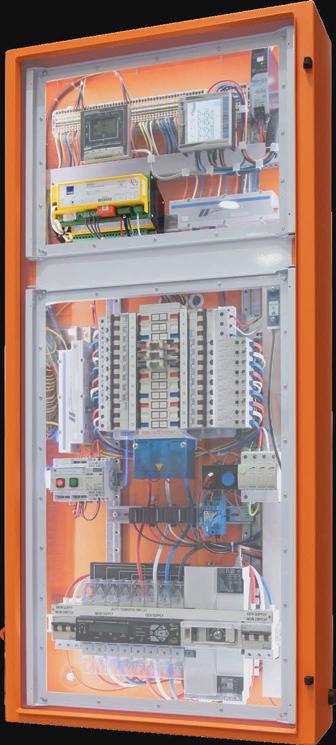
As underground cable and distribution systems age, electrical faults occur with increasing frequency due to damage, workmanship issues and general deterioration. Energy utilities need a quick, effective solution to identifying these faults before they can cause damage or harm the community.
Recently, a utility deployed a mobile contact voltage solution to perform a survey of their underground distribution areas. The client sought a new solution for an old labor-intensive process of identifying faults. They were unaware of any ongoing faults in their underground distribution system and had no record of any public safety risk reports over the past decade.
A crew was quickly deployed, operating the sensitive detection equipment to survey the city. Within days of starting, one of the trucks triggered an alarm while passing a church complex.
A canvass of the area identified a large energised steel fence surrounding the church’s elementary school playground. The technicians investigated and confirmed the fence was energized at 107 Volts.
Because playground equipment was located along the energised fence, the survey team immediately cordoned off the area and remained on site to ensure the public remained a safe distance from the hazard. A utility repair crew was dispatched and arrived shortly thereafter.
A quick review of GIS drawings noted a service cable located perpendicular to the fence and adjacent to a tree. Service was disconnected to make the area safe. Excavation of the area revealed that the tree roots cracked the service duct and pushed underground cable into contact with a buried steel fence post. A small section of cable was replaced and the concrete sidewalk was restored.
This is a typical underground fault that can only be discovered using Logsys Power Service’s exclusive mobile contact voltage detection solution.
The solution provides unmatched intelligence and visibility into the health of underground distribution systems and assets. Using a combination of cutting-edge electric field detection technologies and purpose-built data systems, we proactively scan utility assets and detect electrical faults before they can impact utilities.
Logsys’s capital expenditure-based, programmatic approach to secondary system management provides accurate asset assessments, helping electric utilities:
• Improve public and worker safety
• Improve system reliability through intelligent asset management
• Reduce costly energy losses and carbon footprint
• Reduce emergency and unscheduled O&M costs
• Prevent risk and cost of failure or premature replacement of assets
• Avoid service interruptions
All data collected in the field is organised and accessible in real-time through both automated reports and our web-based geospatial software application.

A RECENT SURVEY OF A UTILITY’S UNDERGROUND DISTRIBUTION AREAS DISCOVERED AN ENERGISED FENCE CLOSE TO A PLAYGROUND.
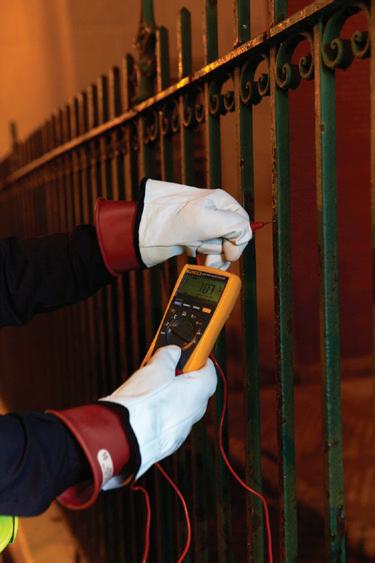
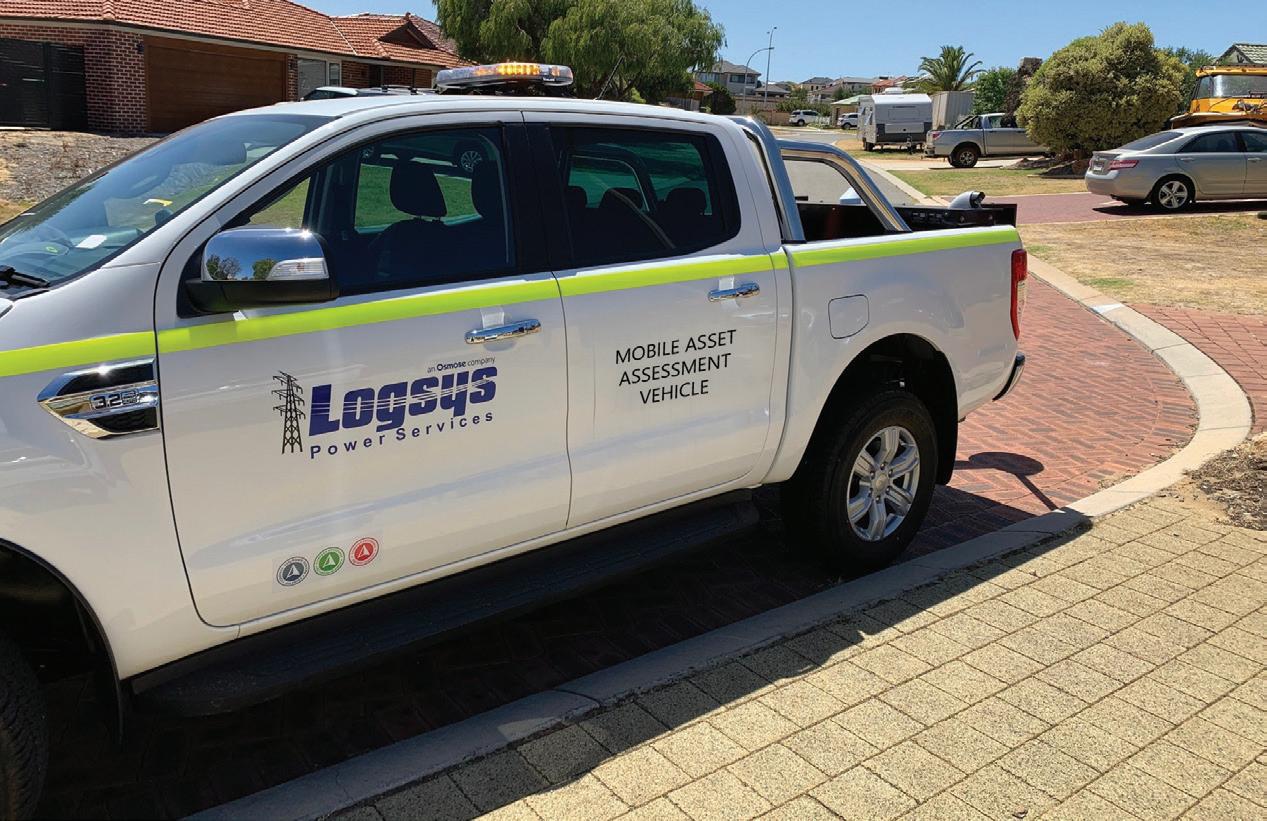
To learn more, contact your local Logsys Power Services professional at jjankowitz@logsys.com.au

Discover a new approach to mitigate safety and reliability risks in your underground distribution network using state of the art technology with our Mobile Asset Assessment Vehicle, MAAV TM
Reliable data collection to improve asset management decisions
Improved public and employee safety

Improved underground system performance and reliability
Reduce energy losses
Lower emissions an

At the beginning of 2021, the Energy Security Board (ESB) handed down its 2020 Health of the National Electricity Market (NEM) report, the fourth annual report measuring the health of the NEM against six strategic energy objectives. With increasing renewable generation simultaneously improving emissions reduction and threatening security, plus an imminent technology boom underpinned by a competitive market – there’s a lot to cover. Here, we break down the report, and examine the areas of reform needed to address the major challenges facing the NEM.
Dividing energy needs into two categories of ‘reliability’ and ‘security’, the report finds contrasting results. While real progress has been made in terms of reliability through improved generation capacity, emission reduction, competition and network investment, security needs to be shored up through system stability and investor confidence.
Many reforms are still urgent through the Post 2025 market design directions paper, which was also released on 5 January 2021. The Post 2025 report was developed in consultation with industry and governments, consolidating proposed reforms to address the challenges laid out in both the Health of the NEM assessment report and a Consultation Paper (issued September 2020).
Building on the recommendations in the 2017 Finkel Review, the former COAG Energy Council established a Strategic Energy Plan for the NEM for the transition from large-scale thermal generation (predominantly coal-fired) towards large- and small-scale renewable generation, (mainly wind and solar).
Six strategic objectives were used to measure the health of the NEM:
As the COVID-19 pandemic took hold of Australia, financial pressures increased for residential and business consumers alike. The Australian Energy Regulator (AER) was forced to take steps to address the rising proportion of customers in debt, and provide support for those that were unable to pay bills.
Despite falling wholesale and retail prices however, affordability still remains a critical issue for some customers.
The affordability outlook is generally positive, with retail prices dropping and an end to the pandemic on the horizon, however, there is a risk of higher consumer prices thanks to the investment required in transmission and dispatchable generation to integrate more renewables.
Although consumer satisfaction is on the rise, it still lags in comparison to other essential services industries. The report indicates communication with customers as a priority as relationships with retailers and other service providers grow.
Additional smart meter installations and energy management systems, as well as the post 2025 market design work on distributed energy resources (DER) and two-sided markets have also been identified as opportunities for consumers to gain value.

By and large, security remains the most pressing issue in the NEM, especially as more variable renewables enter the system, rapidly displacing dispatchable thermal generation and thereby making it increasingly difficult to prevent blackouts.
The combination of increasing load and supply variations of utility-scale, weather-dependent generation, as well as an aging thermal generation fleet, exacerbates the security issue. These issues are complicated to address because of the significant pace of change and the difficulty of delivering an efficient suite of system services expeditiously.
The ESB has dubbed the outlook as ‘moderate to critical’. The measures taken by the AEMC to improve system strength and the interim security measures introduced have improved the outlook, with the post 2025 market design work to implement system security rule changes in 2021.
Down from ‘critical’ in 2019 to ‘moderate’, there are no immediate reliability concerns. This has been attributed to a series of reliability changes being implemented by the energy ministers from March 2020.
There has been a substantial emissions reduction in the NEM, the report indicating emissions were down by 25 per from 2005 levels, with levels expected to be 50 per cent down by 2030.
The Integrated System Plan (ISP) – which examines multiple scenarios – indicates the NEM is currently tracking the ‘Step Change’ trajectory, reflecting the speedy investment in renewable generation and the subsequent downward trend in thermal generation.
Potential concerns have been flagged in the Electricity Statement of Opportunities (ESOO) regarding New South Wales and the 2023-24 Liddell Power Station closure, however, the progress of the Queensland-NSW transmission interconnector is promising, and local new renewable generation of around 900MW is underway.
Post 2025 design measures will need to carefully manage the wave of new renewable generation in Victoria and New South Wales to ensure adequate firm and flexible back-up, which may require major policy steps being taken in some state jurisdictions.
4. Effective development of open and competitive markets
As spot prices dropped to levels not experienced since 2015, competition has been evident in the wholesale electricity market, with the trend predicted to continue for the next three years.
In the retail market, little change has been observed since 2019, which could be a symptom of COVID-19 and the risks that retailers were faced with in terms of managing customer debts and hardship.
The contract growth in the NEM over 2019-20 has been in exchange traded volumes, which have risen from around 50TWh per annum to 735TWh. Over the counter (OTC) bilateral contracting has remained relatively stable. The report indicates that expanding the AER’s ability to procure information would garner more transparency in the electricity contract markets.
Global declines in both coal and gas markets have influenced the NEM, with gas prices expected to experience a slow rise out to 2022, whilst coal price remains flat. Additionally, the report also found that coal quality is a concern for some plants due to a tightening of supply availability, leaving a significant risk of rising black coal prices.
Competition is expected to underpin innovation, with a forecasted fall in capital costs of most technologies in coming decades. The Federal Government’s Low Emissions Technology Statement, published in August 2020, identified key target areas – clean hydrogen, energy storage, low emissions steel and aluminium production, carbon capture and storage, and soil carbon.
Overall, the 2020 rating of the competitive markets criteria has improved from ‘moderate’ in 2019 to ‘good’.
5. Efficient and timely investment in networks
Network investment as a whole is headed in the right direction, with critical investments on track, interim Renewable Energy Zone (REZ) development planning rules under consideration, and a workplan for DER integration set in motion. The rating for network investment stands at ‘good-moderate’, marking an improvement from 2019.
The outlook remains at ‘moderate’ due to emerging challenges in building the expanded transmission network. Again, increased renewable generation has had an impact on the timing of the new required investment.
The report also found that substantial investment is required in the distribution network to accommodate DER’s further integration into the system. The post 2025 market design initiatives will incorporate addressing the significant technical and regulatory challenges posed by DER – which the report states “are not trivial“.
The significance of major ministerial-level governance changes is yet to be determined, according to the report. These changes included the replacement of the former COAG Energy Council by an Energy National Reform Committee of Cabinet, and a Ministers Meeting where matters not included in the cabinet-level agenda would be discussed.
Following a review of the ESB in 2019-20, ministers extended the work on post 2025 Market Design initiatives into 2021, with the future of the ESB to be decided thereafter.
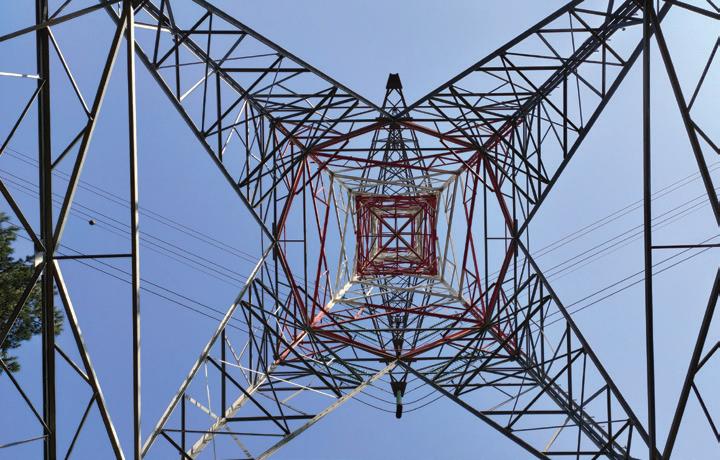
In 2020, different jurisdictions outlined numerous policy initiatives in conjunction with NEM policy developments and mechanisms. All NEM states and territories (Queensland, New South Wales, Australian Capital Territory, Victoria, Tasmania and South Australia) also set individual emissions targets (net zero by 2050), strategies and enabling policies.
At a federal level, the government has underwritten several critical transmission projects, and is in continuous collaboration on several generation projects concerning the potential for underwriting, and highlighted a gas-led recovery for manufacturing in its Technology Statement.
The report found that it is imperative that these initiatives be managed within the NEM to maintain it as an integrated national electricity market – making it a challenging outlook.
The Post 2025 market design directions paper identifies four areas of reform to address key challenges facing Australia’s electricity supply.
The reforms address the following four specific areas of need:
• Resource adequacy through the transition – ensuring reliability and affordability throughout the transition to lower emissions and new generation technologies
• Essential system services and scheduling and ahead mechanisms – establishing a more robust power system that can keep the lights on as change happens
• Demand side participation – enabling energy consumers to capitalise on opportunities to allow tailored consumption choices (i.e. switching to off-peak use, installing more efficient appliances, or investing in locally based generation)
• Access and transmission – delivering futurefocused networks compatible with the connection of renewables, with affordability front-of-mind
ESB Independent Chair, Dr Kerry Schott AO, said there are ways to address the issues laid out in the Health of the NEM by redesigning the market, but the speed of change means reform is increasingly urgent.
“The Health of the NEM clearly shows the repercussions of rapid change in our electricity system and highlights the absolute urgency of addressing them,” Dr Schott said.
“We are concerned about security constraints in some parts of the NEM and the increasing pressure on distribution networks from growing rooftop solar penetration.
“This, combined with growing large-scale renewable generation and low wholesale prices, means it is vital that post 2025 reforms are put in place that can work alongside government policy schemes.
“We’re moving in the right direction, but major changes are needed to unlock value to customers and ensure capital investments are made in an efficient and timely manner to deliver the affordable, reliable and secure electricity consumers need.”
The scope of reform in the Post 2025 market design directions paper has been narrowed, including removal of proposed measures to deal with the exit of ageing thermal generation which will instead be addressed through other resource adequacy mechanisms.
“We are focused on modernising the market, unlocking value for consumers and boosting consumer protection, removing red tape and making it easier for businesses to get in and offer the services customers may want to buy,” Dr Schott said.
“These reforms address the critical challenges facing the energy sector – affordability for all consumers; reliability and security; renewable energy zones; integrated system plan rule changes, enabling new generators to have adequate access to the grid; and national standards for distributed energy (or behind the meter) resources.
“While many people in the energy sector have different perspectives on the possible solutions or priorities, everyone agrees on the problems we identified earlier in this process. What we have in place now is no longer fit for purpose for the energy transition and beyond.
“The time to tackle these problems is now.”

The ESB will develop detailed market designs for ministerial consultation, before making final recommendations to the Federal Government in mid-2021.


We are very proud to have achieved so much in the last 30 years. Earthing has come a long way!
With a long history in carrying out earthing design and testing, Safearth is Australia's largest and most experienced earthing and lightning protection team and is at the forefront internationally. In fact, Safearth invented some of the key testing methods that are commonly used today!
Safearth continues to pioneer and diversify, led by our unwavering commitment to solving meaningful problems in a valuable way.
Let us help you with your electrical challenges…
Earthing Testing
Earthing Design
Needs Analysis
Assessments & Audits

Our offices
○ Where we’ve worked
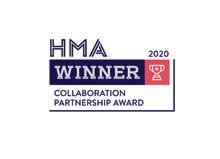
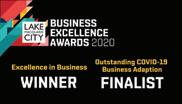
Incident Investigation
Asset Management
Standards & Policy
Complex Problems
With more than 25 degree-qualified professional engineers, Safearth is the largest and most experienced team of earthing engineers in Australia.
We’ve worked with clients around the country to save them thousands of dollars in project implementation and ongoing maintenance costs whilst improving their safety.
INTERNATIONAL OFFICES:
USA | Canada
safearth.com
enquiries@safearth.com
1800 327
844
Testing in 1994 with Australia’s first commercial earthing test equipment for low current, off-frequency injection testing, produced under licence using Safearth’s designs. Safearth’s current generation of earthing injection testing equipment.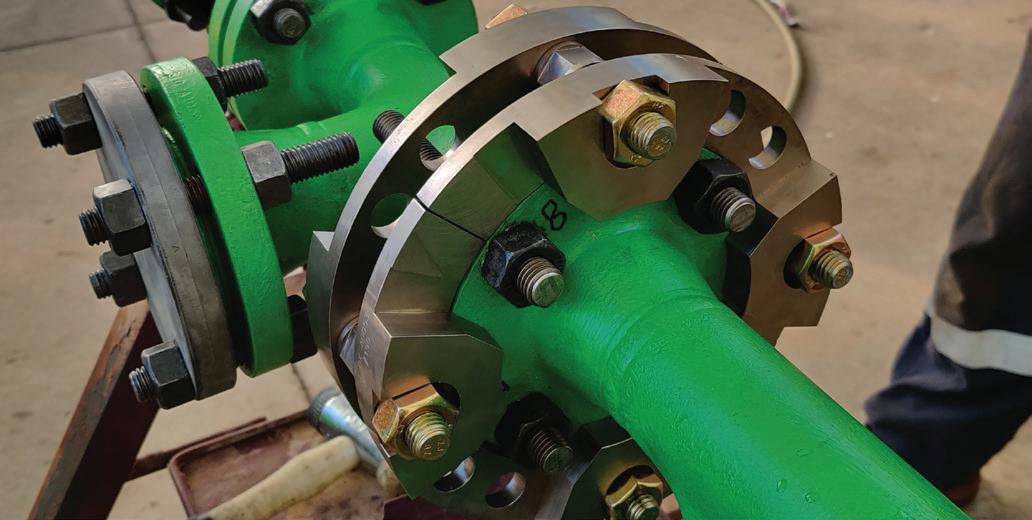
Piping solutions provider PSSS has added the first of a range of weld-free repair and maintenance offerings from SRJ Technologies to its rental catalogue. And it has many in the industry excited.
When Piping Specialty Supply Services (PSSS) Managing Director, John Wilton, heard about SRJ Technologies’ BoltEx® flange clamp, he knew it was the answer to an ongoing challenge in piping repairs and maintenance.
The innovative clamp is precision engineered to fit snugly and securely over pipe flange joints, enabling hot bolting to take place.
Mr Wilton said the simplicity and effectiveness of the clamps make them an appealing proposition.
“There’s a very simple training process our clients can undertake so it eliminates the costs associated with bringing in specialist, third-party suppliers for repair and maintenance requirements,” he said.
“We had a contracting client who had been looking for years for exactly this sort of solution to help a major oil company.
“After one meeting with PSSS and SRJ, they are very excited about the prospects of having access to BoltEx, which in spite of its innovative design, is a simple and straightforward solution.”
Additional cost savings are available to contractors and asset owners because PSSS has included BoltEx in its rental equipment inventory, allowing access to the products only when required.
Mr Wilton admits it’s a valuable addition to the PSSS catalogue. The Brisbane-headquartered company specialises, as its name implies, in piping solutions for clients across the Australian oil and gas, resources and petrochemical industries among others.
With an ever-growing range of solutions to help clients with shutdown, maintenance and repair tasks, PSSS helps clients at all levels of the piping supply chain.
SRJ Technologies was founded in the UK and listed on the Australian Securities Exchange in September 2020. The company provides a range of innovative asset integrity solution technologies and provides services designed to offer greater efficiency, improved productivity and better safety outcomes for asset owners and managers.
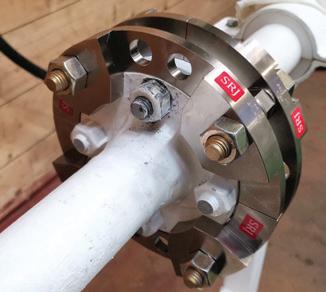
In the piping space, in addition to BoltEx, the company provides a range of other reusable, weld-free solutions including the Multi-Shell Repair Clamp and Pipe Coupling. SRJ also offers bespoke enclosure repairs to facilitate fast and effective repairs for critical infrastructure.
Mr Wilton said PSSS is working with SRJ to build rental inventory of the additional piping solutions.
According to SRJ Technologies CEO, Alexander Wood, the partnership with PSSS is a significant advantage for both companies.
“In the nine years it has been operating, PSSS has built relationships and a very good reputation across the Australian pipeline sector,” Mr Wood said.
“SRJ has some of the most innovative repair and maintenance solutions in the industry and with PSSS’s assistance, we are making great inroads to educating and exciting the market.”
Mr Wilton said while many asset owners and operators have been resistant to hot bolting, the new SRJ solutions are likely to help drive change.
“While a lot of people understand the productivity gains and cost efficiencies associated with hot bolting, many products to date have not provided them with enough confidence that risk is eliminated,” he said.
“When they see BoltEx, I expect those opinions will start to change.”










To efficiently manage a reliable gas distribution network, you need data from various points within the network. Understanding the actual pressures across the network will assist in validating modelling, optimising system regulation, identifying leakages and help prevent negative customer experience.
Although telemetry may already exist as part of the network control system, this is generally installed where control assets are located, leaving significant parts of the overall network unmonitored.
Traditionally those gaps might be periodically checked by manual measurement, portable chart recorders or data loggers. These approaches are limited in practice by relatively high labour costs and a lack of near real-time data availability.
The gas network needs robust, reliable and low-cost remote pressure monitoring solutions that are also safe to use in the natural gas environment.
To provide this solution, a number of Australian gas distribution companies are utilising Metasphere’s ATEX/ IECEx Zone 0 (Gas IIB) approved Point Blue IoT (4G LTENBIoT/Cat-M1) Remote Telemetry Unit (RTU).
As a battery-powered telemetry logger, the Point Blue IoT RTU can be deployed in permanent or short-term (winter program) locations easily and economically whilst maintaining safety.
The Point Blue IoT RTU can be connected to a wide variety of pressure transducers currently on the market, so the pressure range and mechanical installation is not constrained by a unique or vendor-specific sensor.
The Point Blue IoT RTU offers both dynamic trending (i.e. event logging) and dynamic data transfers back to an existing host service, like a SCADA system using DNP3, or via Palette, Metasphere’s web-hosted Telemetry Softwareas-a-Service product.
For example, under normal conditions data may be logged every 15 minutes and transferred daily to a host service for
analysis; or under configurable ‘alarm’ conditions it may be logging every three minutes and transferred hourly for more immediate attention and action.
Utilising the available feature sets enables a proactive approach to the status of the gas network while only calling upon the Point Blue IoT RTU's battery power when it is most needed.

Metasphere’s Point Blue IoT RTU can monitor pressure at pressure reduction stations (PRS), local distribution zones (LDZ) offtakes/city gates, extremity points, network validation points and many other places. You can also connect additional external sensors, flowmeters, serial or digital devices to enable monitoring of network performance beyond just pressure.
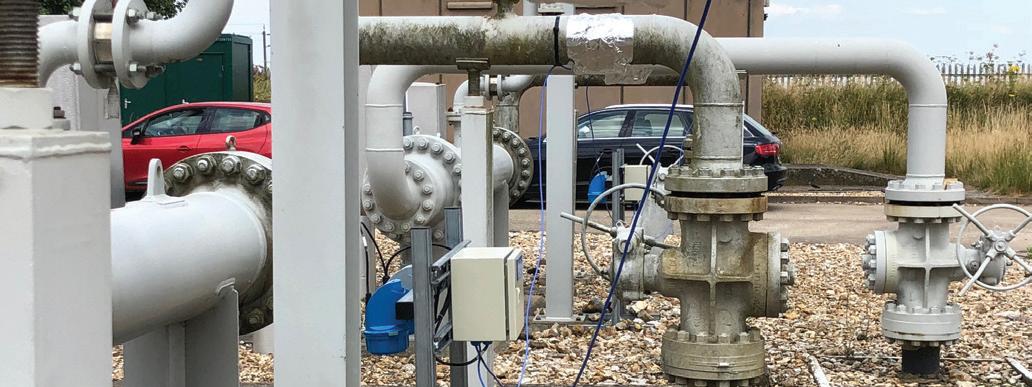
Compact, low cost, battery-powered radar sensor and Telemetry all-in-one ATEX/IECEx (Zone 0), NB-IoT, Cat-M1

Part of an all-in-one solution that delivers
Full network visibility, performance and forecasting
Also perfect for


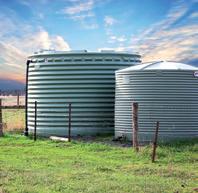

The Gannawarra Energy Storage System is a 25MW/50MWh lithium-ion battery that shares connection infrastructure with the 50MW Gannawarra Solar Farm. Edify Energy, with support from EnergyAustralia, recently published a knowledge sharing report covering its first year in operation. Here, we explore some of the learnings from this 12-month period and provide insights into how this may drive development decisions for future battery systems seeking to support renewables and advance the energy transition.

If investment in the National Electricity Market (NEM) in the last few years has taught us anything, it is that there needs to be a renewed focus on energy projects premised on the potential to both create value and mitigate risk (technical, market and operational), rather than being solely driven toward the lowest levelised cost of energy.
The coordinated investment of batteries and renewables is a potential pathway to realise value creation and risk mitigation, and one that is consistent with the findings of the most recent Integrated System Plan from the Australian Energy Market Operator (AEMO).
The inclusion of batteries in the business case for renewable projects has a number of advantages, such as diversification of revenue streams (for example, energy markets and frequency control ancillary services) and mitigating market risks such as increasingly shallow prices during daylight hours for solar.
What is not clear however, is the deployment model to access these advantages. In particular, the question on whether to co-locate the renewable and battery facility behind common network infrastructure or to establish each facility on a stand-alone basis does not always have an obvious answer.
The principal feature that distinguishes the Gannawarra Energy Storage System (GESS) from other operational batteries in the NEM is the fact that it shares network connection infrastructure with the Gannawarra Solar Farm (GSF).
The obvious benefit of such an arrangement is that it allows for greater utilisation of costly network infrastructure.
The drawback is that, depending on the relative size of the network infrastructure, this sharing could introduce an export constraint for the combined facility.
In the case of the 25MW GESS and 50MW GSF, a combined 50MW export limit exists. However, this export limit only serves as a constraint to the extent it prevents access to commercial opportunities for either project; something that can be assessed by viewing the first 12 months of GESS’s operations.
The role that batteries have been playing in energy and frequency control ancillary services (FCAS) markets in the NEM is already widely reported on.
Consistent with other batteries, the predominant source of revenues in the first 12 months of GESS’s operation was from FCAS, not the time shifting of energy.
For the most part, the 50MW export constraint did not place a significant commercial limitation on the operation of GESS and its access to energy and FCAS market opportunities.
The observed dispatch profile of GESS closely tracks that of prices (that is, dispatching in mornings and evening peaks); a trend that is anticipated to continue as increased solar uptake continues to depress prices during daylight hours.
This brief period of operation of GESS therefore highlights the complementary nature of solar (if not wind) and batteries, with batteries serving to mitigate the downside market price risks of correlated solar in a way that is not overly burdened by the physical constraints introduced by common network infrastructure.
That said, there were inevitably occasions (including some high price periods) where the 50MW export constraint of the combined facility did introduce a commercial limitation on GESS’s operation.
During these periods, it was demonstrated that having access to an accurate solar forecasting system and a high degree of coordination between this telemetry and the trading floor is important to limit lost value that could otherwise be captured with greater confidence in the solar output.
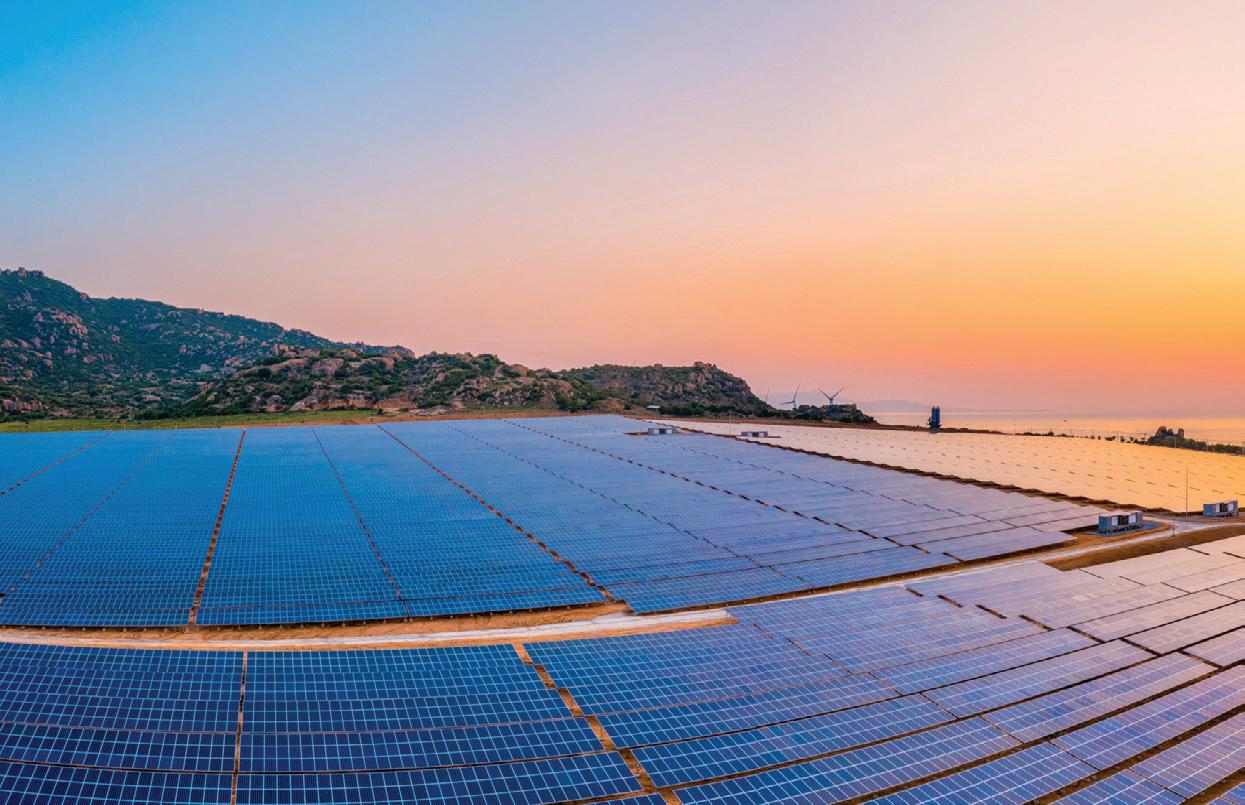
This effect can be most pronounced in the morning and evening ramp up and down periods, during which solar output is harder to forecast and which also coincide with the end and beginning of price peaks.
Another distinguishing feature of GESS is that network tariffs are incurred when drawing a load through Powercor’s 66kV distribution network; a position that is inconsistent with Transmission Network Service Provider approaches (and is currently subject to standardisation via rule change processes).
The management of GESS’s state of charge therefore needs to account for these tariffs. The presence of GSF however creates an opportunity to avoid these network tariffs, where charging during solar hours would not place a load on Powercor’s 66kV network.
This option is not available to a stand-alone battery solution connected to a distribution network, which in all instances would face network tariffs when performing a charge.
In addition to making greater utilisation of network infrastructure, the co-location of batteries and renewables should also be capable of accessing further integration benefits, which are not accessible today, but could be proposed as part of current market design reform efforts. These include, but are not limited to:
• Using the battery to make real-time adjustments in output (i.e. depart from its scheduled position) in response to the renewable generator’s fluctuating generation to permit self-performance of regulation services and bring causer pays FCAS relief to the renewable generator; a material operational cost and risk that cannot be directly hedged today. This is in contrast to classifying the combined facility as a scheduled generator (recognising the potential capacity and energy limitations of the battery in managing a scheduled position) or providing concurrent regulation FCAS from the battery, which is not a perfect hedge to this exposure
• Constraint relief, whereby a load created by the co-located battery permits greater output from the renewable generator during periods of network constraints. The objective here should be to permit
coordination in dispatch so that it is only the co-located renewable generator that is the beneficiary of this load, and no free-rider situation is created to the benefit of other generators behind the constraint. This would serve to address a material operational risk facing many renewable generators and improve the commercial case and utility of batteries. It has application to both existing generators looking for options to mitigate new constraints, and projects in development looking to mitigate expected constraints
• Improved compliance against aspects of Generator Performance Standards, such as using the technical properties of the battery system to meet Continuous Uninterrupted Operation (CUO) requirements or provide a degree of system strength remediation. Generators today carry significant technical compliance obligations but are not always empowered to manage them. Expanding the technical options available for generators to meet compliance obligations with co-located battery systems should benefit developers and the stability of the system alike
With recent statements from Canberra in support of gas as a transition fuel at odds with findings in AEMO’s ISP, which view of the future ultimately proves correct will largely be determined by investors in the energy sector.
Observing and learning from early battery projects is important to inform developers and investors to ensure the optimal and correct decisions are taken.
We at Edify see the growing coordination between renewables and batteries as an inevitable eventuality as the sector strives for a sustainable, low-cost and stable system.

We’ll continue to play a leading role in driving toward optimal outcomes for investors, consumers and the energy system.
The future is now. There is no time to waste.
Access to near real-time water meter data presents opportunities for significant improvement in water and asset management, billing and customer service. However, it also brings with it a range of challenges.
Taggle Systems has worked closely with councils and water utilities for over ten years delivering smart water metering solutions and has gathered a wealth of knowledge and experience in best practices, from preinstallation planning through to data delivery.
It is important to understand that smart water metering is not purely an IT metering project, it’s a business transformation project. The workflow, processes, decisionmaking and activities of many teams across the organisation can be improved through analysis and understanding of the data collected from the new meters.
The water and wastewater team, GIS and asset management teams will experience a wide range of benefits and improved processes in water and asset management.
The customer service team will have access to new tools and additional information available within the Customer Portal and be better able to assist with customers’ enquiries, improve customer relations by informing them of leaks, and easy updating of contact information.
The finance and billing team will benefit from better management of customer accounts, with simplified special reads, reduced insurance claims, and improved revenue forecasting and recovery.
For the marketing and social media teams, they will have the opportunity to benefit from good customer stories flowing from bill shock avoidance and water savings initiatives, as well as using the data now available to better target messaging around water savings and education campaigns. The marketing team will be key to driving customer engagement regarding the availability of the Customer Portal for self-help monitoring of water consumption and identifying leaks.
If any of these key teams are not included in the planning, development and training, or are dragging their heels, it will affect the success and benefits realised across the entire project.
For this reason, and from the outset, Taggle implements Project Working Groups across the key departments to ensure that the utility maximises the benefits from its investment.
To unlock the full potential of a smart metering project, it is essential to understand that it is an evolving journey. The data collected in the first few months after installation provides a wealth of insights as to the reticulation network health and where existing leaks and issues are located.
This creates a flurry of enthusiasm and activity. Once these issues have been addressed, and identifying leaks and breaks as they come up becomes business as usual, it is then that the next steps in the journey should take place.
The data provided by the smart water meters should then be used to target specific problems experienced by the council or water utility. This could be to inform infrastructure decisions, network planning, improved forecasting for water and sewer or by monitoring the effects of tourism, seasons or events.
Then perhaps look beyond just utilising smart meter data and explore other sensors. Taggle provides solutions for pressure, level, weather, water and air quality, all of which can provide valuable insights for better water asset management. Involving your water modelling consultant in deciding deployment of extra sensors helps define what kind, where and how many extra sensors and is an excellent tactic to bring maximum benefit.
Due to the relatively small cost of IoT sensors, you will find that your SCADA team now has an opportunity to deploy more sensors to gain more field data and make even better decisions.
Where previously a water meter was only read once every three months, new smart water meters now provide 2,190 reads in the same period – you can understand how the sudden increase in data can present a challenge. Dedicated software is required to crunch those numbers, and up-to-date records are important to ensure a smooth rollout.
Taggle has a range of tools to ensure the correct data flow, including a field operations app to assist with installation and maintenance in the field. It also offers its Aqualus Water Meter Data Management software which can import customer data from your CRM, export meter data to your billing and SCADA systems, and to the Customer Portal for end users. A seamless flow of data between these systems is essential to avoid data mismatch and the resultant headaches.
Customer service should be treated as a mobile experience rather than simply a paper bill. The opportunities provided by the new data enable customer service to not only answer concerns regarding high water bills, but to additionally educate water users in how to better manage their water consumption via the Customer Portal.
If the customer service team is not comfortable with the software or isn’t driven to assist in reducing water consumption, then the divide between the water services team and end users can be hard to bridge.
Dedicated customer service personnel, focused on water, can prove invaluable in driving engagement with both domestic and commercial customers, helping them to better understand their water consumption. While the system automates leak and high consumption alerts, triaging extreme events or persistent non-responders can prove highly worthwhile in reducing lost water and improved customer satisfaction.
So, when considering a new smart metering project or evaluating an existing one, it is important to look at the wider picture, beyond just the water services team, and consider any next steps in the evolving journey of the project. Are all the potential players involved? Have they had adequate training? Are they continually challenging the data to find new value and insights? There are real nuggets to be found, you just have to look for them.
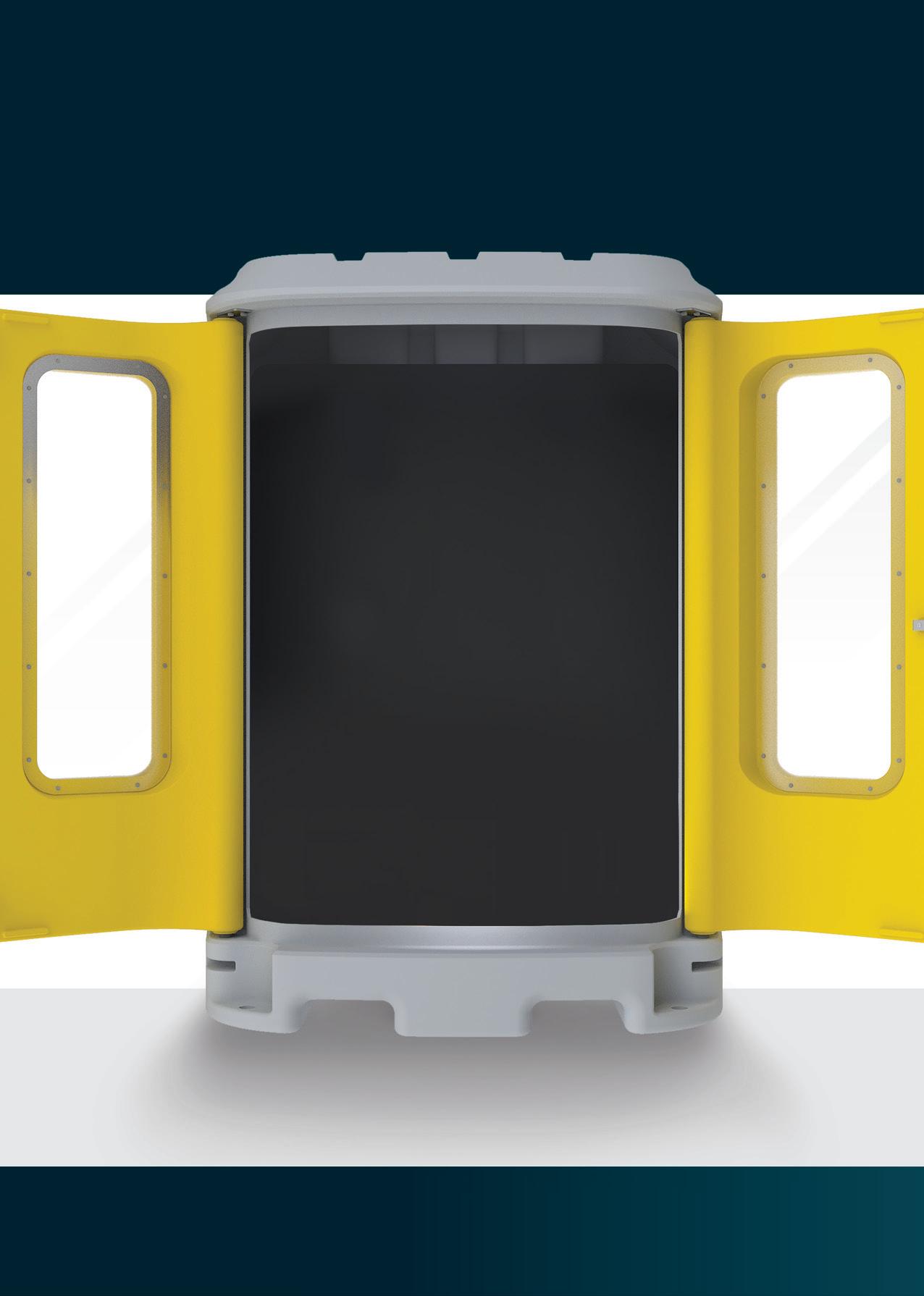


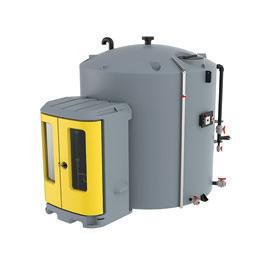

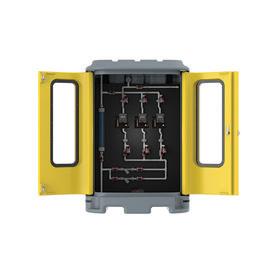
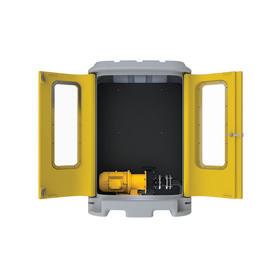

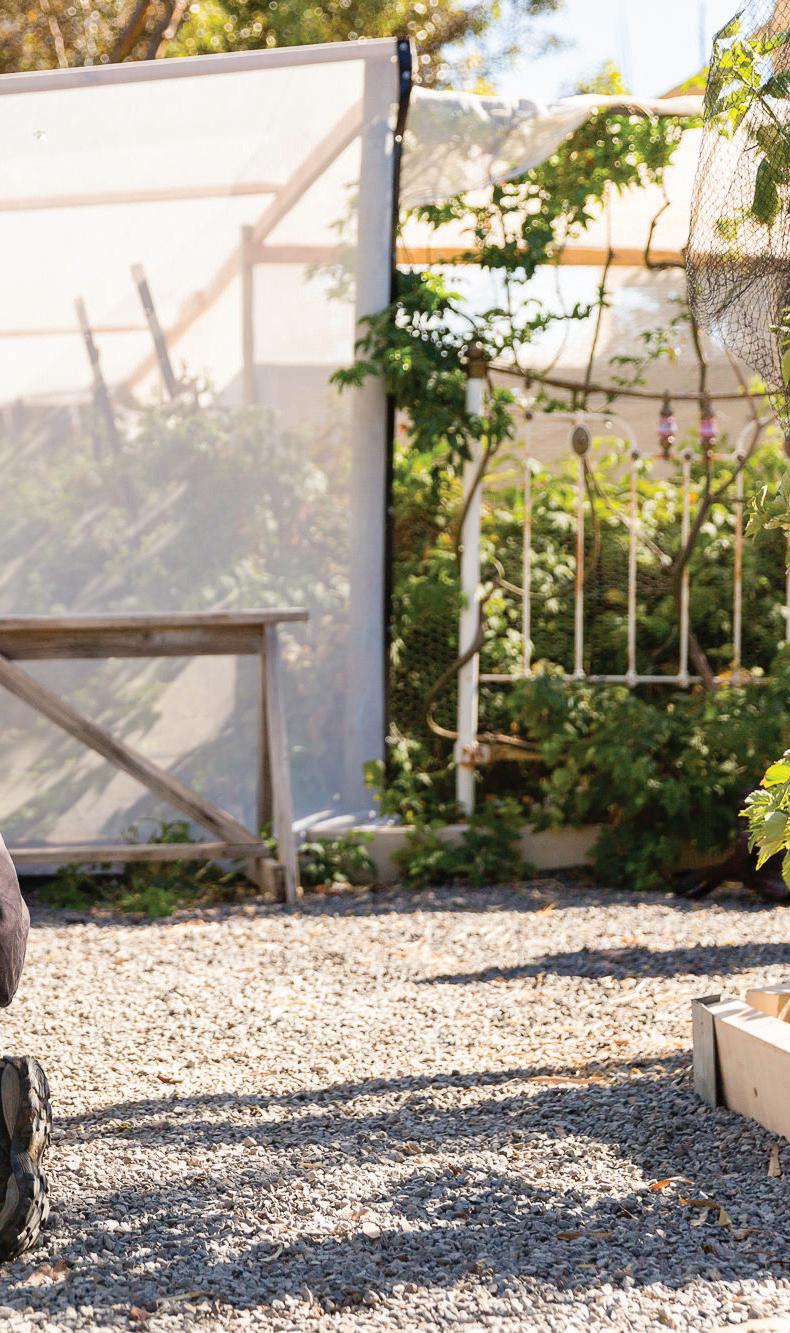
GWMWater has enhanced customer experience with the launch of a Customer Portal – empowering customers with more information about their water supply than ever before. Available on various electronic devices, the Customer Portal allows customers to view recent and historical water use and set up automatic alerts to notify them of high usage or leaks.

Following completion of the Wimmera Mallee Pipeline and anticipating the future needs of its customers, GWMWater started a journey to become an advanced digital utility. This was largely driven by necessity given the vast geographical footprint of GWMWater’s operational area – covering approximately 25 per cent of Victoria.
Rural customers were upgraded to digital meters between 2015 and 2016, and a customer portal was launched for rural stock and domestic customers later that year. The rural portal allowed customers to track water use against their water allowances, enabling them to make adjustments or trade water as necessary.
The portal also enabled rural landholders to ensure water was running through meters in remote paddocks, without having to physically check them, as well as alerting them to potential leaks where water should not be passing through the meter.
In 2019, GWMWater started replacing 29,000 water meters with an all-in-one device and retrofitted 3,000 meters with an electronic device across the corporation's urban operational area.
GWMWater’s Executive Manager of Strategic Planning and Performance, Sally Marshall, led a cross-functional team to add value for urban customers by delivering enhancements to the customer portal.
The team collated and considered customer feedback and enhancement suggestions to inform the development of the portal, with primary areas of focus being: streamlining the sign-up process, ‘nickname’ functionality, water use in dollar value, and displaying water restrictions and where meters have non-potable supplies.
A two-factor authentication feature was implemented and eliminated the need for customers to complete a two-step process to set up a customer portal login and add their accounts using a registration code.
The new process maps customer data from GWMWater’s backend systems to issue an email directly to the customer, who simply activates their account by creating a password and then verifies their identity using a code sent to them by SMS message. Each water account ‘owned’ by that customer in GWMWater’s system is automatically displayed.
“Setting up an automatic sign-up process not only improves the customer experience, but the two-factor authentication process is validating and growing our database which will enable us to develop a more proactive customer communication strategy in the future,” Mrs Marshall said.
GWMWater implemented a phased rollout to urban customers to ensure the organisation’s resources and capability matched the anticipated demand.
Mrs Marshall said the first phase was a pilot program where 200 ‘early adopters’ were recruited to provide feedback on the sign-up process and functionality of the portal.
“We wanted to make sure we captured a cross-section of customers based on demographics and customer types to test the portal, and our first port of call was urban customers who had already attempted to sign up to the rural portal,” she said.
Participants were surveyed and asked to provide feedback on their experience. Of the 27 per cent of participants who completed the survey, 98 per cent said the automatic sign-up process was easy to follow, while two per cent required additional support from GWMWater to complete the process.
Eighty per cent of survey participants reported that they had logged back into the portal since completing the sign-up process and, 25 per cent had set up high water use or leak alerts. Ninety-two per cent said they would recommend the GWMWater Customer Portal to a friend.
At the completion of the pilot, 90 per cent of those registered for the pilot had successfully signed up for the portal. GWMWater used the learnings from the pilot to refine features and support materials prior to the rollout to the broader customer base.
GWMWater has issued activation to more than 10,000 urban customers to date, with a take-up rate of roughly 30 per cent.
Customers receive a ‘warm-up’ email introducing the portal and providing information and support materials before they receive their activation link. The new sign-up process increased the sign-up rate and, along with implementing learnings from the pilot, has reduced the number of calls for assistance.
Urban customers now have access to more information about their water consumption than ever before.
Graeme Chenoweth from Murtoa said, “Being able to track our water usage will be handy for us to help spot any leaks, especially while we’re away. It will also be interesting to see how much water we’re using in the garden and the pool in warmer months.”
Since rollout to urban customers commenced in February the Customer Portal has issued:
• 1,334 high consumption alerts
• 695 potential leak alerts
• 161 low consumption alerts
• 155 rural water allowance alert
• 213 monthly water usage reports
• 762 weekly water usage reports
Over time, GWMWater will track Customer Portal take-up and use across key customer segments to understand who is adopting the portal and how it could deliver more tailored information and experiences.
And, for those less inclined to use the portal, digital meters enable the ability for customer service staff to proactively contact customers by phone to alert them to potential leaks.
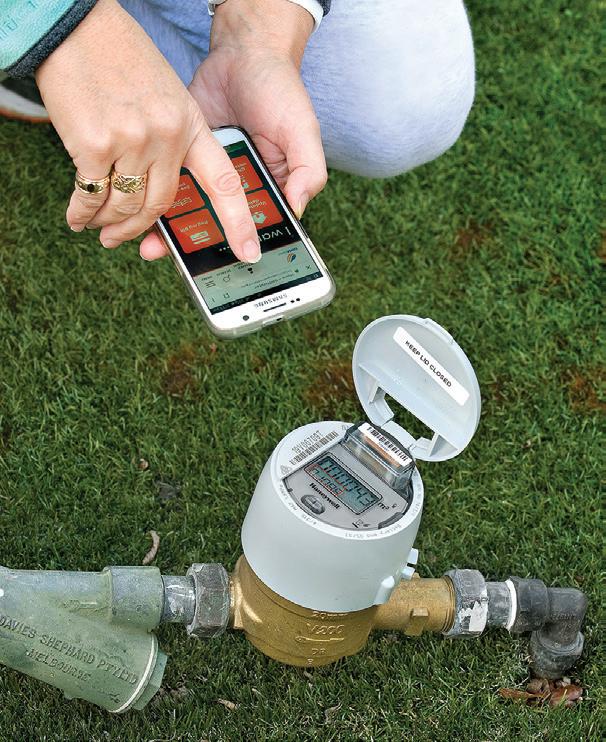


Early in any innovation wave, there tends to be a lot of hype and even more buzz words. This leads to wild interpretations and claims with growing confusion in the market. That said, as this technology has not passed the maturity curve, there remains debate on definitions between institutions, vendors and even countries.
Digitisation and digitalisation we can take directly from the Gartner IT Glossary1, whereas digital transformation is more subjective.
Digitisation is the process of changing from analogue to digital form, also known as digital enablement. Said another way, digitisation takes an analogue process and changes it to a digital form without any different in-kind changes to the process itself.
Digitalisation is the use of digital technologies to change a business model and provide new revenue and value-producing opportunities; it is the process of moving to a digital business.
Digital transformation is understood as the transition stage between these two, however it offers much more than that. It is where digital data and processes are combined and new models can be created that can substantially change the entire business.
There was a time that music media was distributed on vinyl disks through bricks and mortar retail stores. We saw advancement into cassette tapes and eventually compact disks. It was not until music was widely available in mp3 that you could say that the process was digitised.
Then the big “A Company” applied this digitised media to their business processes and developed an end-to-end digital system that included marketing, purchasing, payment and delivery of media and hardware to enjoy it. You could call this a fully digitalised system.
The digital transformation came about when other companies were able to analyse this process along with new developments, and design new business models that transformed their own companies and disrupted the entire industry. This of course was on-demand music streaming. Whilst still an end-to-end digitalised system, the real value was created in the transformation.
Effectively digitisation took place from way back in the 1980s, where PLC or DCS systems were implemented. However, like the example above, the traditional signals were converted from analogue to digital, and after processing, returned back to analogue for the final control element. We saved on individual controllers or relay logic, and we were now able to collect and log data in our SCADA systems and even generate reports.
Over the next thirty-five years or so, not a lot changed. The controllers became more powerful, networks developed savings on cabling and installation time, and some devices could even be set up in a digital manner. But under the surface, we were still performing digital control on converted analogue signals.
Whether the application is chlorine dosing, filling level control or flow control, fundamentally the process is the same. Below is a series of examples that explain this evolution using temperature, steam and a shutoff valve with feedback.
Figure 1 shows the automation of a single heat exchanger including a temperature sensor, a modulating steam valve and a shutoff valve with feedback. These are connected to a modern PLC and SCADA system.
DIGITISED EXAMPLE


This example is not one from our history books; it still represents around 70 per cent of today’s installations.
To bring this ‘digitised’ system to a fully ‘digitalised’ system, we start with digital field equipment that no longer needs to be converted, and we connect via a single distributed Ethernet cable right back to the PLC. This is shown in Figure 2
As is clearly visible, the wiring complexity is drastically simplified and there is no distributed IO panel required at all. The entire system can be wired without any terminations at all or even the need for a screwdriver. Reverting to our digitalisation definition, value is created through design simplicity and increased accuracy, as well as the savings in installation and running cost.
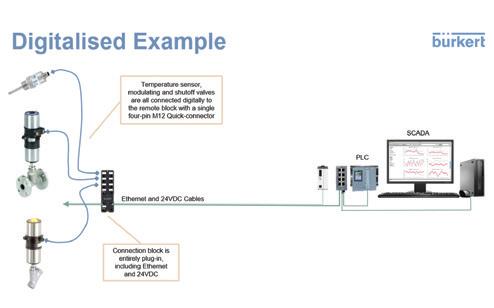
Whilst the above example is a strong enough argument on its own to generate a change in industry, we are yet to consider the ‘transformation’ part. A fully digitalised installation offers a lot more than just upfront cost savings.
The new wave of digital field equipment is also compliant with the latest demands of Industry 4.0 or IIoT.
As well as the process signals needed for control (cyclic data) they offer bi-directional device management information (acyclic data) including asset management and advanced diagnostics (Figure 3). This data seamlessly integrates into your control system, engineering workstation, or even directly to cloud-based systems.
DIGITALISED CONNECTIVITY

Continuing with the above application example, let us consider just the shutoff valve. In the original system, we would know what signal we were sending to it and, thanks to integrated feedback, we would know whether it is open or closed. If we send it a signal and it doesn’t transition in the allotted time, we generate an alarm.
Consider now a digitally connected valve which has been included in a diagnostic page in the site SCADA system (Figure 4). Immediately the service engineer can see the valve number and type, the voltage supply, temperature, the stroke length, cycle time and number of operations performed, as well as how long the valve has been installed and how many operations it has performed. In addition, if replacements are required, he has the ID number, hardware and software versions at hand.
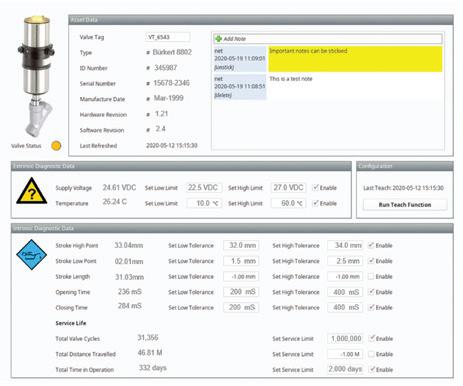
Eventually the market will move towards digital twins or cyber physical systems. In these systems you will have complete status and diagnostic information on components and even complete systems constantly available in the cloud.
Technically, only you can answer this question, as it relates particularly to your own business and the daily operational issues that are relevant to you. Perhaps you have 2,000 such valves and sensors on site, perhaps you have limited service personnel, and perhaps you are operating this site from 3,000km away. The digitalised system simply delivers a set of tools along with advanced capabilities; it is really up to you how these tools are used to solve your particular business challenges.

Get a clear picture of immediate bushfire risk with the Australian Flammability Monitoring System.

The world’s first near real-time web application for assessing how dry vegetation is, and in turn, how flammable, can help the utility sector better understand the risk bushfires pose to their infrastructure.
Developed through the Bushfire and Natural Hazards CRC’s Mapping bushfire hazard and impacts project, the Australian Flammability Monitoring System (AFMS) uses satellite data to collect spatial information on live moisture content and flammability, allowing users to see where there are high levels of vegetation and soil dryness – perfect conditions for a bushfire.
It displays this information on an interactive online map, making it easier and faster to access. Freely accessible, the system is already being used by fire and land managers around Australia, and would also benefit energy, water and communications utilities whose assets may be located in a bushfireprone area.
“The displayed fuel moisture content and flammability maps have been generated using freely available satellite data,” Dr Marta Yebra, project leader from the Australian National University, said.
“If you compare the current dryness values for a location with the values of previous weeks or months, you can have a sense of how much drier the land is than it was last season, for example, and that may give you an idea of how much danger could be in your specific area.”
The first online mapping tool of its kind to be introduced in Australia, the AFMS is garnering attention and interest not just in Australia, but internationally as well. The AFMS is also being used in Europe, South Africa, Argentina, the US and China.
Emergency services and land management agencies including the New South Wales Rural Fire Service, ACT Parks and Conservation Service, and the Queensland Fire and Emergency Services have been using the AFMS to make informed decisions about where a fire may ignite and spread, and what areas should be prioritised when sending resources and equipment to fight fires.
Real-time insights from the AFMS were fed into operational decisions at the NSW Rural Fire Service during the 2019/20 bushfire season, with Dr Yebra working at their headquarters during a peak fire danger period in November 2019.
Dr Yebra has spent time with the RFS, assisting them with using the AFMS to analyse data on vegetation conditions and how these conditions might affect bushfire spread.
The data available through the system is invaluable to fire and land management agencies, explained Dr Adam Leavesley, Bushfire Research Utilisation Manager at the ACT Parks and Conservation Service.

DR MARTA YEBRA (RIGHT) EXAMINES THE BUSH AFTER A PRESCRIBED BURN WITH DR MATT HAYNE FROM THE BUSHFIRE AND NATURAL HAZARDS CRC AND DR ADAM LEAVESLEY.
CREDIT: GEOFF CARY

“Fire managers across Australia need to understand when our landscape is in a position that is either not going to burn, burn in a way that will allow us to control a fire, or
when conditions are so dry that if a fire starts it will be very dangerous and difficult to control,” Dr Leavesley said.

“The Australian Flammability Monitoring System gives us a really good guide across the whole country to how we expect fire to behave on any particular day. This helps agencies position resources during a bushfire, keeping our people safe, and also with prescribed burn planning, particularly in mountainous locations where flammability changes depending on which side of a mountain you are on.
“It has been an amazing partnership with the research team. It is great quality science from a team that is driven by wanting to see their work make an impact – that has been the key to getting us to this stage.”
Recognised with the Outstanding Achievement in Research Utilisation Award from the CRC in 2019, the AFMS is accessible at http://anuwald.science/afms.
You can learn more about the research behind the AFMS in the CRC’s Hazard Note 88: www.bnhcrc.com.au/hazardnotes/88.
Functioning natural ecosystems are vital to maintaining healthy water catchments, and a critical part of how water utilities can manage the delivery of safe, clean drinking water to customers.

As one of South Australia's largest landholders, SA Water manages around 76,000 hectares of land across the state, with around 20,000 hectares reservoir reserves land – the equivalent size of 10,000 AFL football fields.
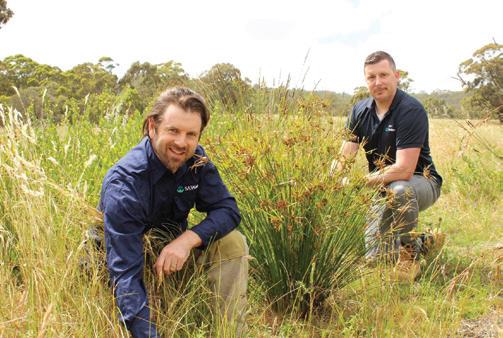
Using the skill and expertise of a dedicated environment team, SA Water strives to be a proactive environmental leader by using a wide variety of land management practices to protect water quality and sustain a thriving natural environment.
A key focus of SA Water's land management practices is bushfire management, with the utility's long-term approach involving ongoing activities of prevention, preparedness, response and recovery.
Prescribed burning is a critical component of managing bushfire risk on SA Water land, and a strategic burning program, in partnership with the South Australian Department for Environment and Water and relevant fire authorities, is the most effective and environmentally sensitive way to reduce fuel loads across large or complex landscapes.
The importance of SA Water's fire management practices was recently highlighted by bushfire damage to part of South Australia's largest reservoir reserve, Mount Bold, with an estimated 1,905 hectares of the 5,500 hectare reserve burnt during the Cherry Gardens fire in January 2021.
SA Water's Manager Land, Catchments and Recreation, Brooke Swaffer, said the environment team acted quickly to minimise the fire's impact on water quality contained in the 46 billion-litre capacity reservoir.
“Burnt ash and other organic matter caused by fires like we faced at Mount Bold can cause soil erosion and sediment runoff into water storages, proving a challenge for treatment plant operations," Ms Swaffer said.
“Following detailed assessments on the fire ground – and when safe to do so – our team assisted in creating sediment barriers out of coconut fibre throughout the network of creek beds, designed to prevent the run-off of organic material
into the water source, while allowing native vegetation to regenerate in the soil.
“These structures are considered an interim solution until such time that the native vegetation regenerates, stabilises the ground, and can once again provide the natural filtering properties a native vegetated catchment provides.
“The end result of these measures, together with activities like previous prescribed burning activities at Mount Bold and up-to-date fire break and access track management, ensured our drinking water supply remained safe to drink.
“As a further water quality protection measure, the flexibility of our water network also enabled us to, as a precaution, temporarily reduce reliance on Mount Bold for the supply of drinking water and we also utilised other existing sources including the Adelaide Desalination Plant to supplement supply.”
One of the pillars of SA Water's environmental focus is creating a lasting and positive impact on the natural world through sustainable and holistic solutions.
Revegetation of reservoir reserves with native Australian plants and grasses has proven to be an important aspect in creating thriving ecosystems, preventing soil erosion and managing weeds, which in turn work together to improve the quality of water supplied to customers in a costeffective way.
“Each revegetation project ranges in size and scope, from smaller sites like our Little Para Reservoir, to a largescale grassy woodland creation at our Millbrook Reservoir, established with more than 2.2 million native grasses and 80 different plant species," Ms Swaffer said.
“Most recently, our vegetation specialists have planted more than 100 species of native plants and grasses, which are included in a unique project that seeks to reconstruct a thriving grassy woodland which will protect soils in the Clarendon Weir catchment, near the Mount Bold Reservoir.
“The end product has revitalised the land into a thriving ecosystem lush with natives, and forms an important habitat for many species of native birds, reptiles and insects.”
Using new and proven technology to continually improve services for its customers, such as the rapid evolution of drones, is also now a part of SA Water’s way of thinking.
“Like many parts of the business, our team has embraced unmanned aerial vehicles to assist in a range of activities and achieve best results for the South Australian environment," Ms Swaffer said.
“So far, we have successfully implemented drone technology for vegetation surveys and weed mapping, pre and post-fire vegetation monitoring, and undertaking surveys as part of animal management using thermal cameras.
“As we continue to develop and embed the capability of drones, we’re learning more each day about how they can be applied to the work we do.”
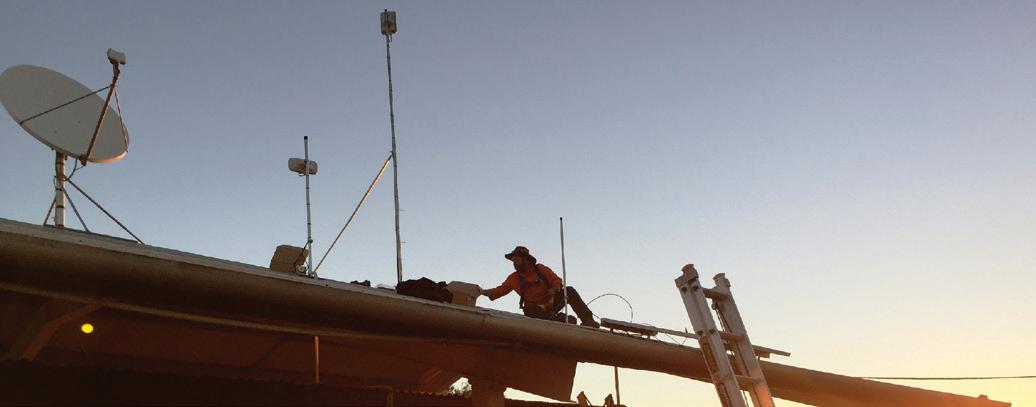
Australian Private Networks (APN) supplies fixed and portable satellite internet services to allow internet connectivity at utility sites in even the most remote Australian locations. APN was recently contracted by State Gas Limited (ASX:GAS) to devise a solution for its remote gas extraction operations. Located in central Queensland, its projects are in remote places lacking fixed-line communications services with no mobile coverage.
With the number of well sites growing, State Gas required an IoT monitoring solution that could be transported between locations as new well sites are commissioned, and existing ones decommissioned.
In addition to the well sites themselves, a camp is situated on-site, and is the base of operations for the project. Anywhere between two and ten employees are stationed on location at any given time.
State Gas required a satellite connectivity solution that could connect their workers online at the campsite and connect active well sites for continuous IoT remote site monitoring.
APN worked with State Gas to determine the necessary PIR speeds and contention ratios that would provide the project's optimal results, both at the camp and for the well sites.
With over 1TB required for the camp per month and up to 5GB for each well site, APN’s Unleashed unlimited data satellite broadband and IoT monitoring services were the perfect fit for the requirements.
The camp would be connected on a 30mbps/5mbps connection, with a 20:1 contention ratio, ensuring workers would have the connectivity they required.
For the well sites, APN devised an IoT monitoring solution tailored to the unique requirements of the internet services. With a 5mbps/5mbps service and a 35:1 contention ratio, the sites would be able to provide round-the-clock data back to the camp and offsite servers whilst maximising each service's cost-effectiveness.
With each service, APN included business-grade satellite modems, WiFi routers, and its in-house built SatFinder unit.

SatFinder (pictured above) allows end-users to manually move the satellite dish and realign it with ease at a new location.
Following installation of services at the sites, staff are now able to complete their daily business activities online without restriction, and without any limit to their data use.
They can engage in MS Teams meetings with company HQ and even have the freedom to use the service in their downtime, without worrying about using up a limited data allowance.
The IoT remote monitoring solution enabled through connected well sites has led to significant increases in productivity, with monitoring now able to be completed from the camp instead of requiring an in-person trip out to the wells to collect the necessary data.
Maintenance costs have also been reduced as a result of remote monitoring, with maintenance teams no longer needing to do regular physical inspections of well sites to ensure they are fully operational.
“The APN solution gives us the connectivity we need to get the job done on-site, with the flexibility to shuffle around our well site services as we require, without external assistance The ability to relocate services with ease and with minimal fuss is a real competitive advantage for us�”
- Field Manager, State Gas (QLD)
To find out what bespoke solutions Australian Private Networks can offer your unique remote communications challenges, call (03) 8566 8312 or learn more at www.apn.net.au.

Australian Private Networks supplies fixed and portable internet solutions for utility operators in remote Australia.
Our solutions include:
Unlimited data plans
Low contention rates
Fixed or portable hardware
Solar, self-sufficient options
Optional Extended Wi-Fi and Public Wi-Fi
Installation & Field Support Australia-wide
O Our solutions overcome the communications limitations of operating in remote locations.
With our internet services, staff can access online business tools, operations can integrate remote monitoring tools and utilise IoT technologies.
No matter your communications challenge, we can design bespoke solutions to meet your unique requirements.
For more information contact our Corporate Sales team or visit: apn.net.au


CREATING A RISK-BASED APPROACH TO DAM MONITORING AND MAINTENANCE
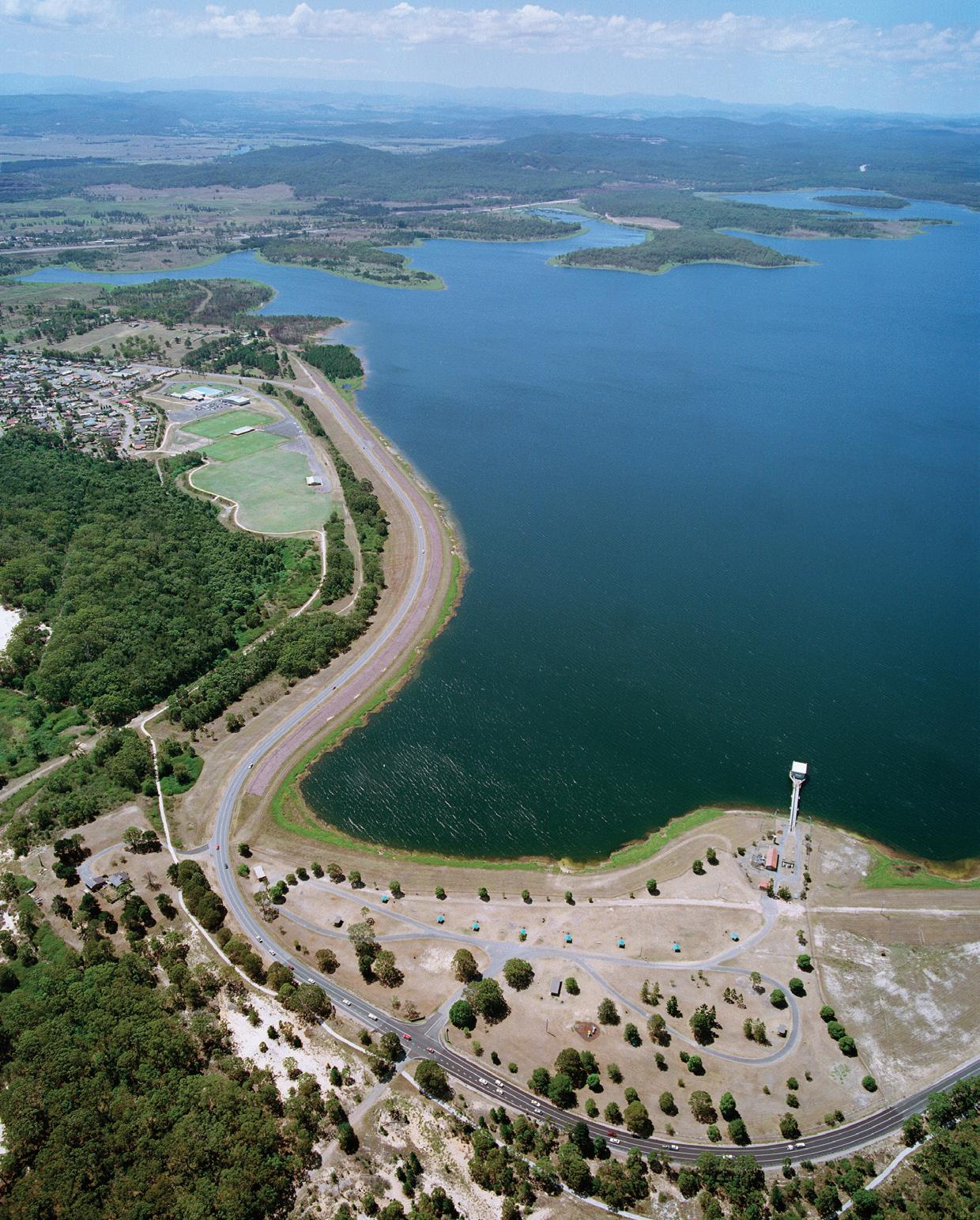
Facing ongoing influences such as climate change, dam owners are under increasing pressure to ensure the safety of their assets. The consequences of failure are becoming more significant too, in light of factors like downstream urbanisation. With asset owners integrating new solutions to help them rise to the challenge, Hunter Water has turned its eyes skyward in a bid to advance its asset monitoring performance to the next level.
As dam assets age, accurate monitoring becomes increasingly important to ensure safety. With the impact of broad trends such as increasing urbanisation and global warming, the challenges facing dam owners and the potential consequences of failure are mounting.
Urbanisation, for example, is seeing more people living downstream of a dam than ever before. This represents a significant increase in the consequences of failure and associated catastrophic risk. Meanwhile, global warming is introducing far more volatility to weather events, making them much harder to predict and manage.
“The biggest problem with climate change, particularly with dams, is the unpredictability of precipitation causing too much or too little water,” Mark Maslin, Professor of Earth System Science at University College London, said.
“Climate change is already causing more intense rainfall bursts, which are shorter and more unpredictable and are a major worry for dam owners.”
Under the influence of climate change, Australia's already highly variable rainfall is likely to become far less predictable with one in 20-year maximum rainfall events predicted to become one in 15 or even five-year events by the end of the century.
At the same time, while dams are extremely long-lived, many are already decades old. Nonetheless, even dams which have been constructed relatively recently can present problems. The spillway at Paradise Dam near Bundaberg, QLD, was damaged during 2013. This dam was only built in 2005.
For dam safety engineers the growing consequences and changing risks have prompted a reappraisal. However, the need for comprehensive monitoring presents a number of challenges.
“Dams are very large assets, and very high or extreme consequences result if they are to fail,” Daniel Turnbull, Dam Safety Engineer at Hunter Water, explained.
Among other assets, Mr Turnbull is responsible for the Grahamstown Dam in NSW. Constructed between 1955 and 1965, Grahamstown holds a reservoir of some 182,305 million litres behind a 5km-long embankment.

“You're doing your best to monitor all the key points, but it is very hard to have absolute coverage of a dam,” Mr Turnbull said.
“It's not physically practical to monitor every aspect of the dam, especially with a dam like Grahamstown where we've got over 5km of the embankment. That's one of the
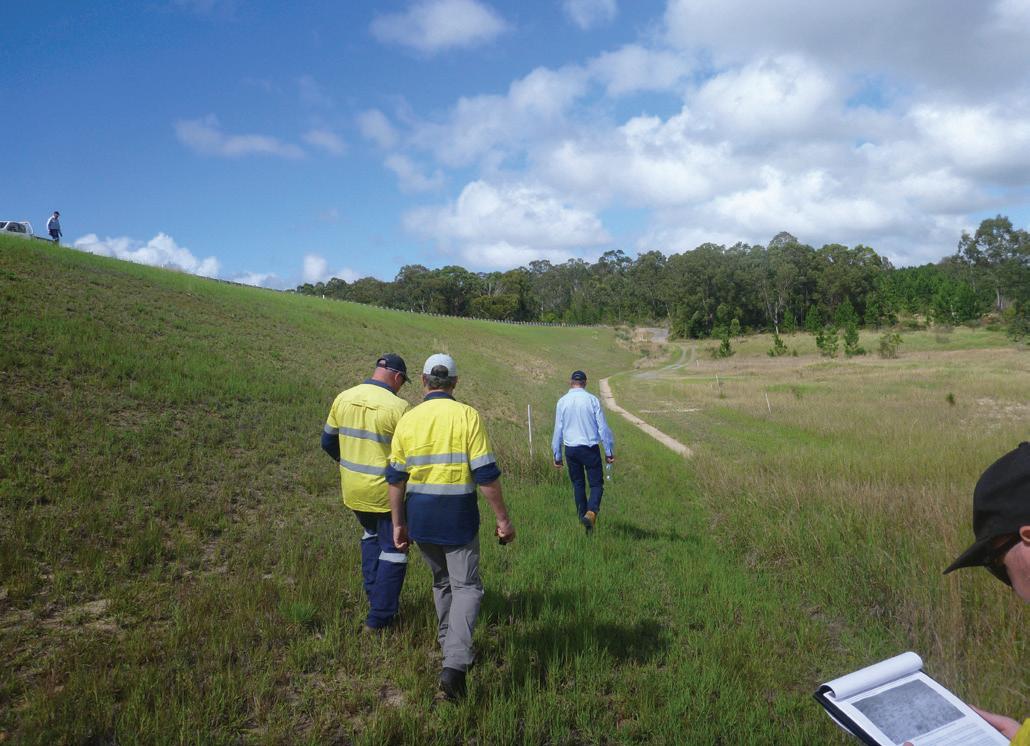

big challenges we face, making sure that our monitoring is targeted and effective.”
Faced with these challenges to effective monitoring and keen to ensure its assets are safe, Hunter Water began exploring alternative approaches to the traditional measurement survey and visual inspection.
“We were looking at other options that we could implement where we would actually get some measurements and start plotting trends,” Mr Turnbull said.
In September 2020, Hunter Water signed a three-year contract with UK-based Rezatec to provide satellite-based data and geospatial analytics to monitor structural and environmental changes at Grahamstown.
A three-year retrospective data analysis establishes a baseline of normal behaviour for the dam and therefore allows anomalies, where observations are outside the threshold of acceptable, to be identified.
Data from Hunter Water, such as water level information affecting movement, is overlaid to help pinpoint exactly where issues are down to a few millimetres of displacement. In addition to precise movement, satellite data can also pick up other indicators of problems with dam infrastructure, such as vegetation. Vegetation is a good indicator of seepage, for example.
Adopting high-tech observations from space enables resources to be more efficiently focused on potential problems before they become significant issues. The Hunter Water team still carries out routine daily inspections, with team members visually noting any changes.
“We wanted something to compliment that,” Mr Turnbull added.
“Now, if visual monitoring picks up that there's a potential issue, we're able to refer to satellite monitoring and reveal if there is something measurable to support that theory.”
The use of frequent millimetric surveys allows asset owners to go beyond regulatory requirements to establish a key measure to assess asset risk.
“Regulations for an extreme consequence category dam require a movement survey once a year, for a high consequence category dam, then it's every two years. We wanted to have a bit more scrutiny than the bare minimum that we're required to,” Mr Turnbull said.
Satellite observations also address the challenge to increase frequency of monitoring remote dam assets.
“In Australia, we've got some dams in rural areas which take several hours’ drive or flights to get there. In terms of being able to monitor those sites without having to send a team of surveyors out there to do it is very attractive,” Mr Turnbull said.
More importantly, though, satellite observations are repeatable, testable and achievable at a much higher frequency and more accurately than physically sending a survey team out to a site. These key abilities are becoming far more significant considering climate change and other megatrends like urbanisation.
“With carefully thought-through monitoring, you should be able to understand exactly how your dam or dams are performing, so you know what is normal and, more importantly, what is not,” Ian Garside, Director at ProjectMax, one of the project partners, said.
“Robust monitoring can go further and allow you to manage the risks across your reservoir portfolio, helping to drive your business and regulation in a targeted way. Possibly most importantly though, good monitoring takes you from managing your dams reactively to proactively with all the benefits that will bring.”
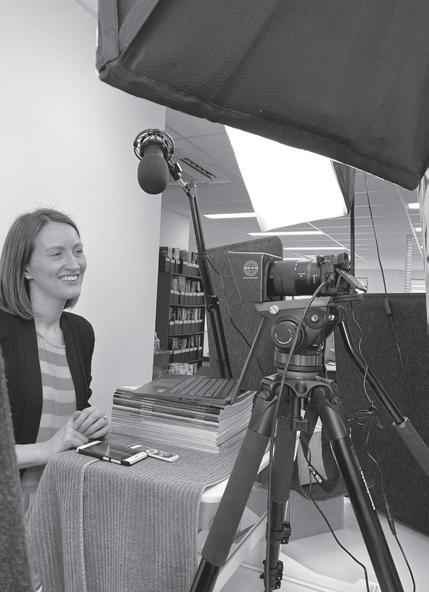
Combining our experience in publishing, live events, digital marketing and video production, Monkey Media has the capability to deliver a range of online events for your organisation.



Specialising in the energy, infrastructure and utility sectors, we combine our expert knowledge in these fields with our behind-the-scenes knowhow to help you deliver your events in a range of online formats.
We work closely with our partners to understand why and how you want to connect with your audience online, and can recommend the right solution to help you cut through and achieve the high levels of audience engagement and participation you’re looking for.
Some of the online events we can help you deliver include:
Webinars
Virtual conferences
Awards nights
Round tables
Online learning
Hybrid virtual/live events for a complete online event solution
For many years, fats, oils and greases (FOG) have been a significant problem in sewer networks resulting in surcharge incidents to stakeholders if left unchecked. These incidents are generally confined to areas where there are high concentrations of fastfood outlets and restaurants.
FLUSHER II is a simple solution designed to maintain the serviceability of underperforming sewer catchments.
FLUSHER II attenuates effluent for a short period and at a predetermined hydraulic head, an automated gate releases a high-volume, low-pressure column of effluent through the catchment network, scouring and mobilising sediment downstream to prevent future silt buildups and FOG blockages.
Upstream will encounter the most significant increase in velocity, and this increase can be varied by adjusting the FLUSHER II to ensure the right effect has been achieved.
FOG surcharge conditions result in loss of hydraulic performance, and the following diagram shows extracts from a Hydraulic Assessment undertaken by Atkins Global demonstrating the benefits of installing the FLUSHER II.

A passive gate device for controlling and maximising hydraulic flow in sewers
• Reduces operational costs
– No more water jet sewer cleaning
– No more Silt & Debris removal
– Less surcharge & blockages
• Installed in Maintenance Holes
– Easy to install
– Easy to maintain
– For DN150 to DN450 sewer pipes
• Resistant to rag jamming and blocking
• Inherently “fail safe” during storms
• Data Logger and Telemetry Module
– Know what’s happening and when
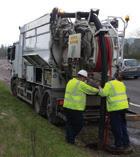
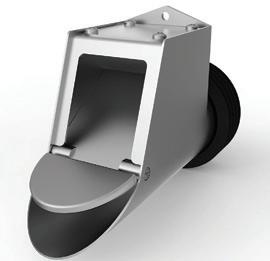
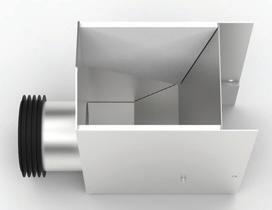
enquiries@aussietrenchless.com
www.aussietrenchless.com

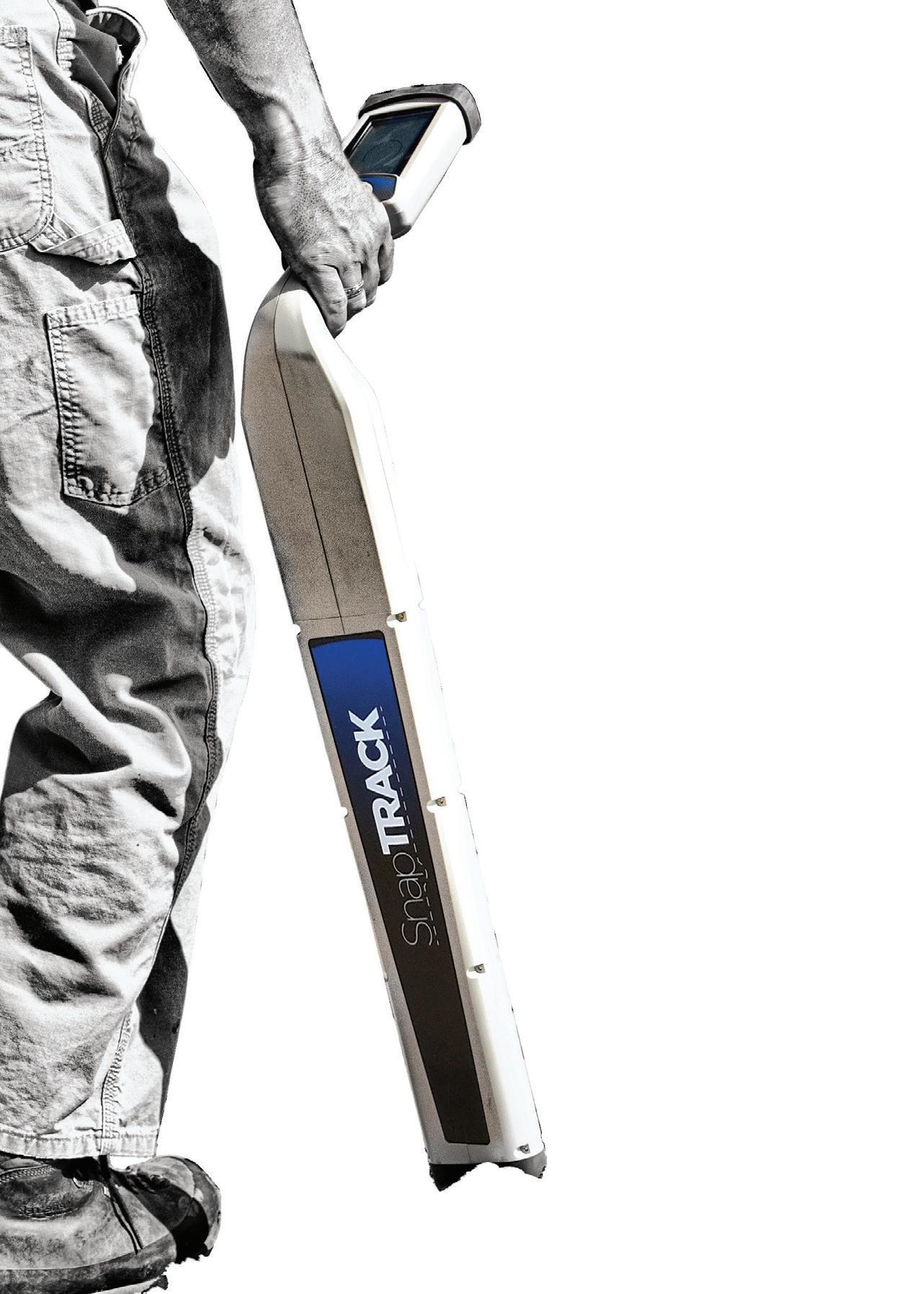

Imagine a simple solution for fleet management which maximises efficiency, minimises cost and improves the security and safety of your vehicles and drivers.
Would you like the solution customised to suit your unique needs?
The answer is two10degrees’ award-winning Global Alerting Platform for Fleet solution, which equips clients with tools for emergency alerting, message routing, location tracking, scheduled reporting, dashboard analytics and much more.
The Global Alerting Platform (GAP) from two10degrees enables users to quickly and easily locate their organisation’s people and things anywhere in the world.
Two10degrees is part of the Australian-owned and -operated Nova Group, the parent company for professional services provider Nova Systems and geospatial firm Geoplex. It has combined its breakthrough technology with some of the world's best dedicated devices and complimentary services to create market-ready solutions.
GAP for Fleet was selected by Essential Energy for its In Vehicle Management System (IVMS) requirements for approximately 2,000 vehicles.
Responsible for building, operating and maintaining the electricity distribution network for regional, rural and remote NSW, Essential Energy has vehicles on the road 24/7.
Following an accelerated installation program, and the fastest GAP for Fleet rollout of this magnitude while also adapting to the challenges of a global pandemic, the system went live in December 2020 providing:
• Real-time location information for 2,000 vehicles using both satellite and cellular networks for full state coverage
• Real-time duress notification from any location
• Accident and rollover reporting with second-by-second data reconstruction
• “Geo-fencing” of high-risk zones, such as areas impacted by fire, flood or extreme weather, alerting the business to teams approaching danger zones, including importing information from emergency services
• Both push (scheduled) and pull reporting of all IVMS performance criteria
• Dashboarding of fleet data, with supporting visualisation of key metrics such as total fleet km per unit time
• System and data integration with existing ERP and other systems, including implementation of single sign-on authentication
Essential Energy’s vision was to “provide an effective and simple solution to lower the driving risk” for its workforce, and those the business shares the roads with. Drivers and business leaders have access to their own reports and are empowered to self-assess and improve driving behaviour using the reporting insights.
“The driver behaviour and fatigue metrics are showing that we are lowering our road risk for our employees and the broader community,” Michael Mills, IVMS Project Manager and Regional Fleet Lead at Essential Energy, said.
“Data based conversations support the improvement, as does the increased awareness of our decision-making and behaviours on the road. Both of these points demonstrate the value an IVMS system can add, to both business and road safety alike.”
Included in the IVMS is a duress “panic” button, with communications across both cellular and satellite networks; so it doesn’t matter where an asset is in the country, a team member can call for emergency assistance.
Operating a fleet involves significant cost and exposure to risk to any business. Doing so in an effective and efficient manner is key to delivering value to the customer. From this perspective, balancing the risk, performance and the cost of the fleet through data based decision-making is vital.
“Essential Energy has been able to utilise the easily accessible metrics provided by the system to support conditionbased asset and maintenance strategies,” Michael Mills said.
“This means adaptive and informed decisions can be made about individual assets, to optimise the cost, risk and performance at both an asset and fleet level, benefiting our customers and broader stakeholders alike.”
Two10degrees is serious about delivering a unique and customised experience for every client – from large to small fleets.
“Our whole platform is designed to be customised. Our focus is on our clients and we work with them to discuss their needs and we configure around that,” Paul Weiss, two10degrees Director Business Development and Alliances, said.
“We offer a unique business solution because we have built the Global Alerting Platform from the ground up to readily connect new devices and communications systems, with customisable applications and APIs that allows us to deliver unique customer solutions that integrate with their existing enterprise systems.
“We serve GAP from Microsoft data centres in the markets we deliver to, ensuring data sovereignty and cloud performance metrics are managed to customer expectations.
“Our development and operations team in Australia assures quality of complex multi-sensor dual-mode installations, responsive implementation of customisations, and timely resolution of any issues as they arise.”
www.two10degrees.com.
Our Global Alerting Platform (GAP) connects, protects, and optimises People & Things. GAP’s “plug & play” architecture allows you to connect any device & utilise any network.
Our GAP vehicle solution, GAP for Fleet, enables you to improve the safety and security of your drivers and vehicles, while optimising your fleet performance and minimising statutory compliance costs.

Every fleet, large or small, can use GAP for Fleet with its visualisation and real-time rules engine to automatically notify fleet operators of safety, statutory and scheduling events.
GAP Reports and GAP Dashboards add a sophisticated suite of reporting and analytics that may be customised to cater for specific industry verticals and larger enterprise use cases.
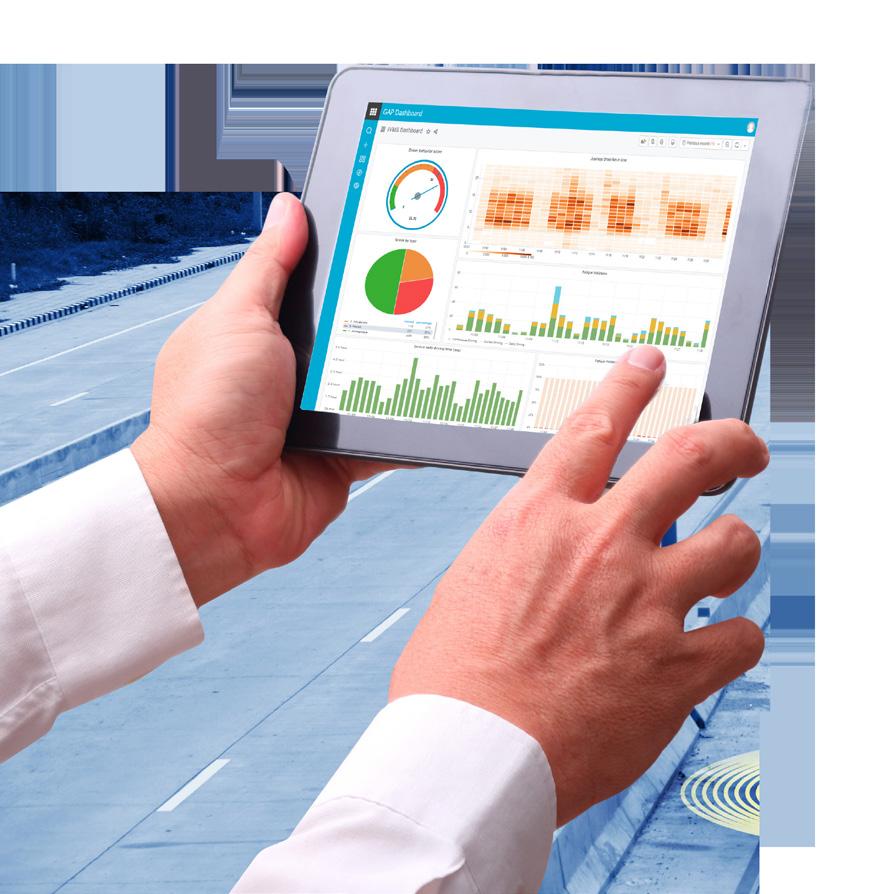
We invite you to contact us to learn more about our current clients in electricity utilities, mining resources, exploration and health, and how GAP for Fleet has been deployed to meet their unique requirements.


Over the next two years, creating more employment pathways and providing a greater role in decision-making forums for people living with disability is among a series of initiatives set to be delivered by SA Water, aimed at ensuring accessible water services for every South Australian.

These initiatives make up 39 key actions in SA Water’s inaugural Disability Access and Inclusion Plan (DAIP) for 2020-22, which was launched in late 2020 and captures the shared experiences and insights from a comprehensive engagement process with the community, customers and staff.
The DAIP builds on the utility’s industry-leading Wider World program implemented in early 2019, underpinned by universal design principles to deliver simplified water bills and meter reading help.
SA Water’s Chief Financial Officer, Jacqueline Guerin, said championing the ability of everyone within the community enables creativity and strength through diversity.
“It’s vital we reduce the barriers faced by people living with disability. We are stronger together and by recognising the value of everyone in our community, we will all create a future where equity and fairness are supported,” Ms Guerin said.
“Our plan is aligned to the themes and priority areas of the South Australian Government’s first Disability Inclusion Plan, Inclusive SA, and includes specific actions such as delivering ‘living with disability’ awareness training to our people and developing partnerships with education providers to promote career opportunities.
“Accessible communities, sustained education, and social and workforce inclusion are fundamental to moving toward an inclusive future and we’re proud to play a role in advocating for equality.”
In Australia, the unemployment rate for working-age people living with a disability is 10 per cent, double that of those without a disability, and the labour force participation rate is only 53 per cent – compared to 83 per cent.
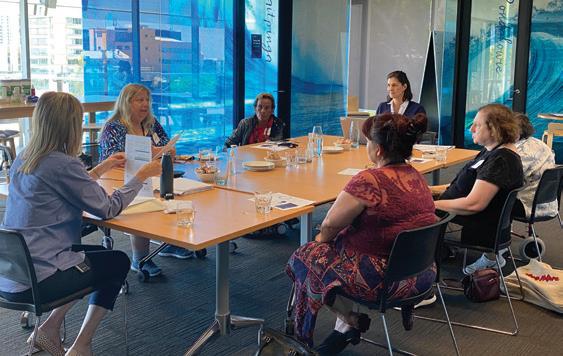
ONE OF SEVERAL FOCUS GROUPS BEING HELD IN 2021 WITH CUSTOMERS LIVING WITH DISABILITY. SOME OF THE THINGS DISCUSSED BY THE FOCUS GROUP INCLUDED BILL DESIGN, EASY READ, ACCESSIBILITY OF INFORMATION CUSTOMERS ARE LOOKING FOR AND WEBSITE ACCESSIBILITY.
“We’re building an even more accessible and inclusive organisation, and our plan will guide how we embrace and celebrate the active role of diversity in the way we operate and deliver safe, reliable water services.
“Key to achieving this is our people, and by shaping a workforce with an inclusive culture that encourages opportunities for everyone, we will mirror the communities we serve and enhance accessibility to our services.
“An internal network group made up of 15 SA Water staff is helping to support DAIP actions and initiatives, ranging from people living with or caring for someone with a disability, to those who want to be advocates within the organisation.
“Through workshops which began earlier this year, we’re also working directly with our customers – including those living with a disability, the elderly and people with culturally and linguistically diverse backgrounds – to identify how we can improve in areas such as accessible communication and access around our temporary worksites.
“Through sharing their lived experiences, we will be able to further develop our understanding of people living with a disability and influence the services we deliver now and into the future.
A multi-disciplinary graduate with SA Water holding a Bachelor of Mathematics and Computer Science, and a Bachelor of Music, Patrick Squire said he’s formed valuable connections and felt supported during his first year.
“The opportunity to work in such a diverse, engaging workplace where I’m valued for my abilities has empowered me to thrive and gain an abundance of experience, while building meaningful relationships with those around me,” Mr Squire said.
“Disability is nothing to shy away from – it should be embraced. We all have unique abilities beyond physical ones, and the strongest part of me is the idea of who I am and what I can achieve.
“Awareness and education inspire change, which will ultimately lead to a positive impact on the lives of our communities and by sharing experiences and learning through people with disability, we can achieve equality.
“This important plan means so much to me personally, as it’s a demonstration of our commitment to ensuring employment opportunities for everyone and that our customers are able to access essential services based on their individual needs.
“I find the easiest way to live with a disability is to surround yourself with people whose presence you enjoy and make you feel included, and there’s no shortage of them within SA Water.”
To read SA Water’s 2020-22 DAIP, visit sawater.com.au.
It goes without saying that safety is a key concern on any construction site, and lots of work goes into mitigating safety risks and ensuring workers get back home safely at the end of the day. However, not all construction methods are equal in terms of safety, with some methods and machines designed to be inherently safer than others, and this holds true for pipeline installations.
It is well known that construction sites where excavation works take place are considered highly dangerous due to the risk of sudden excavation failures which limit the abilities of workers to escape if a collapse were to occur. Any work undertaken in or near shafts or trenches is considered particularly high risk, with the risk level increasing the deeper the excavation is.
Open cut methods of pipeline installation require a large amount of excavation to take place along the entire length of the pipeline route, creating a greater risk to workers and increasing the chance of public interference, especially in urban areas. On the other hand, trenchless methods require very little to no excavation, so this risk is either greatly reduced or designed out of the project.
While amongst trenchless methods, microtunnelling does carry a slightly higher risk due to the need to excavate an entry and exit shaft, excavation is minimal and contained to a small area, making it much safer than open cut. Furthermore, machines such as the AXIS laser guided boring system have been designed with these risks in mind, offering a superior level of operator safety and reducing the risk of materials falling into the pit and hurting workers.
The AXIS has a number of unique safety features that no other microtunnelling machine on the market comes with such as the Falling Object Protective System (FOPS) safety enclosure.
The operator can stay in the FOPS safety enclosure for the duration of the drill and be fully protected from their surrounding environment, protecting them from above should anything fall into the pit and ensuring they aren’t exposed to the outside environment.
The FOPS safety enclosure has been rigorously tested to ensure it can stand the real world conditions of a construction site, with tests showing heavy equipment such as drill rods can fall onto it from as high as ten metres without showing signs of damage.
One safety risk of trenchless pipeline installation is the machine coming in contact with a trench during drilling, which could be housing live wires that weren’t located by DBYD services or pre-project geotechnical surveys.
The AXIS is designed with gages – including a vacuum gauge at the rear of the machine – to alert the operator to condition changes so they can stop the drill and assess the situation to make sure it is safe to proceed.
As well as the pressure gages, the AXIS has an in-built strike alert mechanism that notifies the operator in the instance that the drill comes in contact with a power cable and becomes live.
By alerting the operator if the machine has become live, they can safely remain in the machine until the power source has been deactivated and it is safe to exit.
Undertaking a microtunnelling project using the right equipment can provide a number of safety benefits over other methods of pipeline installation, in particular open cut. Machines such as the AXIS have been designed with safety in mind to help mitigate the potential safety risks associated with excavation and unforeseen conditions below ground that can become a problem if not caught early.
Global microtunnelling pioneer Stuart Harrison is the Managing Director of Edge Underground, where he specialises in on-grade microtunnelling installations with millimetre accuracy.
Stuart is also the inventor of the AXIS Guided Boring system, and he is constantly working to improve the effectiveness of this and other trenchless systems used in the installation of gravity sewers.
To discuss your next microtunnelling installation, contact Stuart on 1300 JACKED or at stuart@edgeunderground.co.
Brisbane Convention & Exhibition Centre
Exhibition and sponsorship opportunities available and selling fast
Go to www.en2021.com.au to find out how you can get involved
early bird closes 172021August Register now
www.EN2021.com.au


All industry personnel involved in the operation and maintenance of water related infrastructure for the management, conveyance, treatment, discharge and reuse of water and trade wastes should attend this conference.
• 20+ speakers over 2 days
• Many of the world’s leading water suppliers exhibiting
• Ixom 2021 Water of Origin - QLD v NSW
• Queensland main tapping competition
Promoting best practice in water management by building the knowledge, skills and networks of operators.
• Listen to the experience of others through the latest “operational” technical and research based information through platform and poster presentations.
• View and discuss the latest advances in technical equipment, products and services with suppliers and trade consultants.
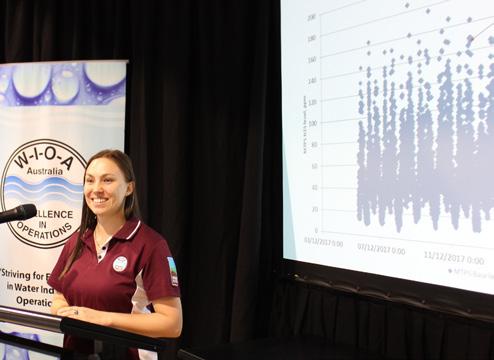
• Update their knowledge and skills through interaction with fellow water industry employees.
Supported by Hosted by Media Partners


Sponsored by




